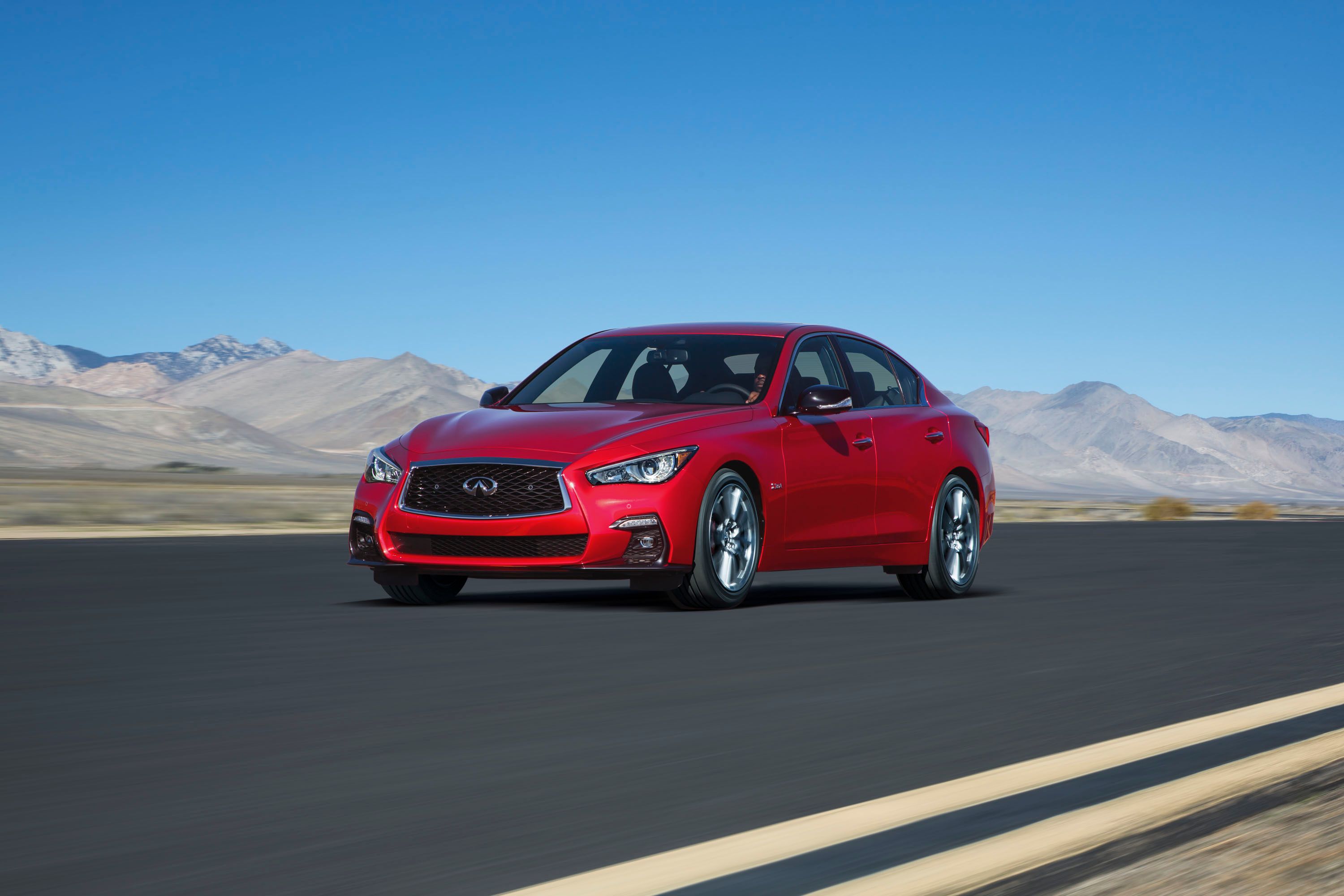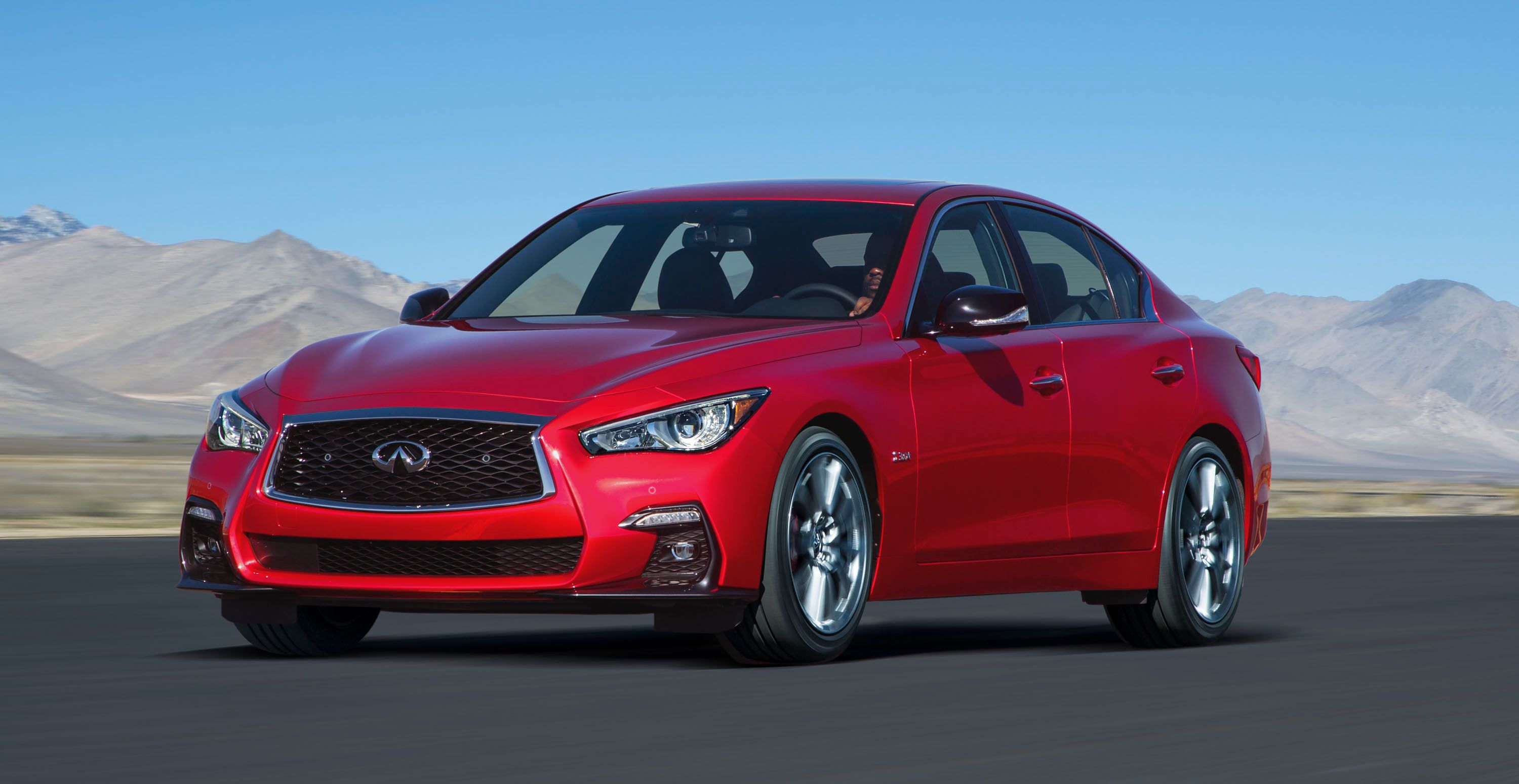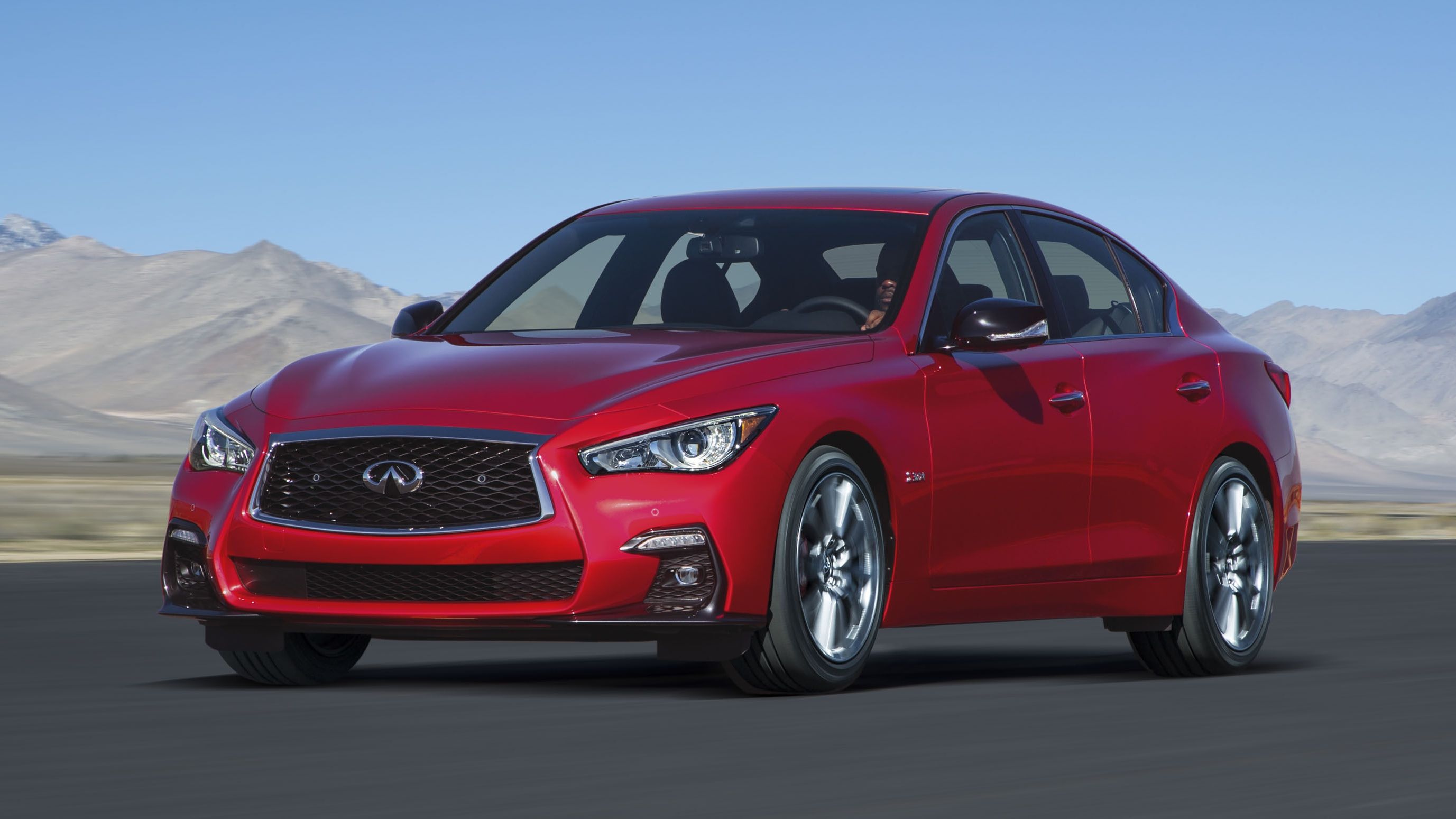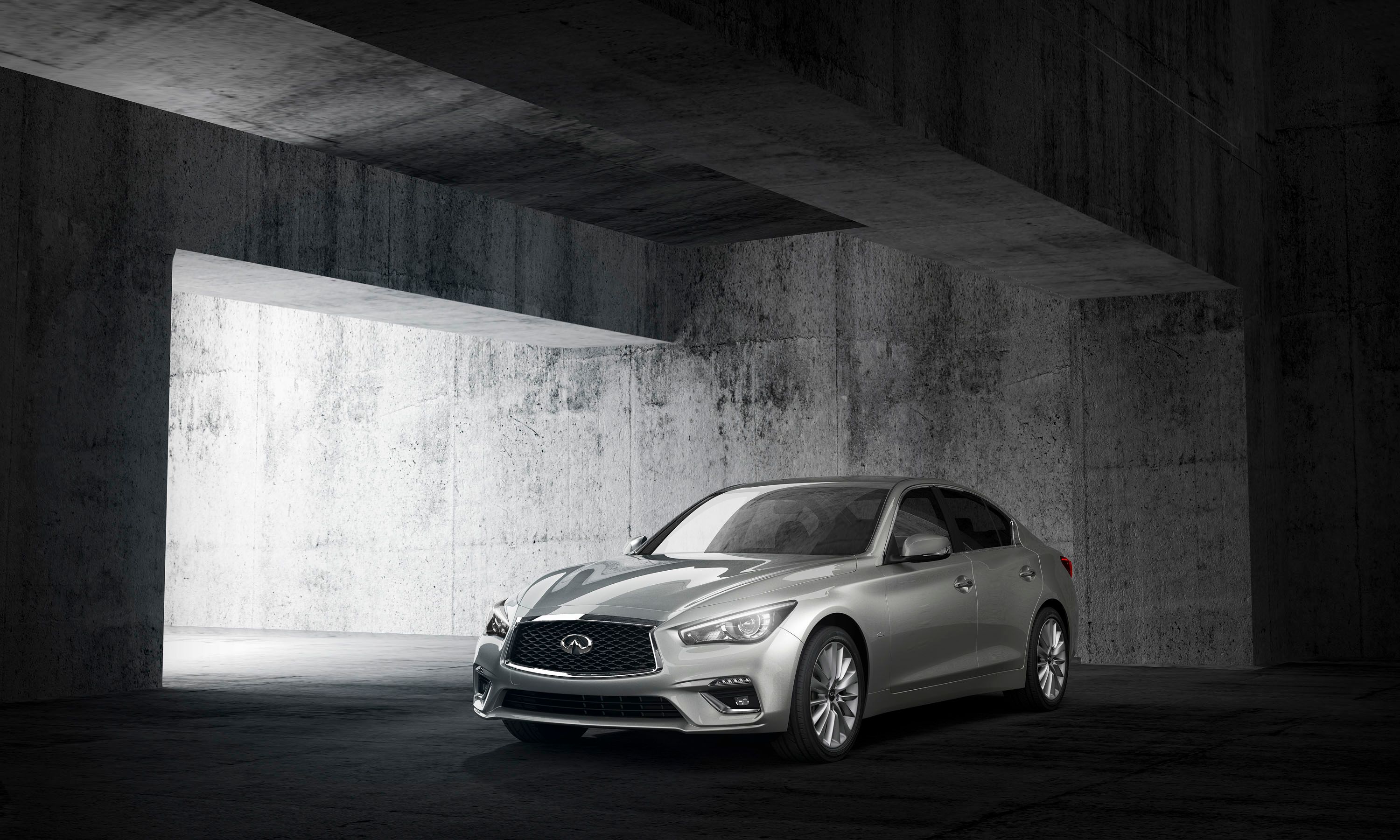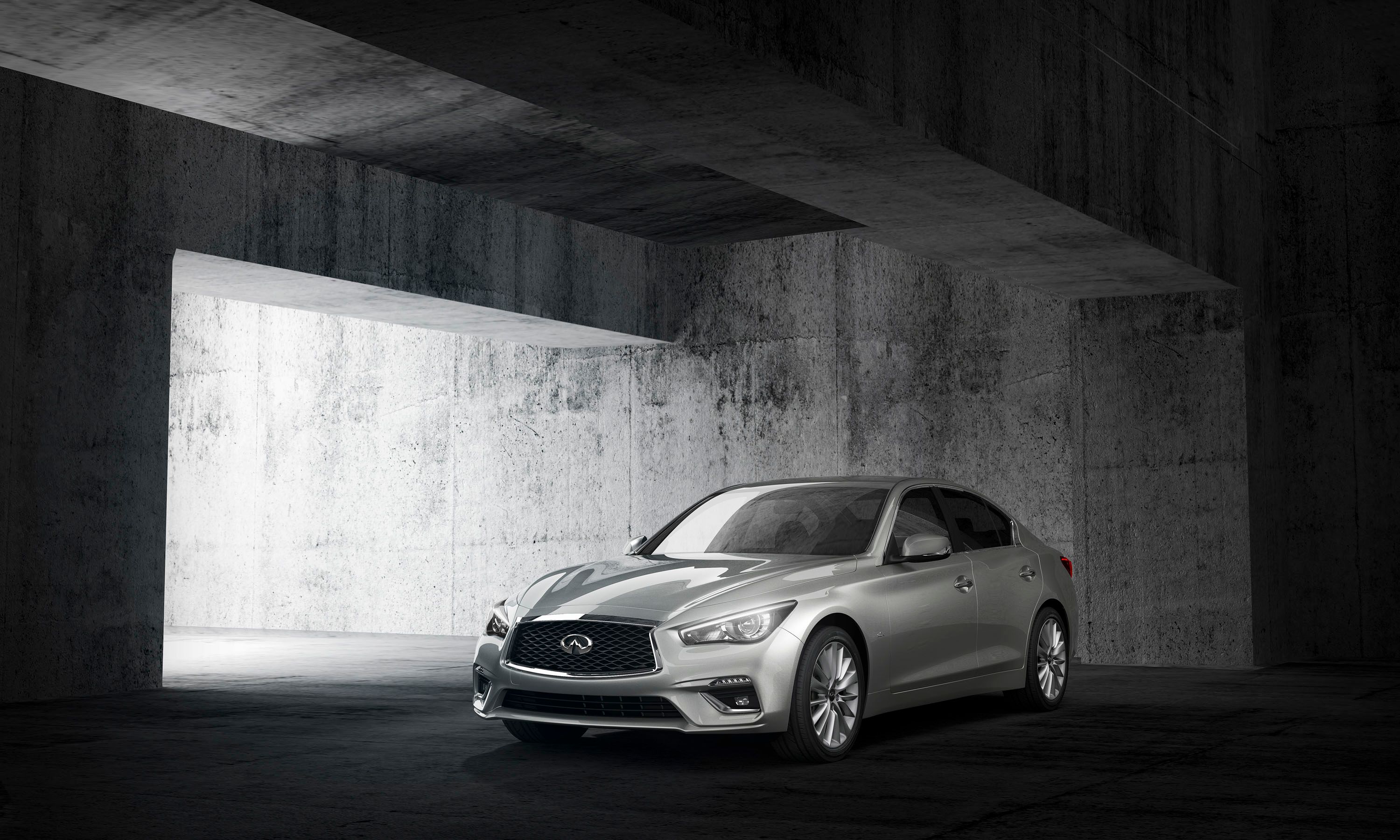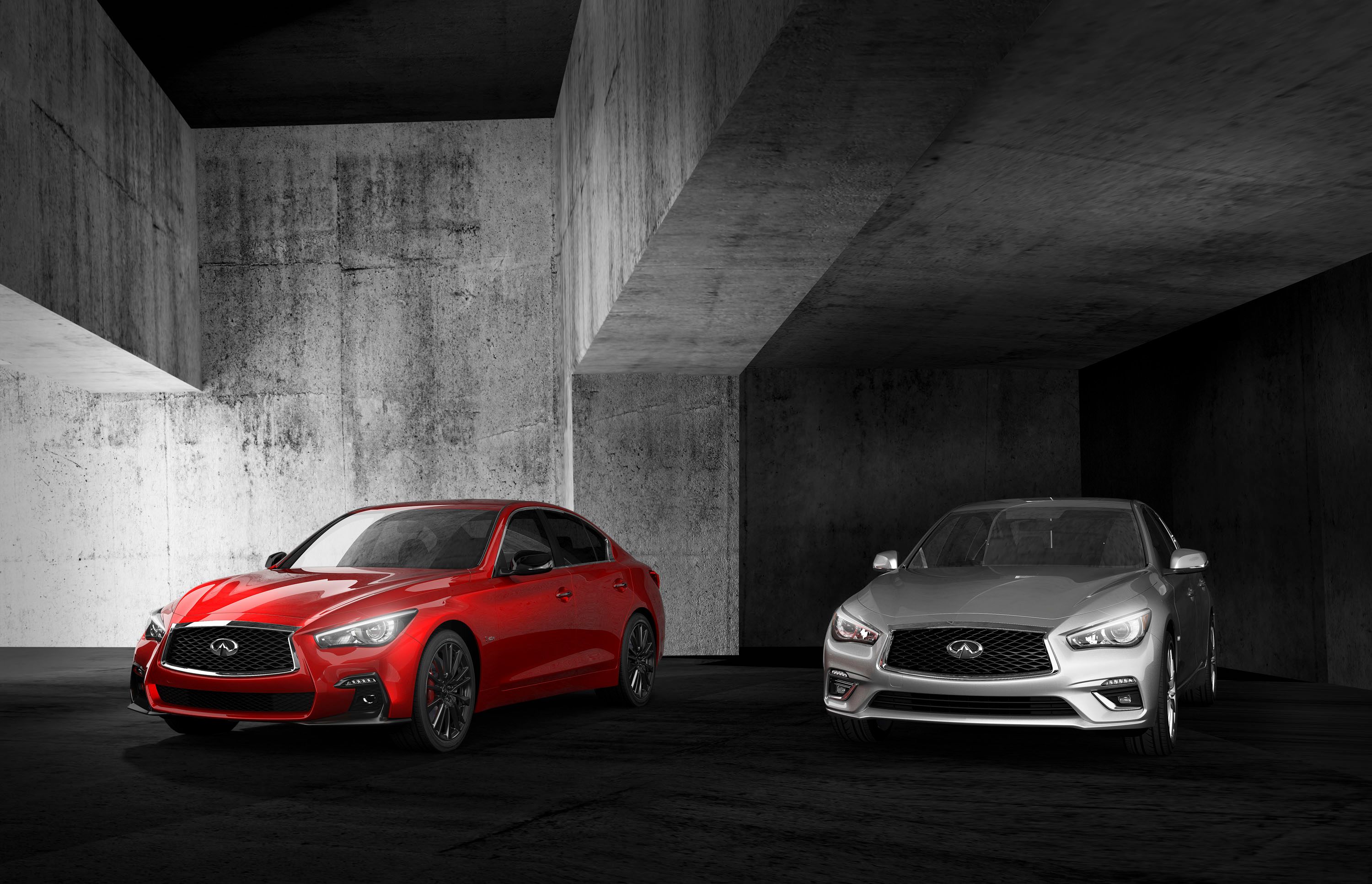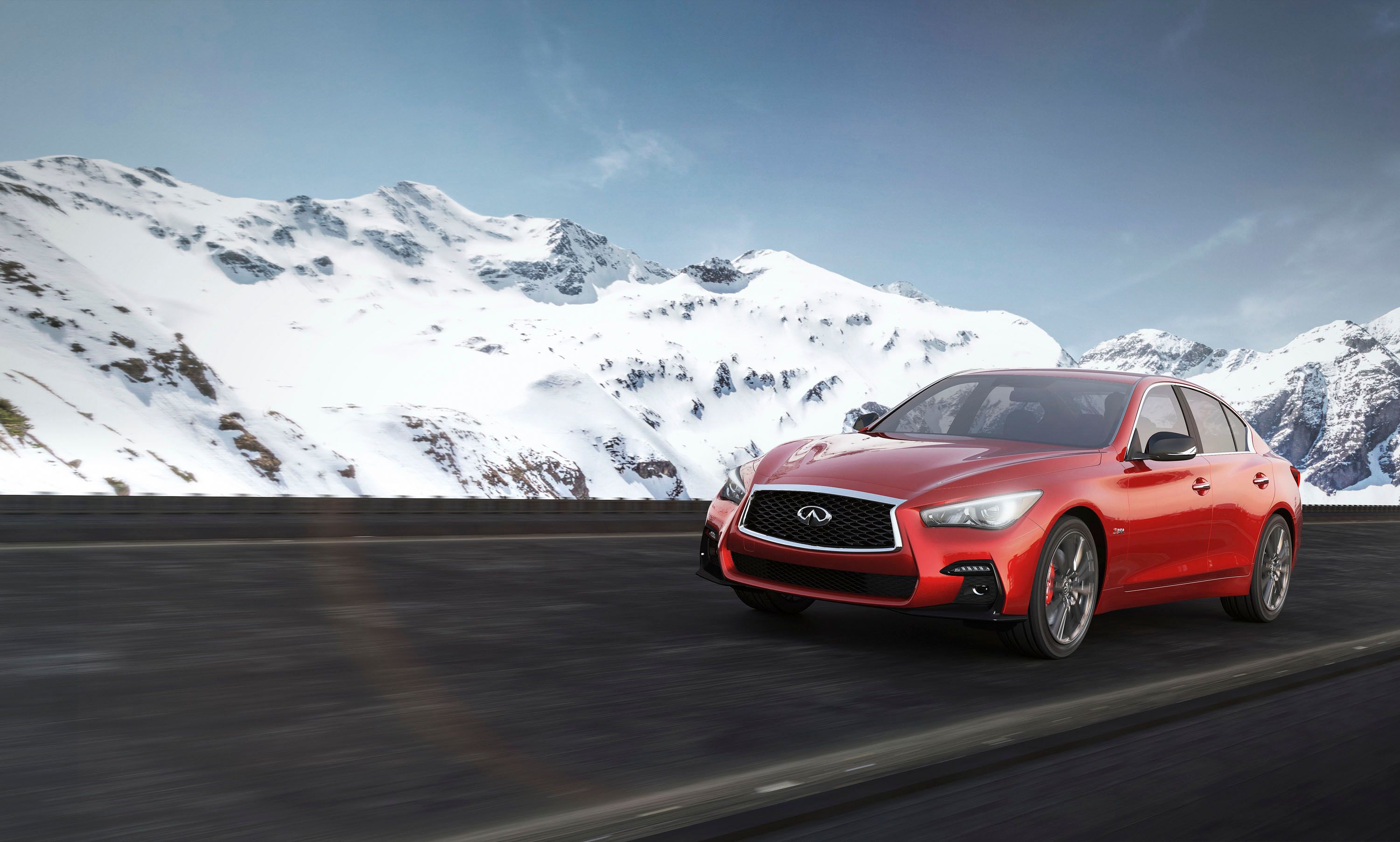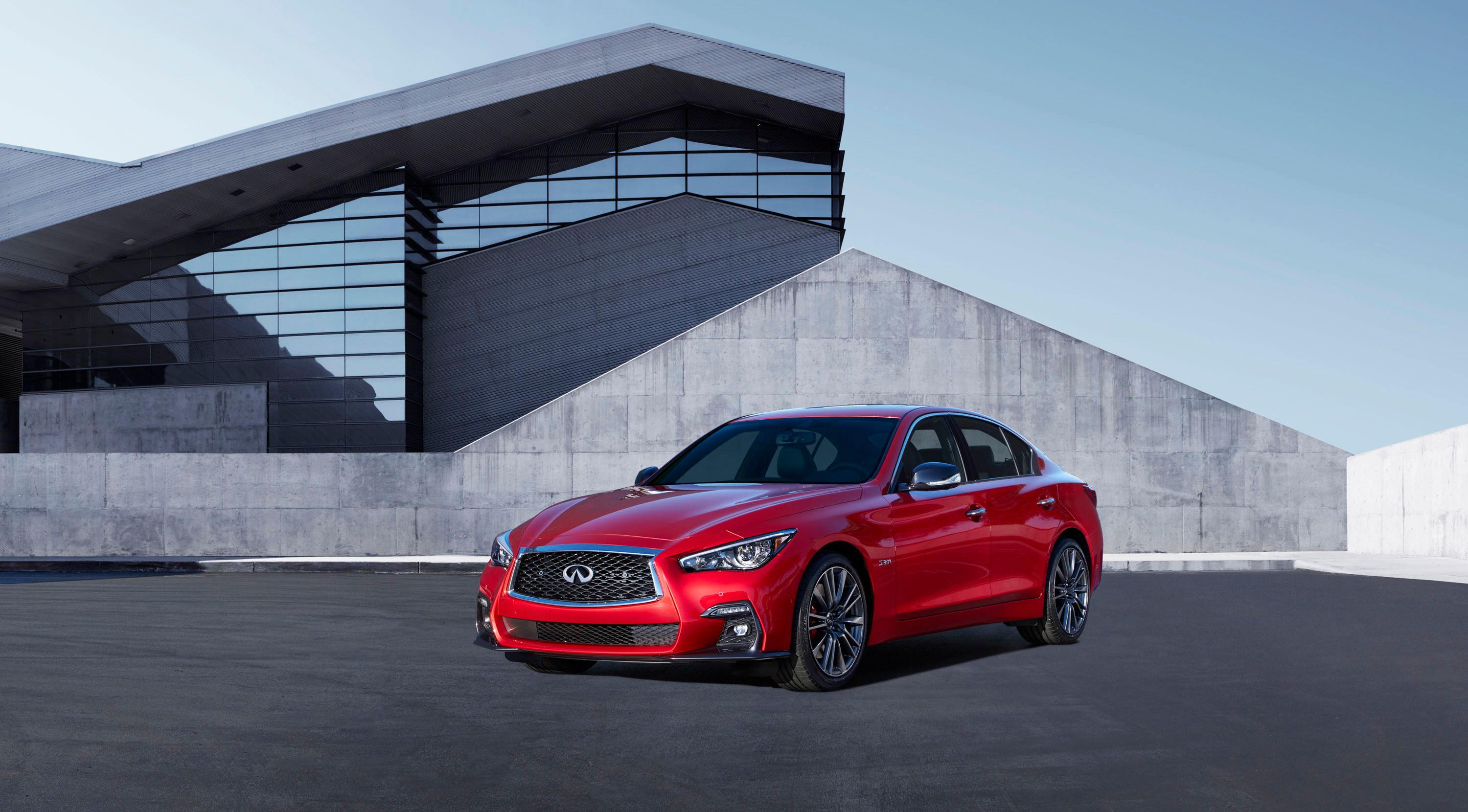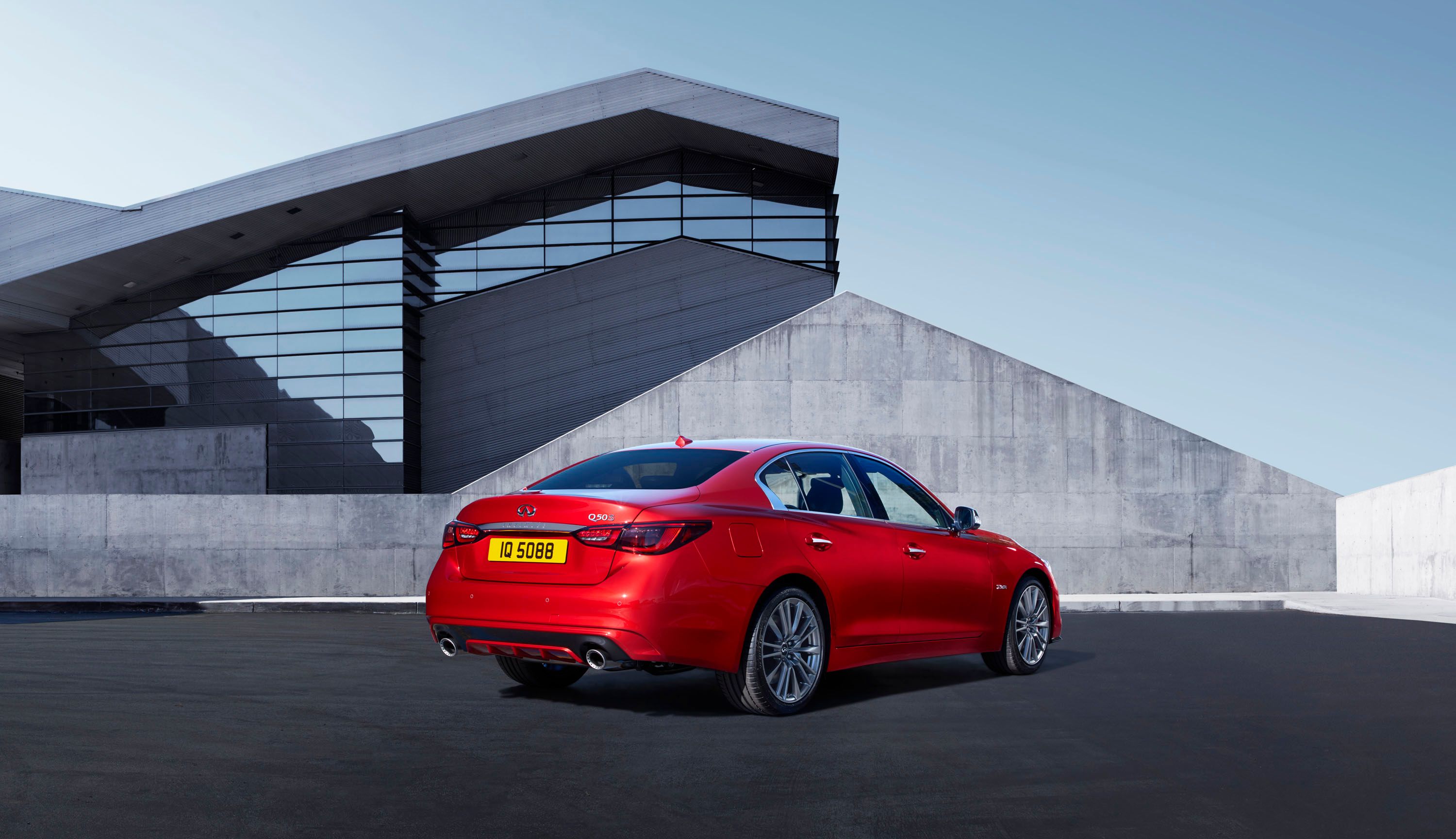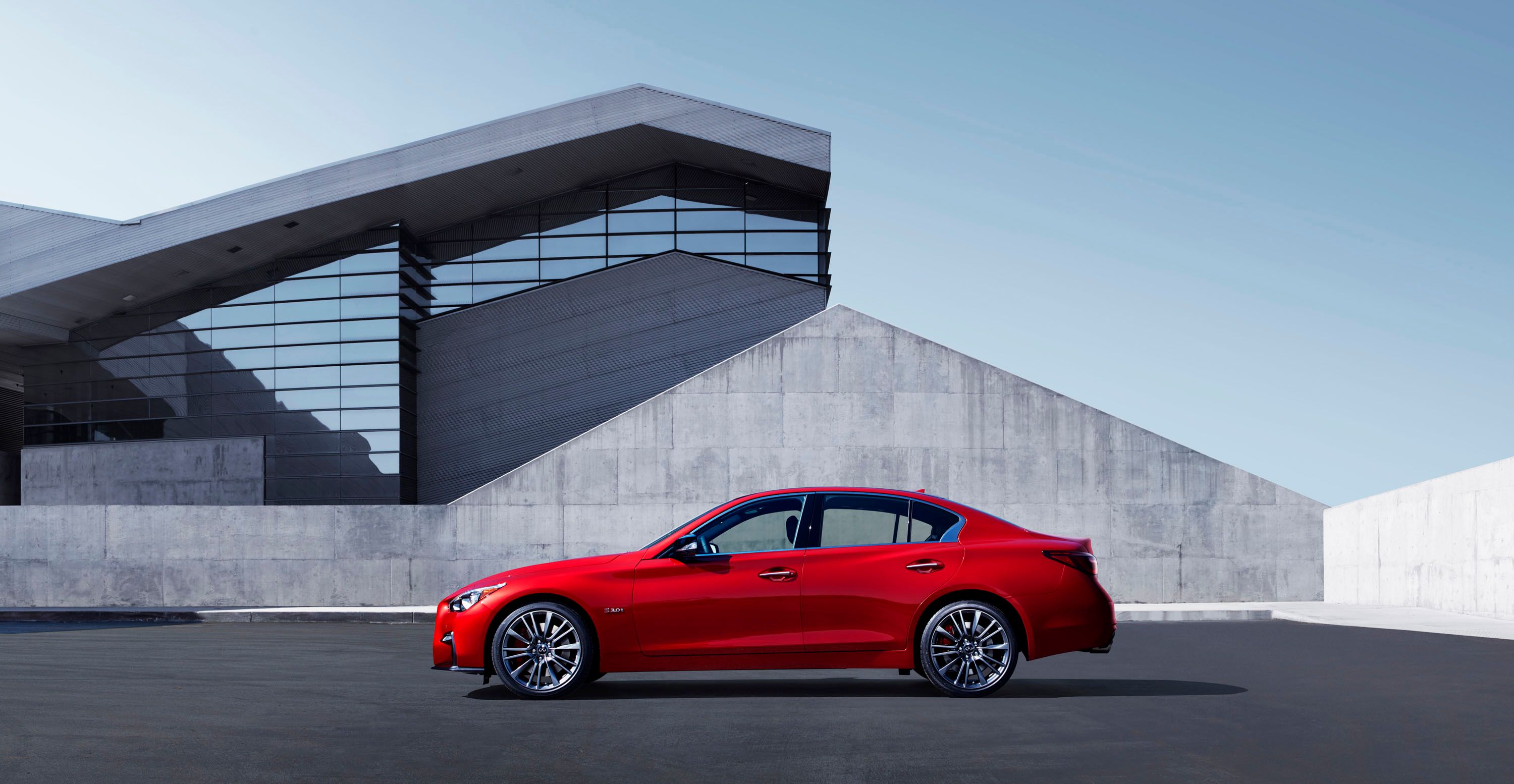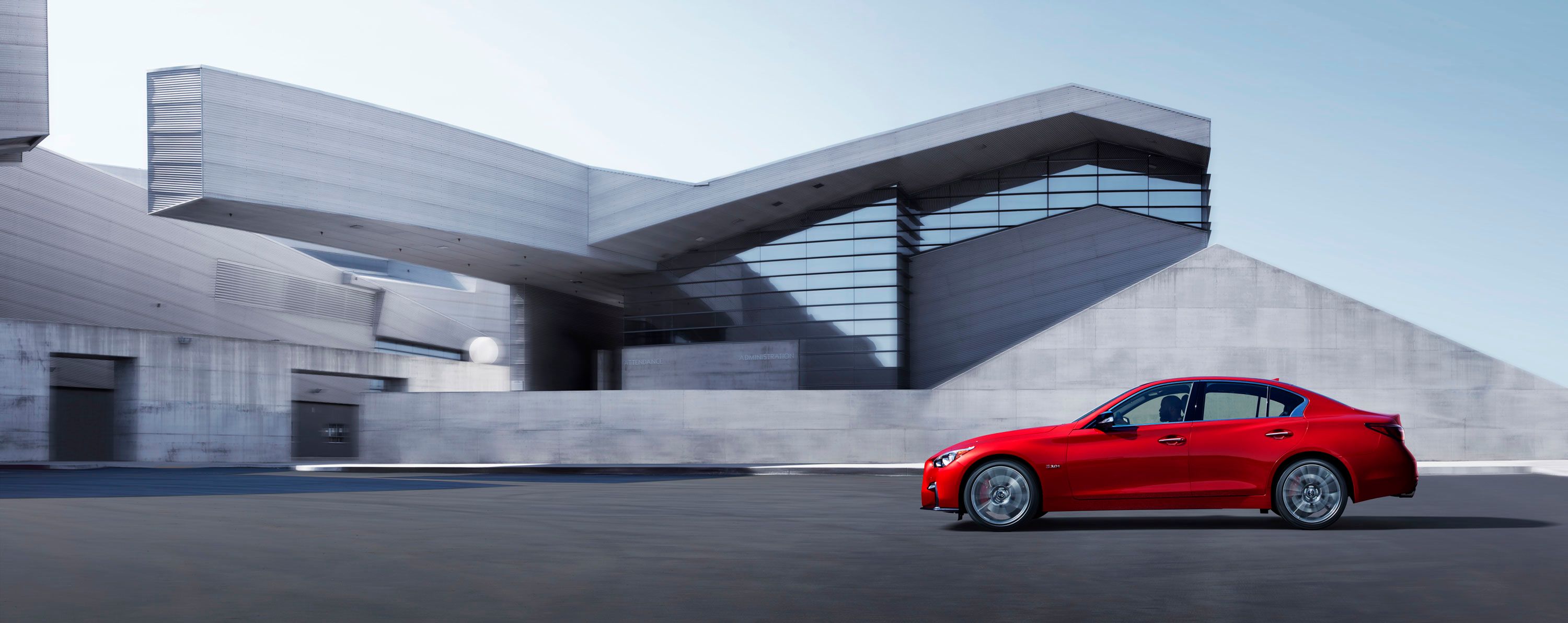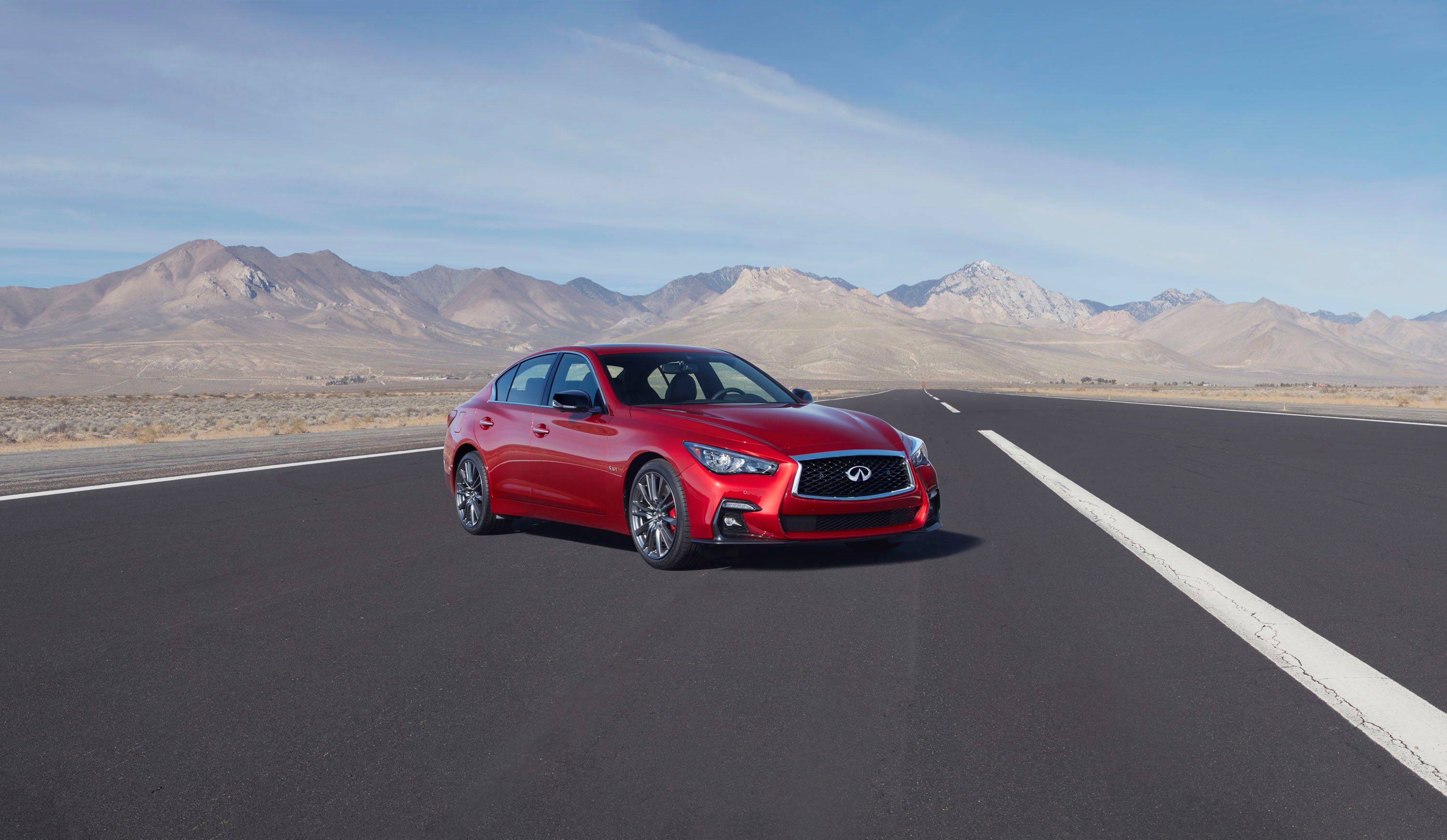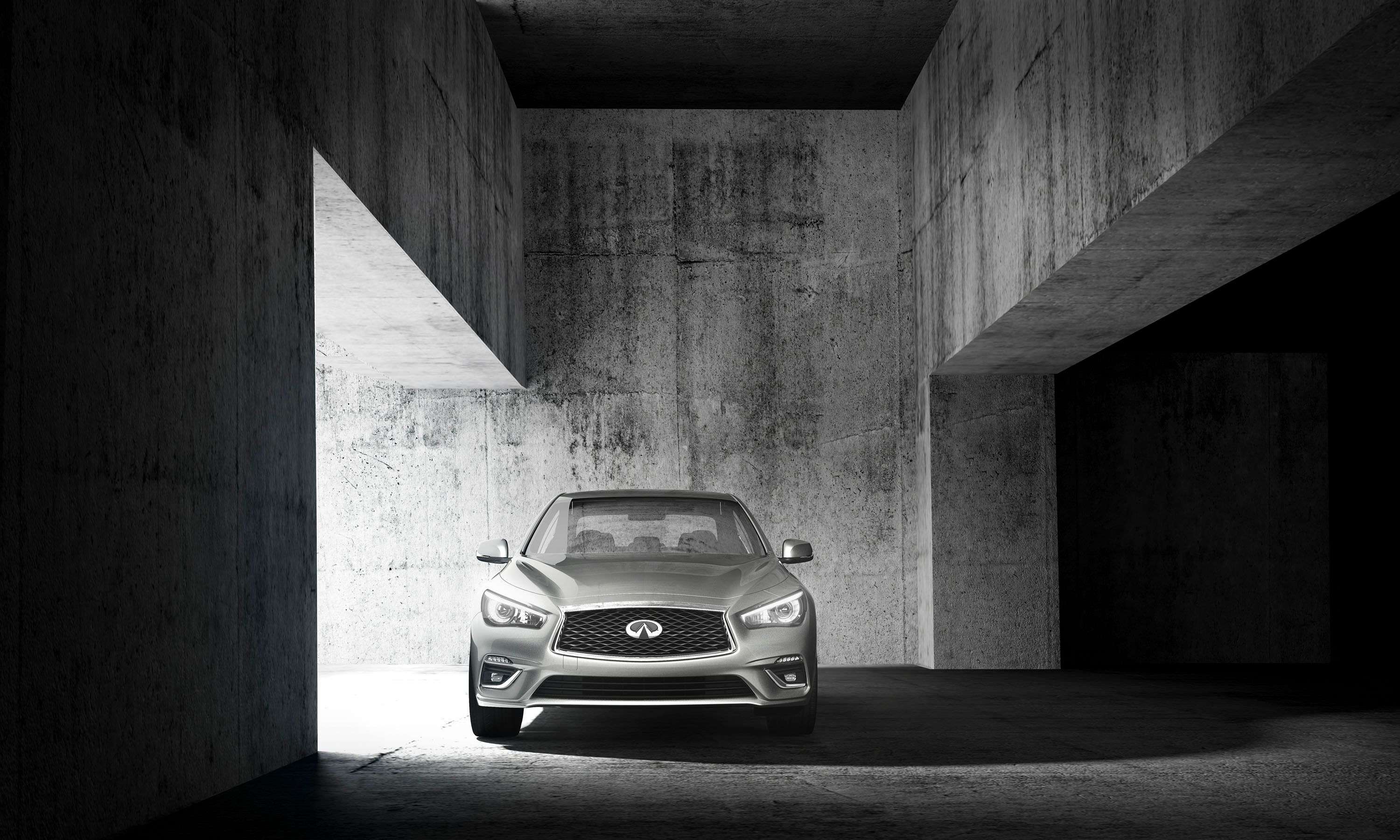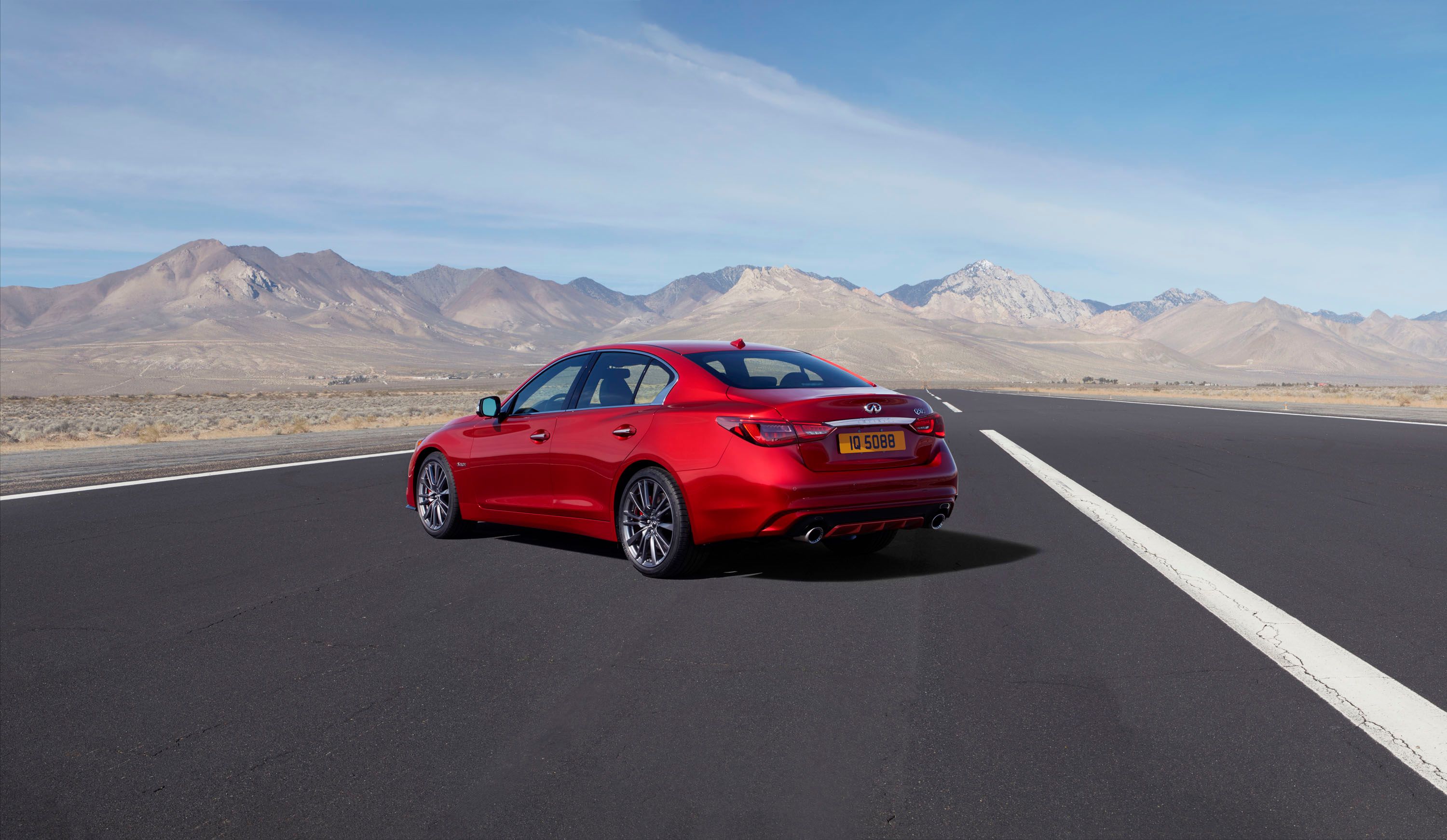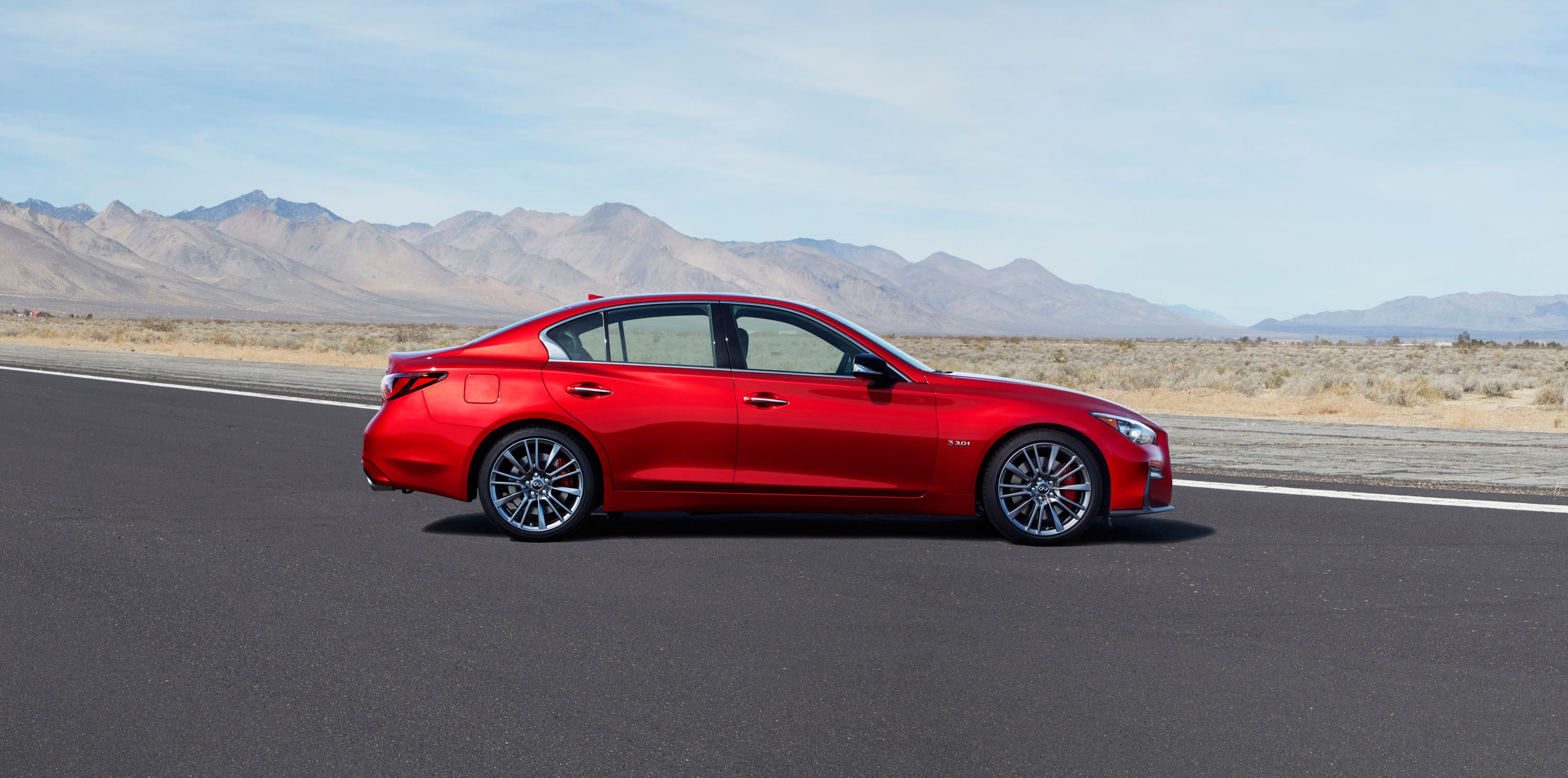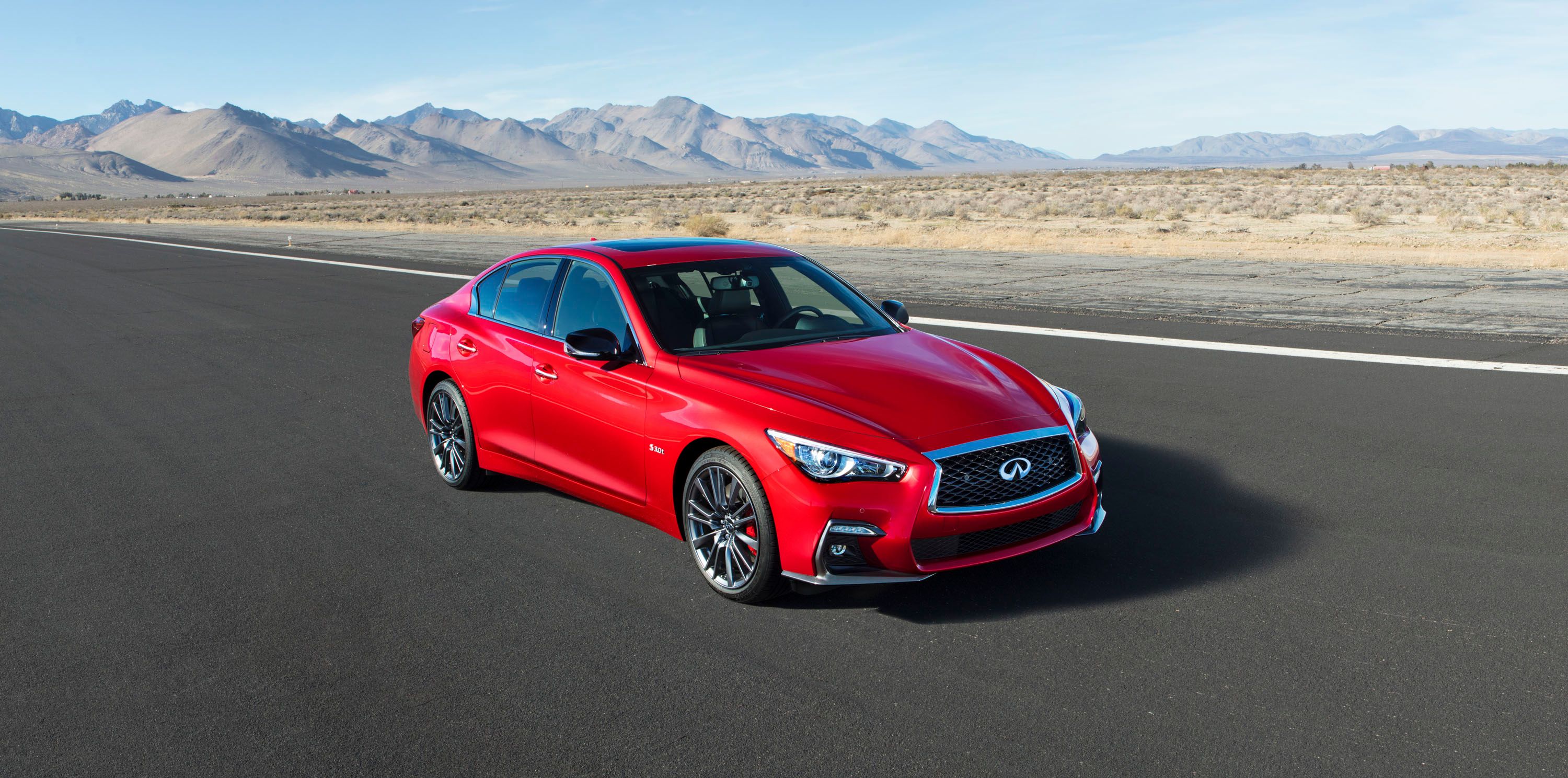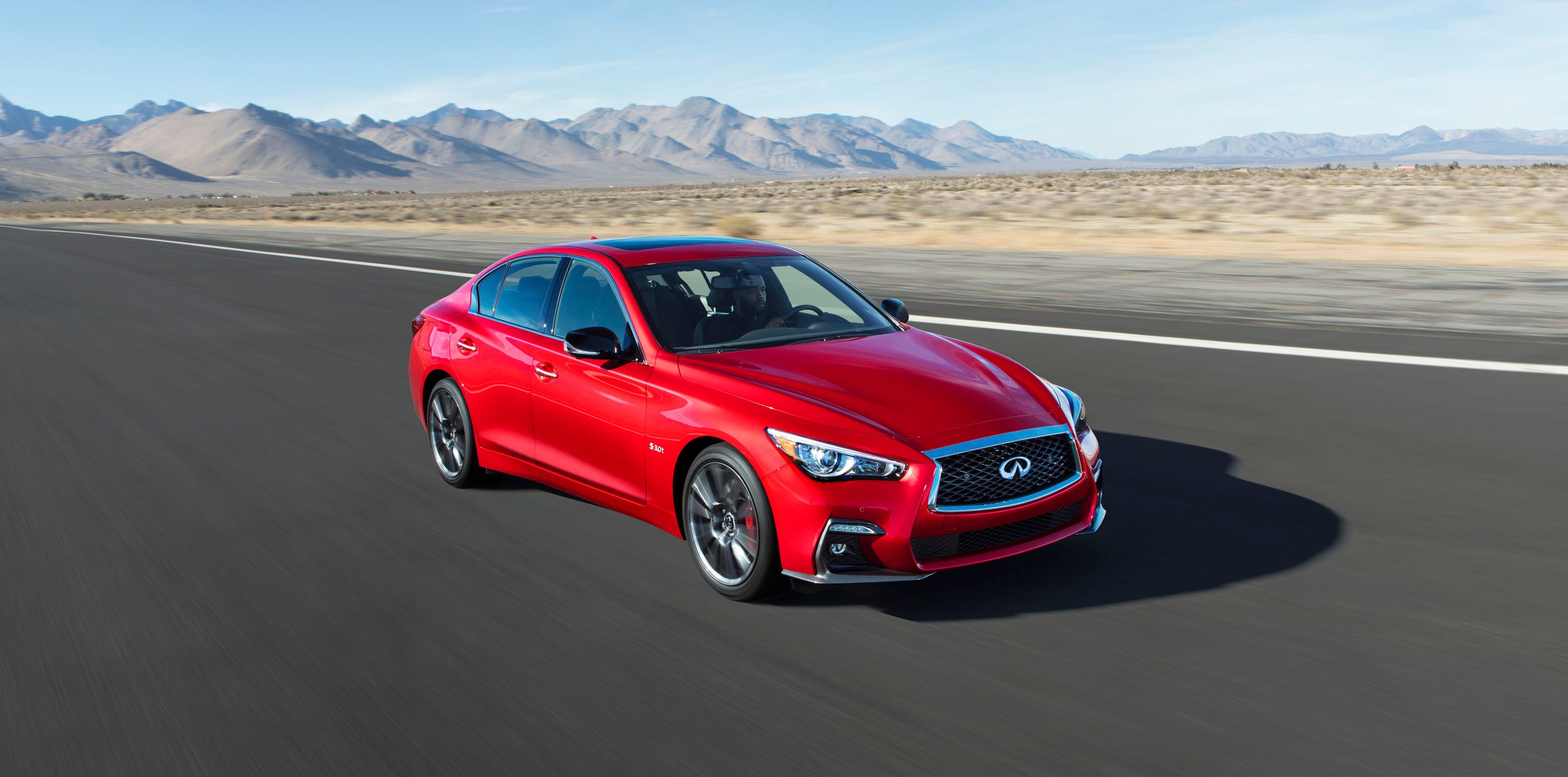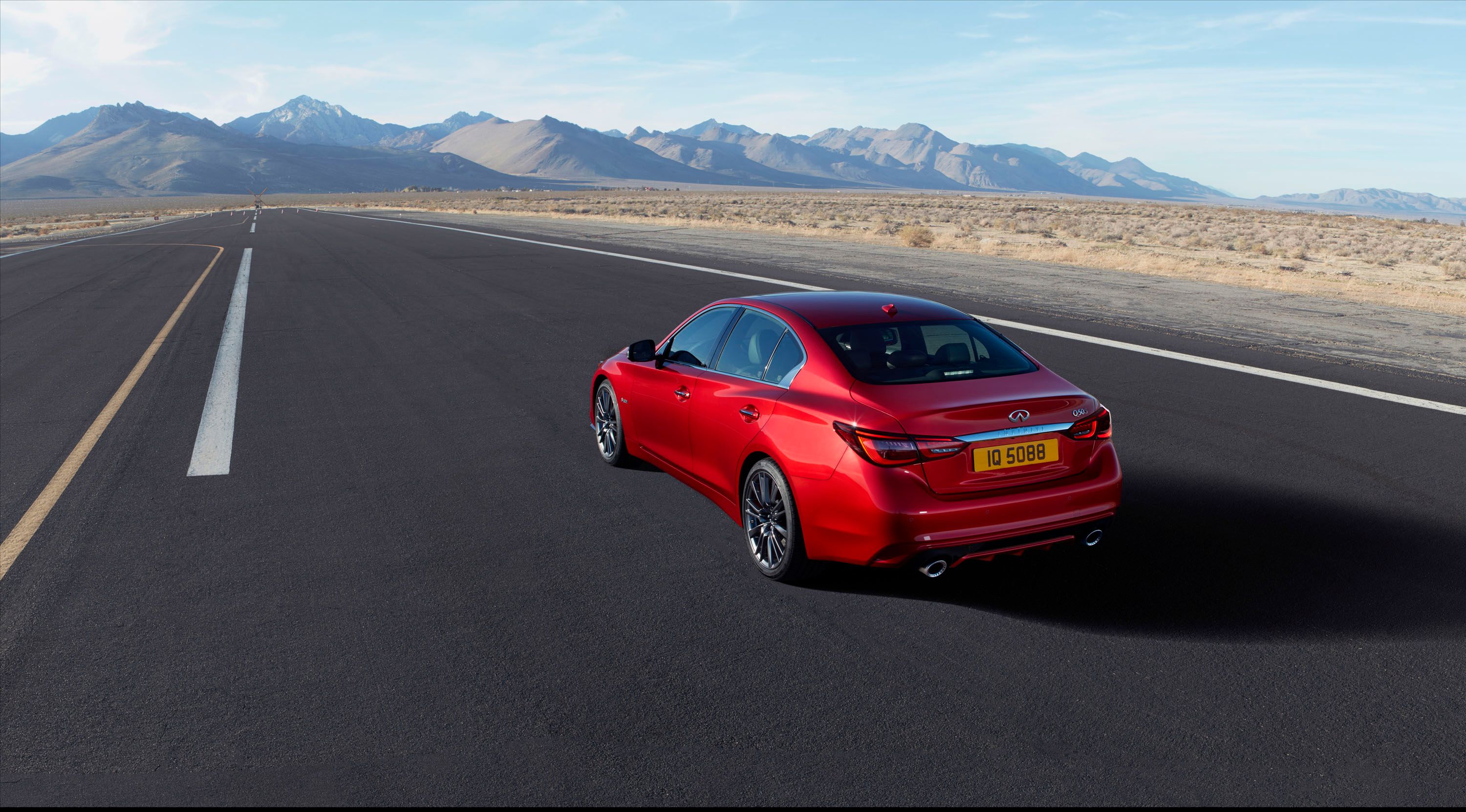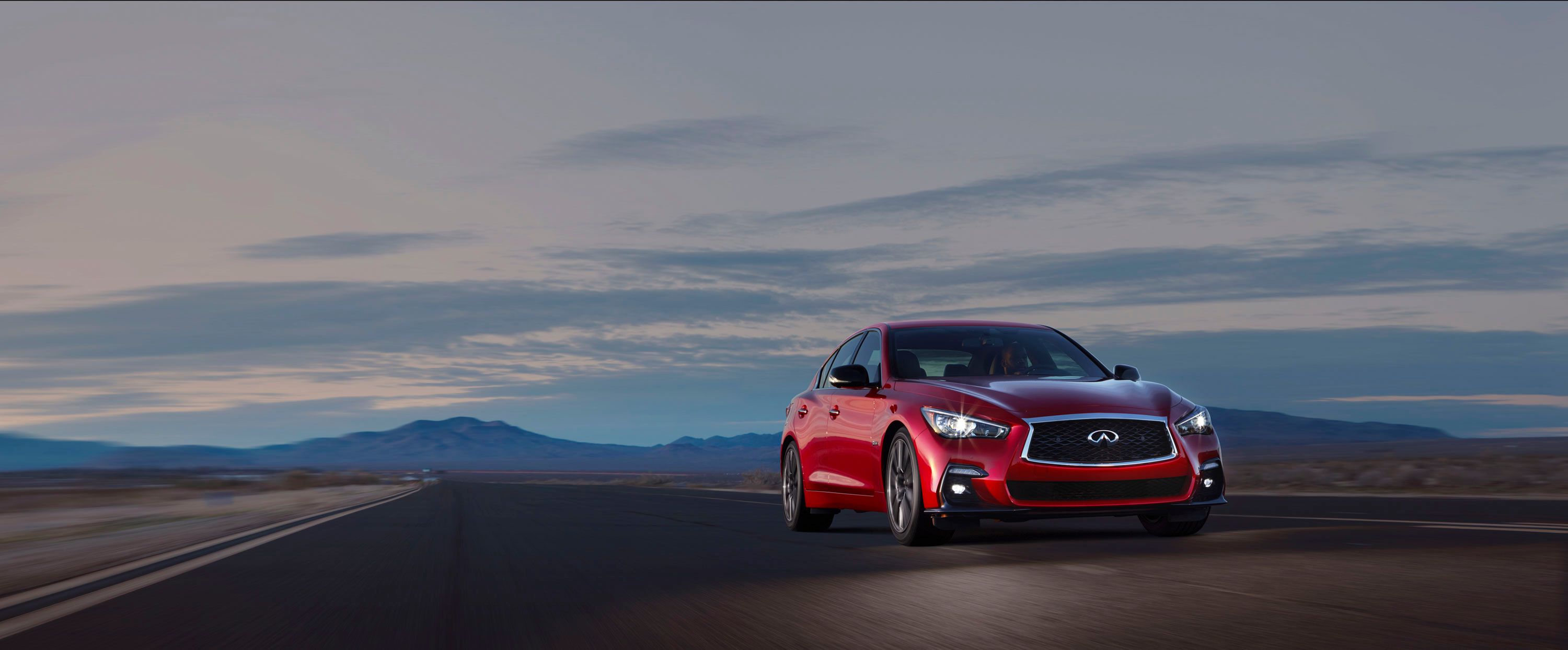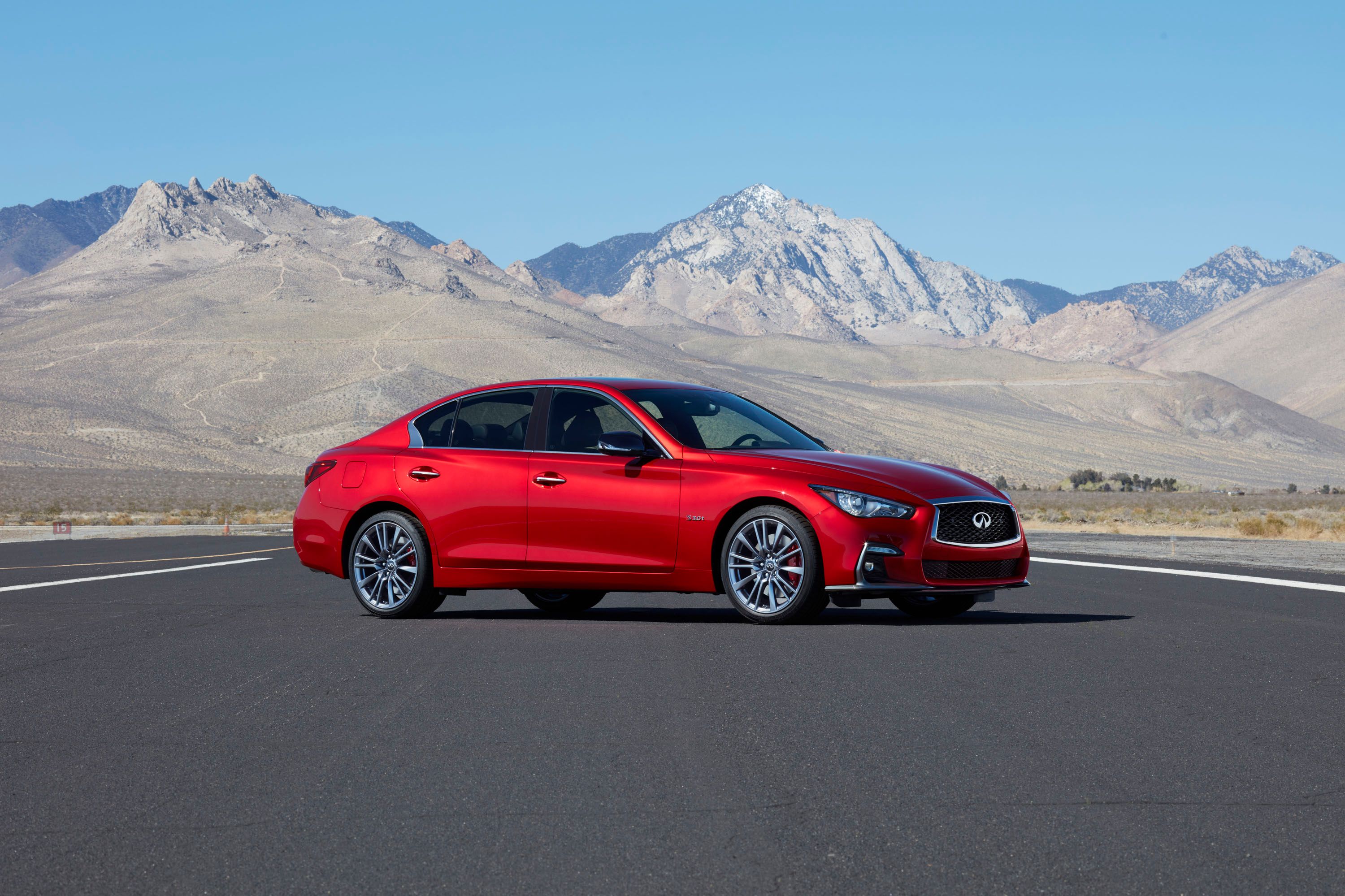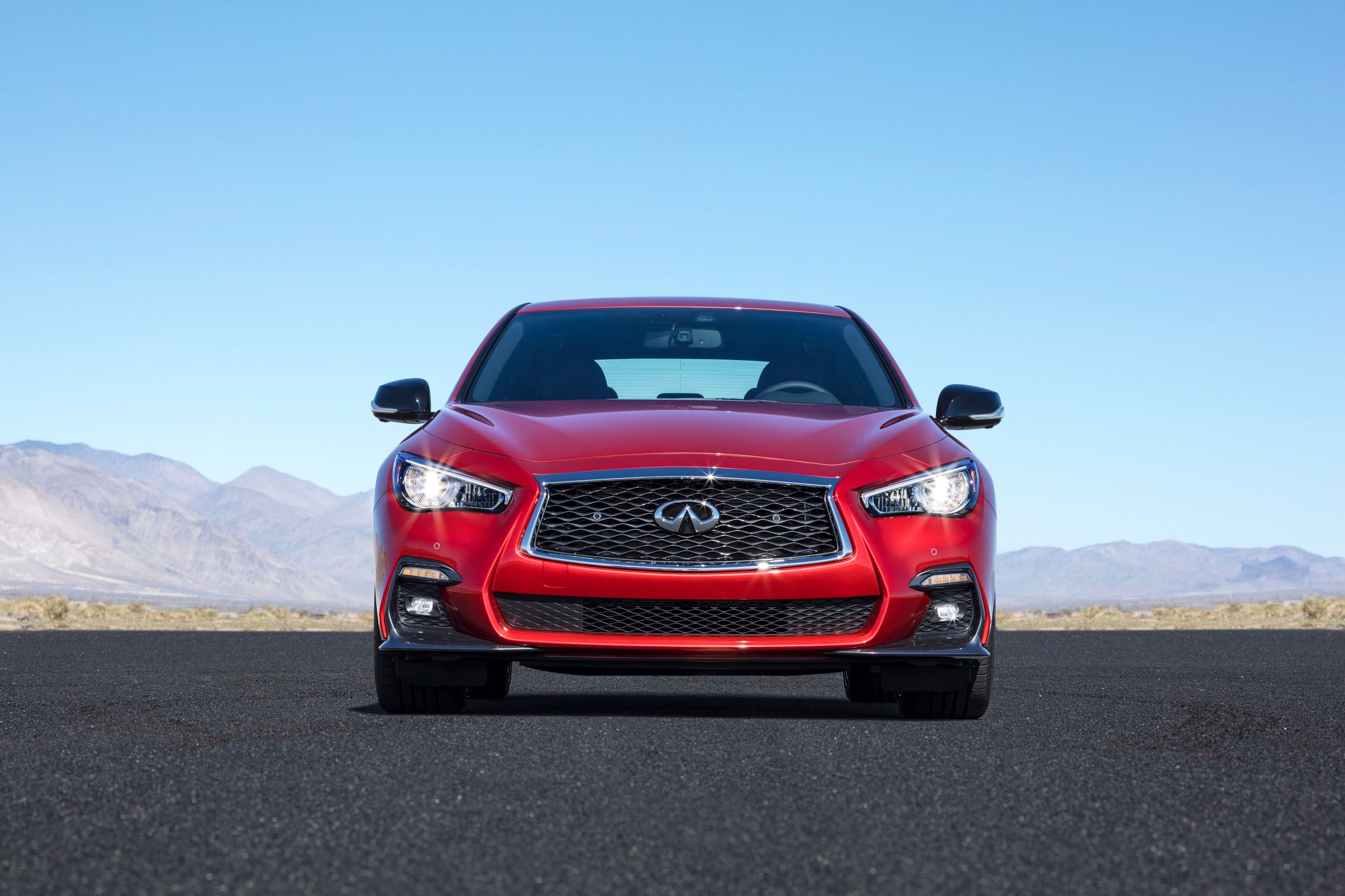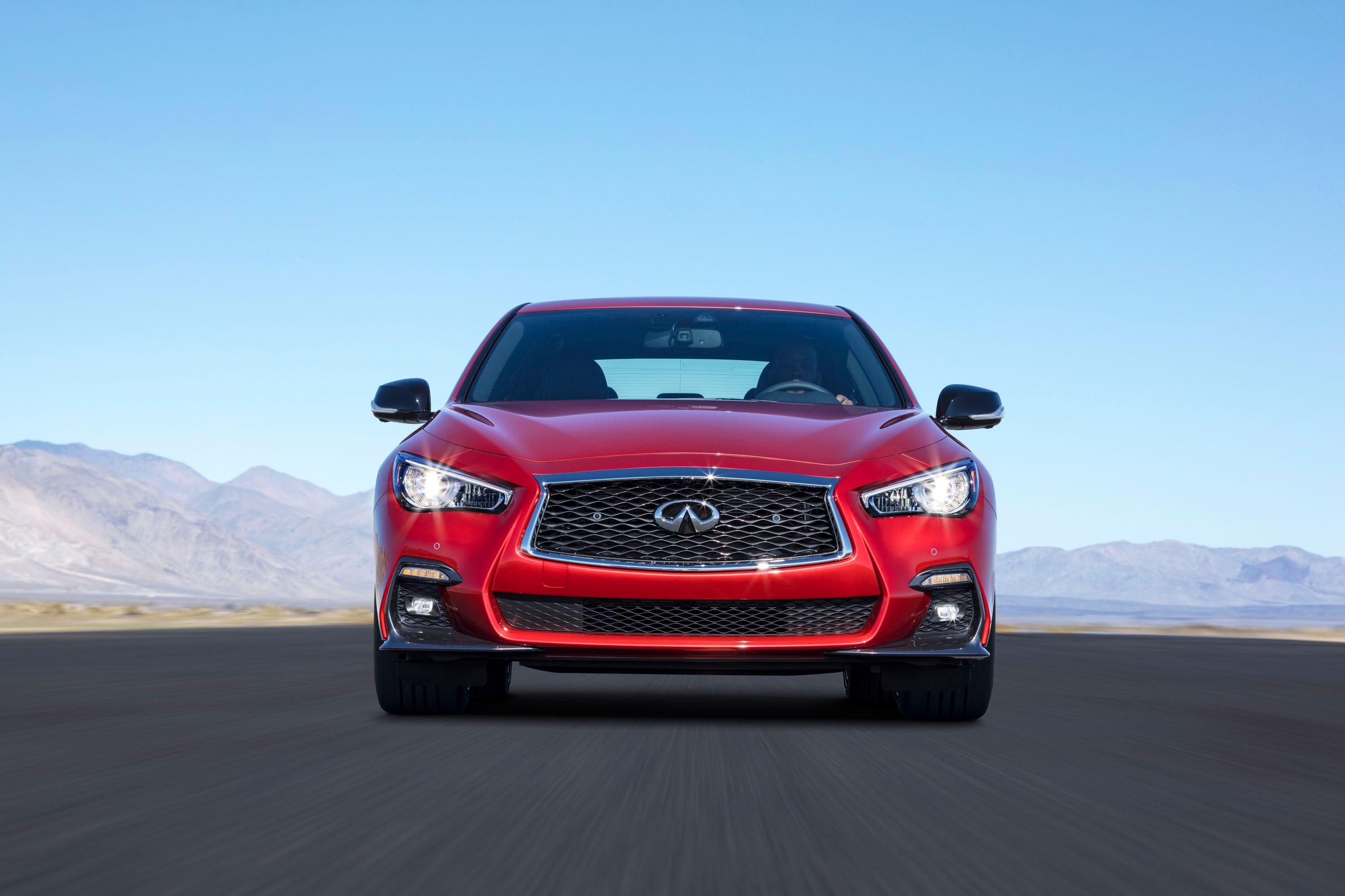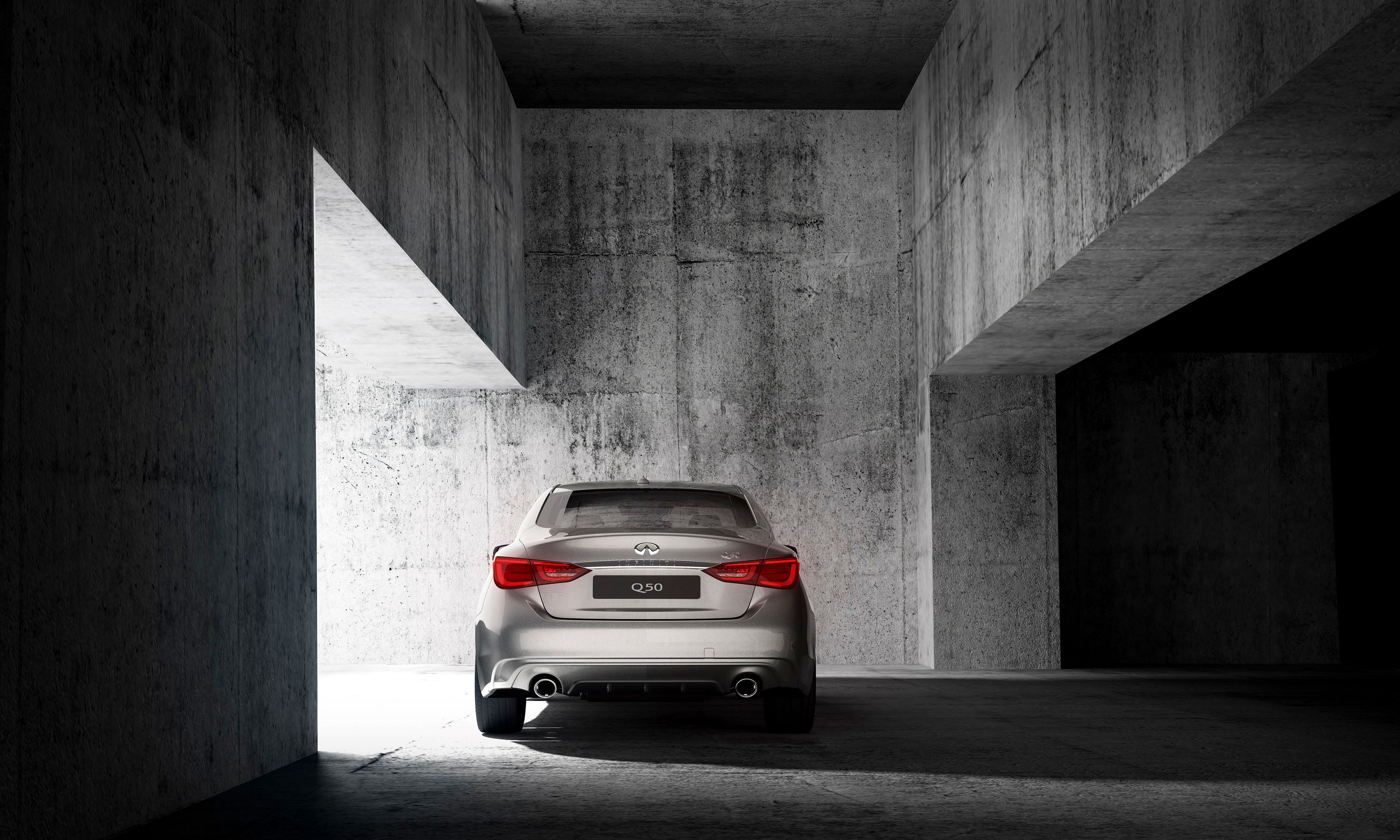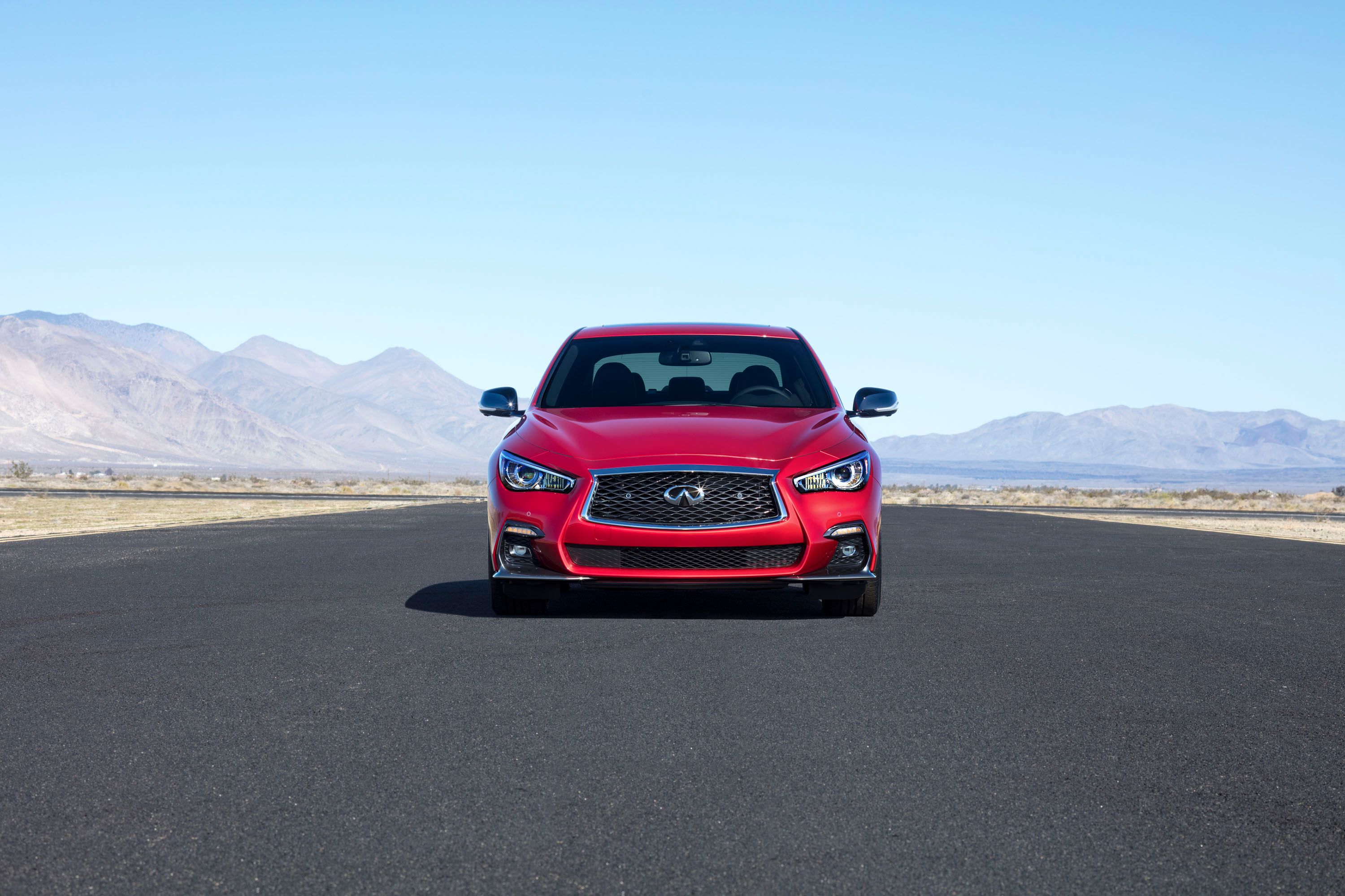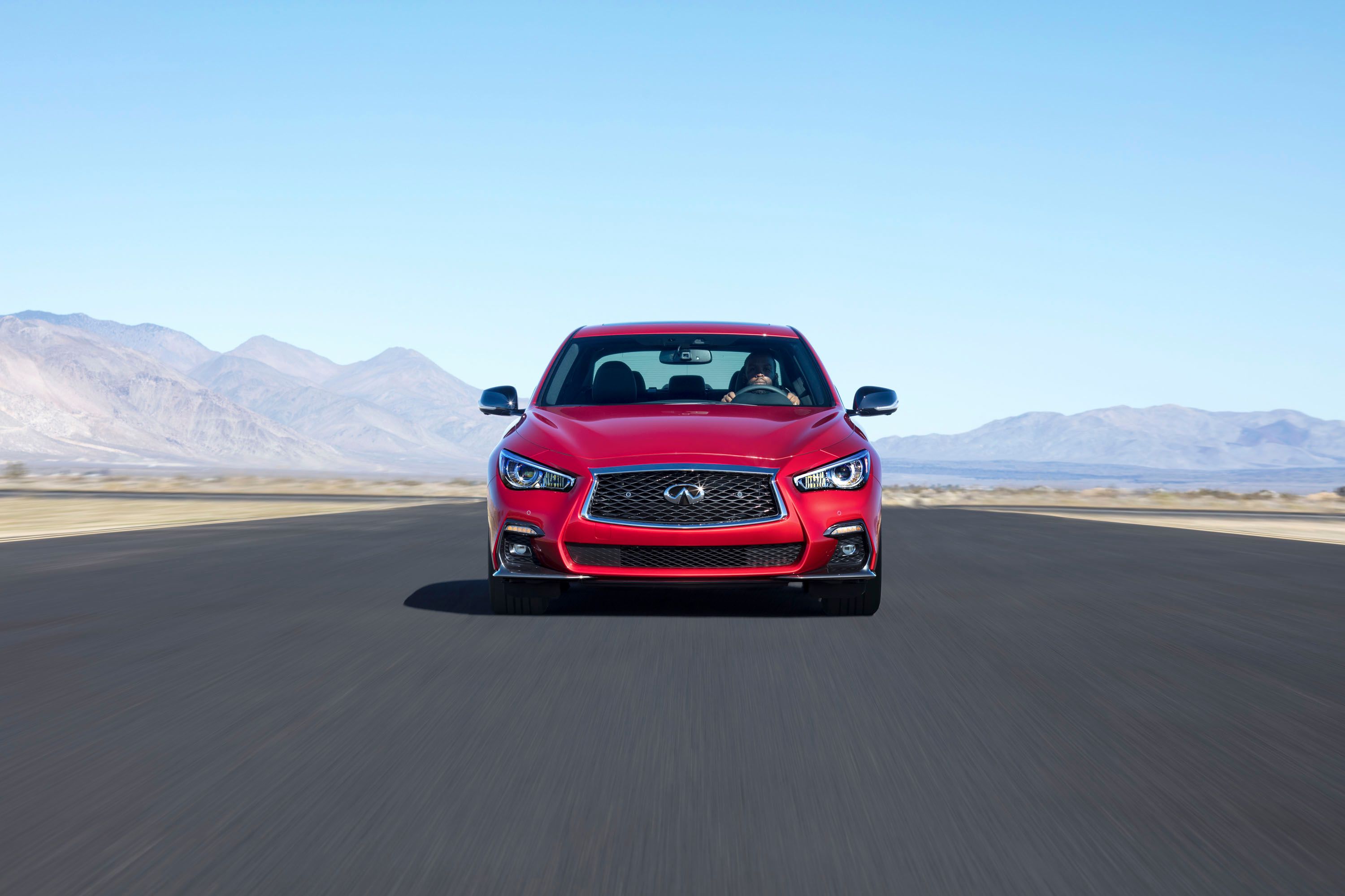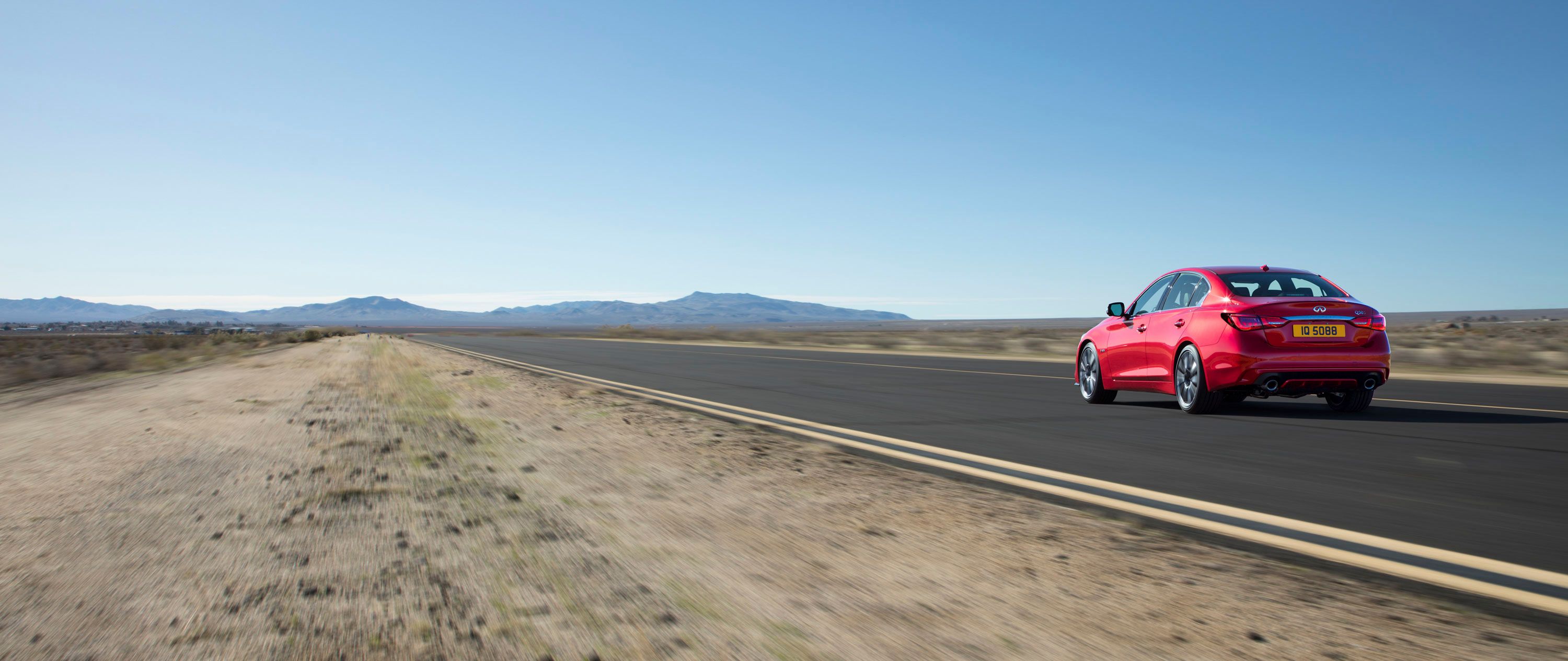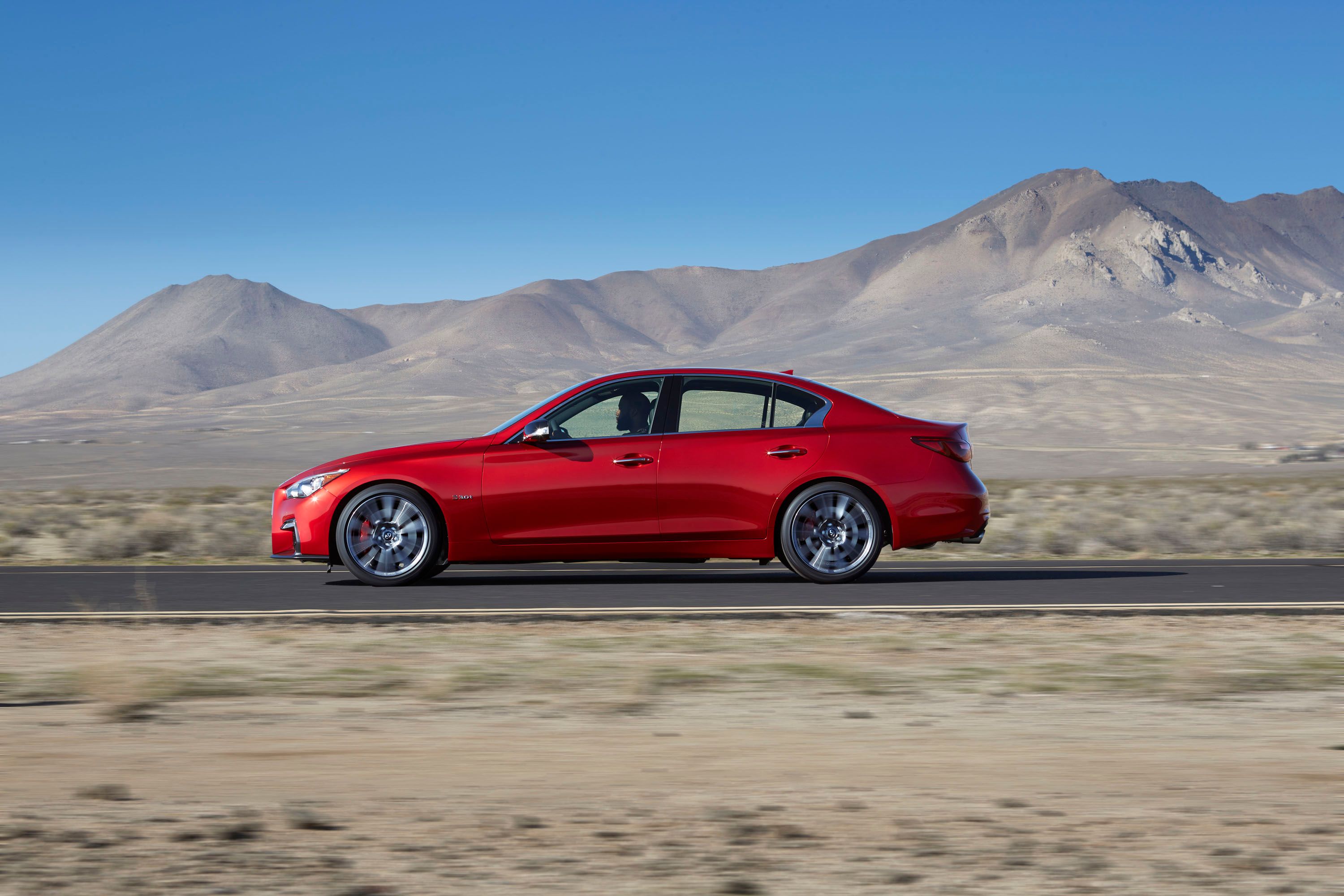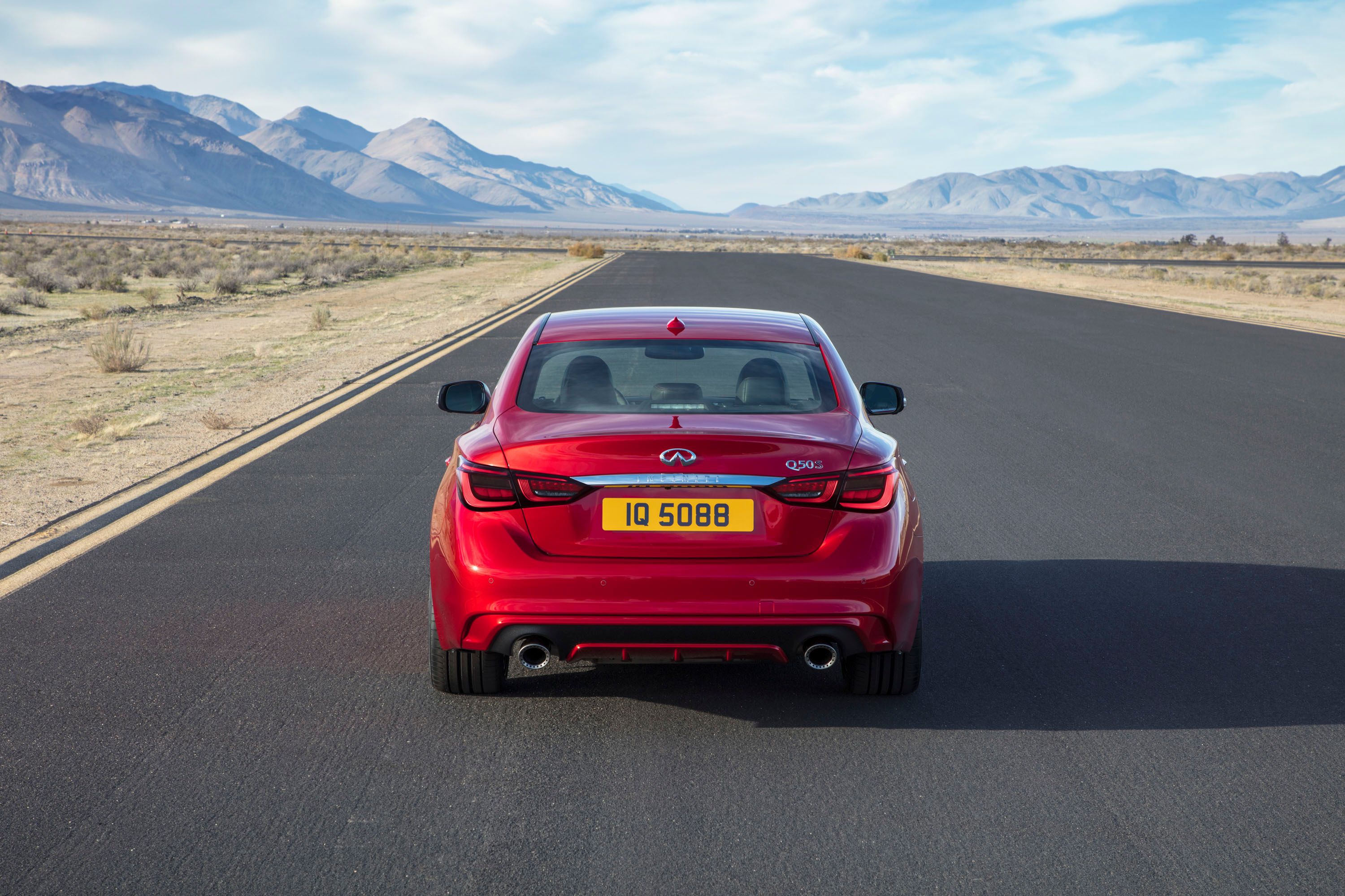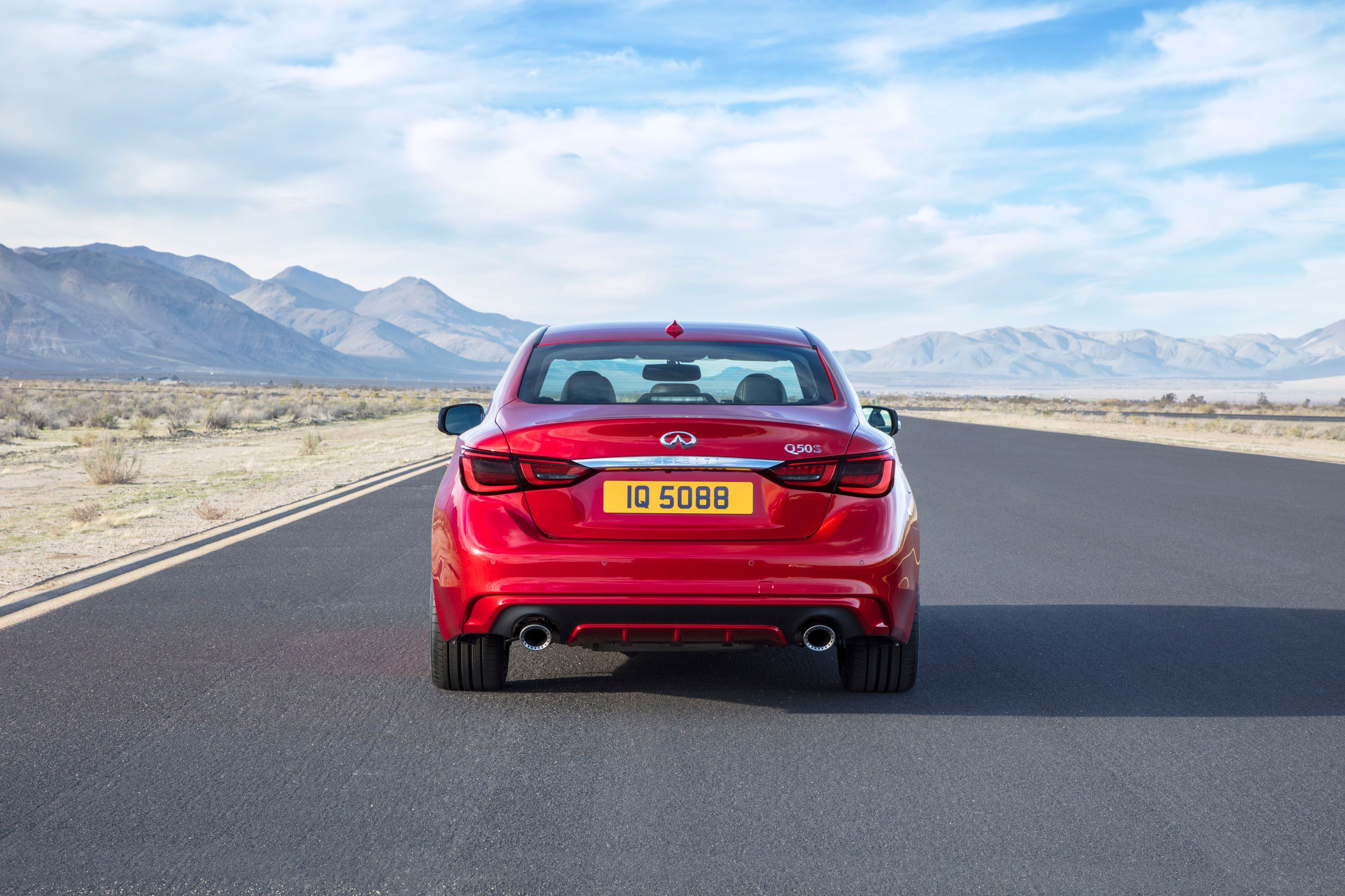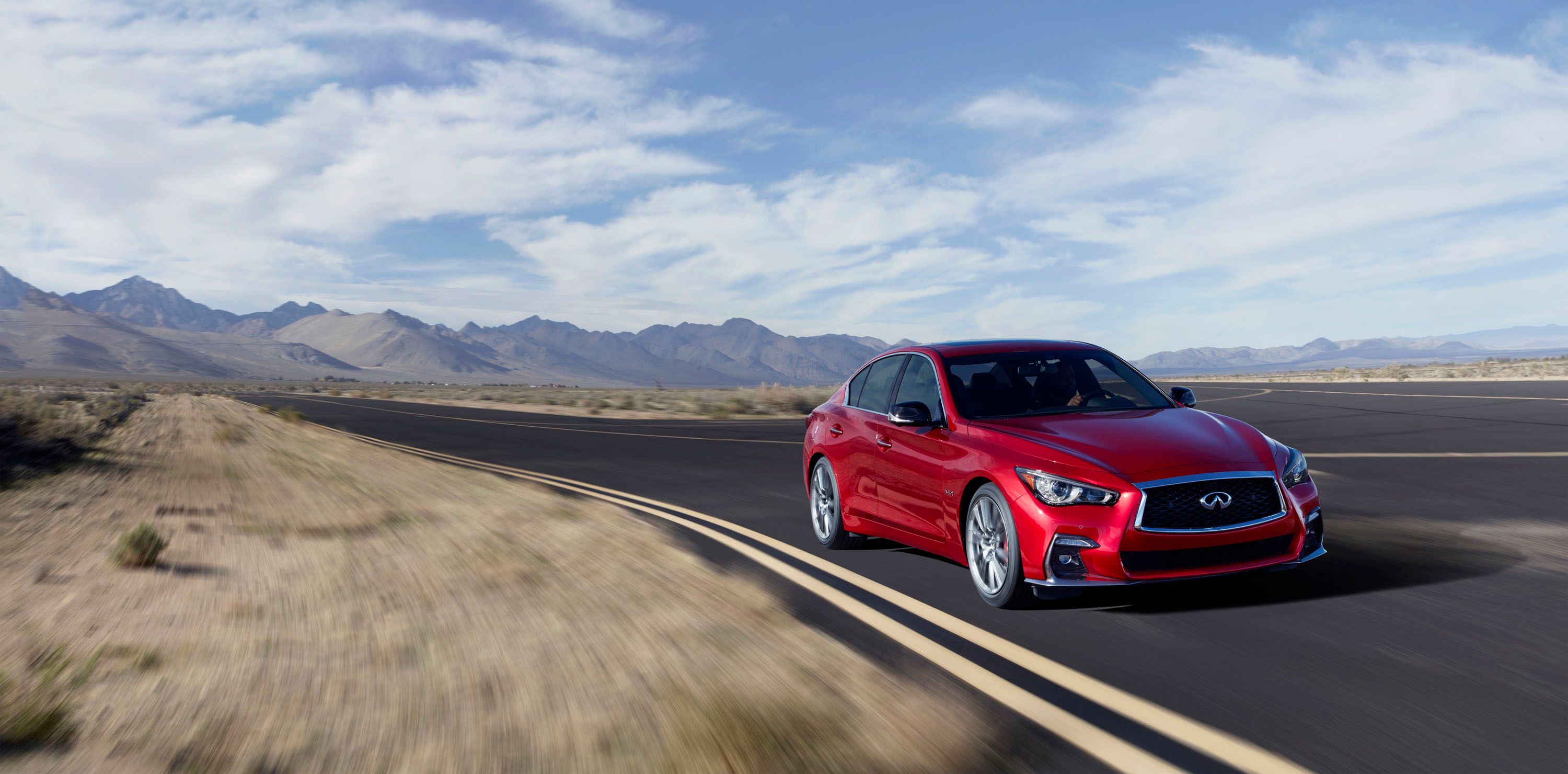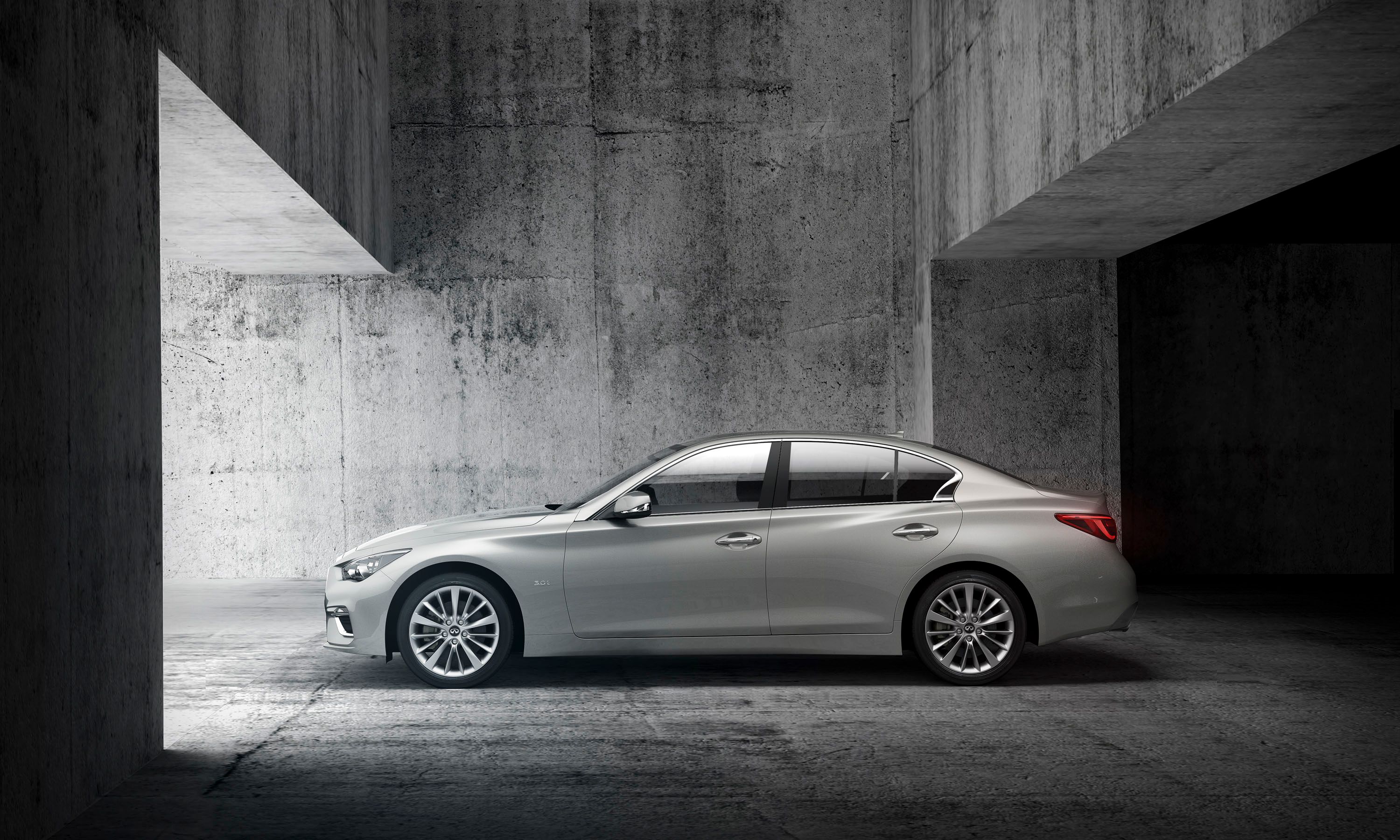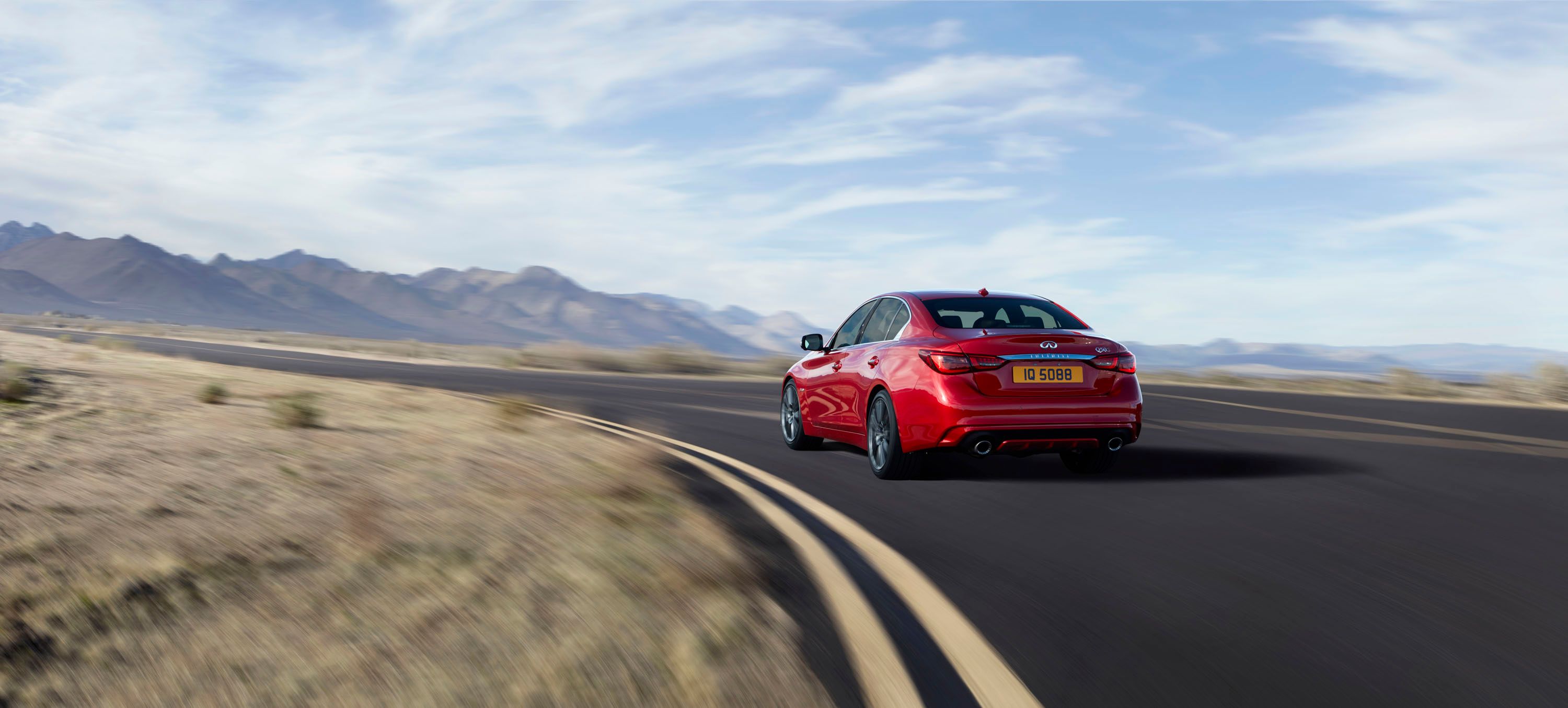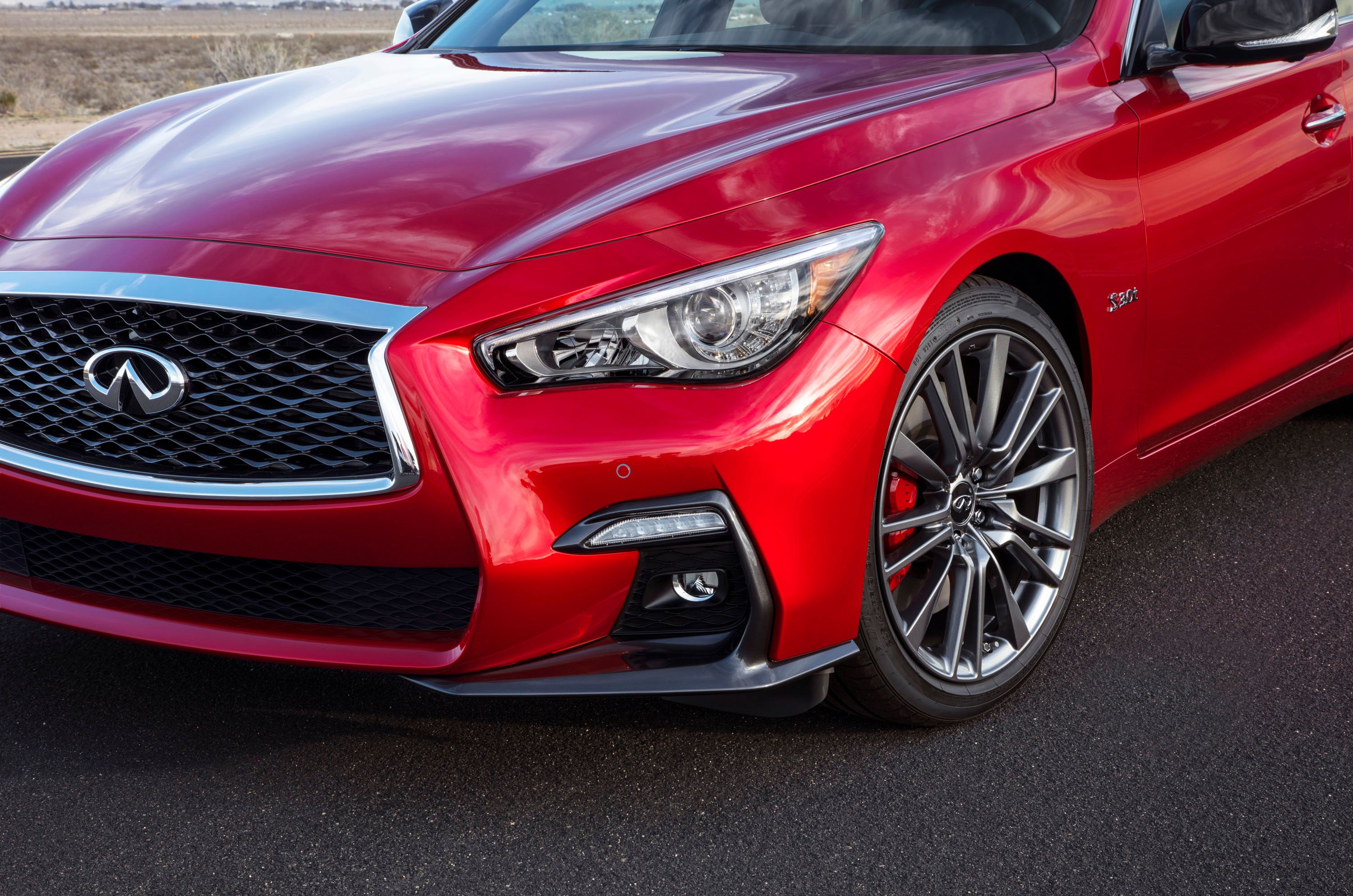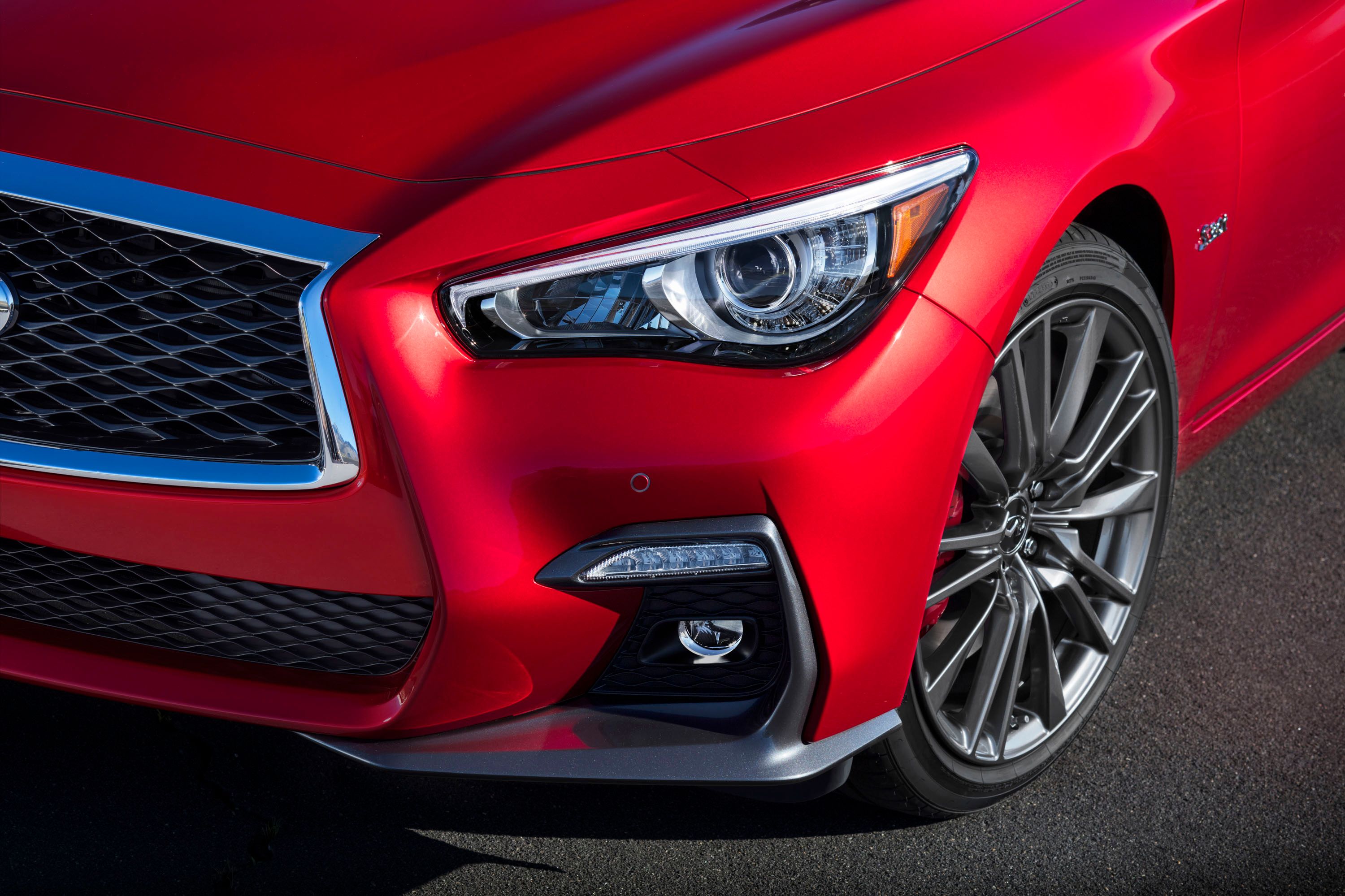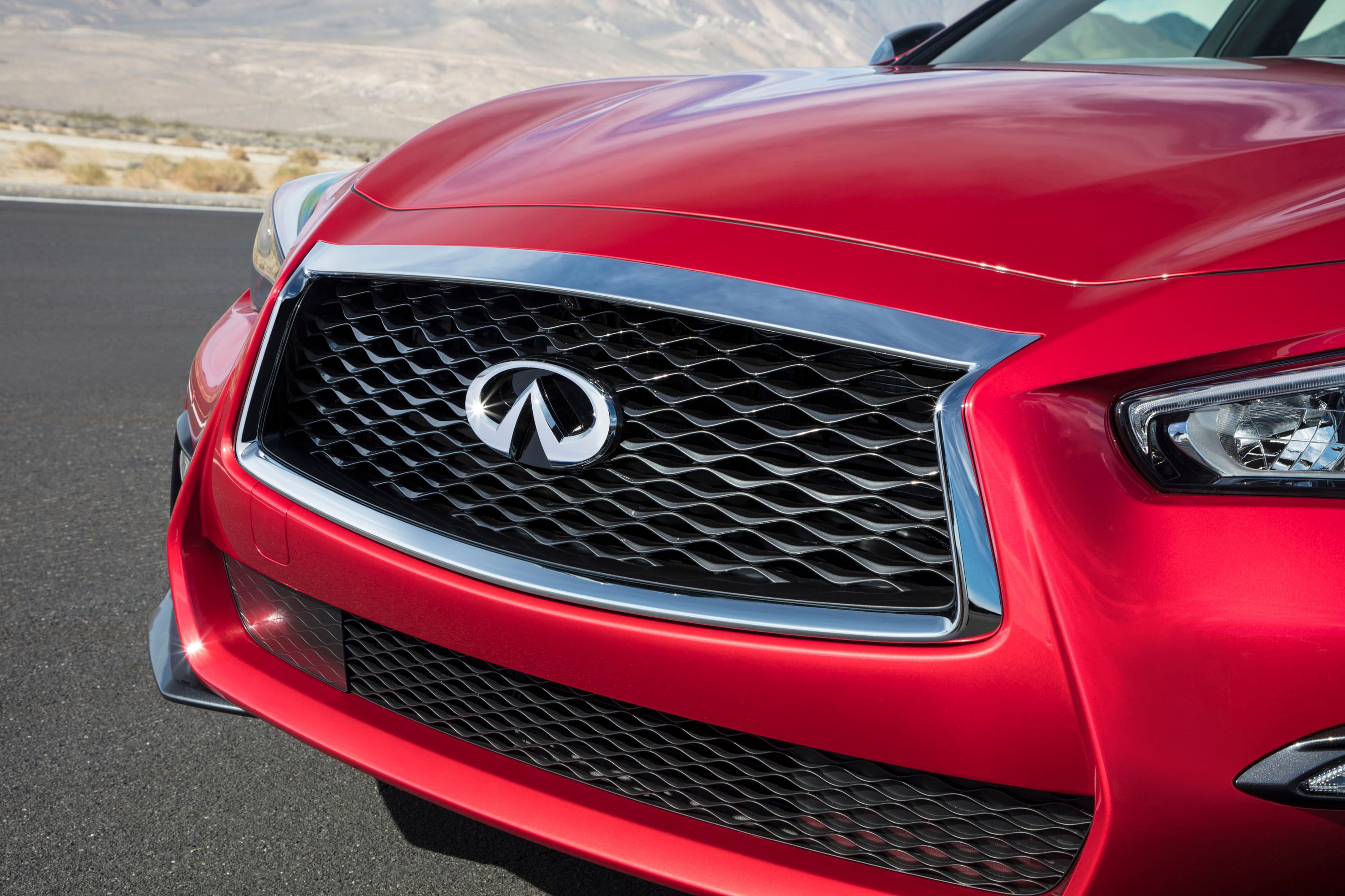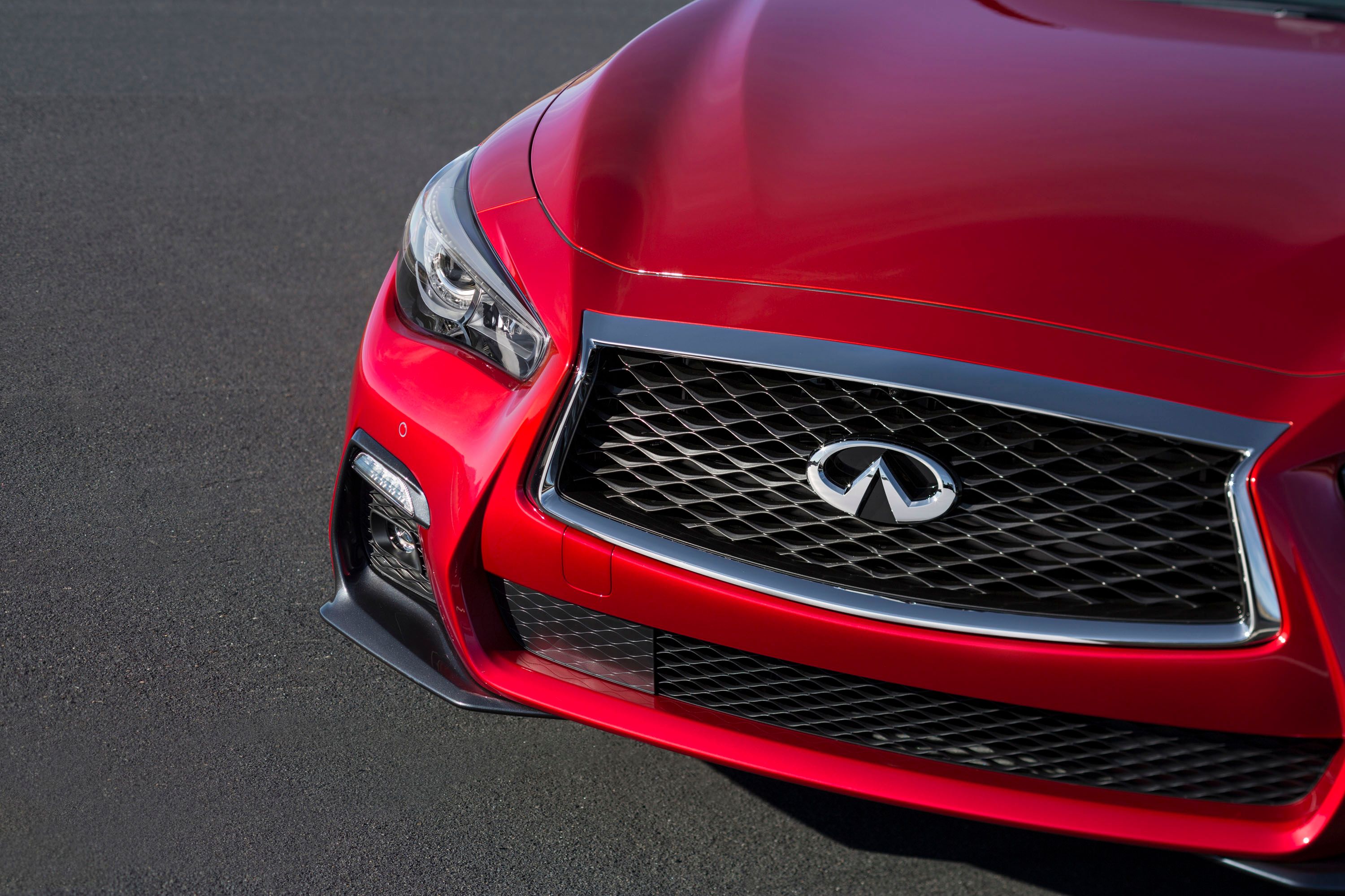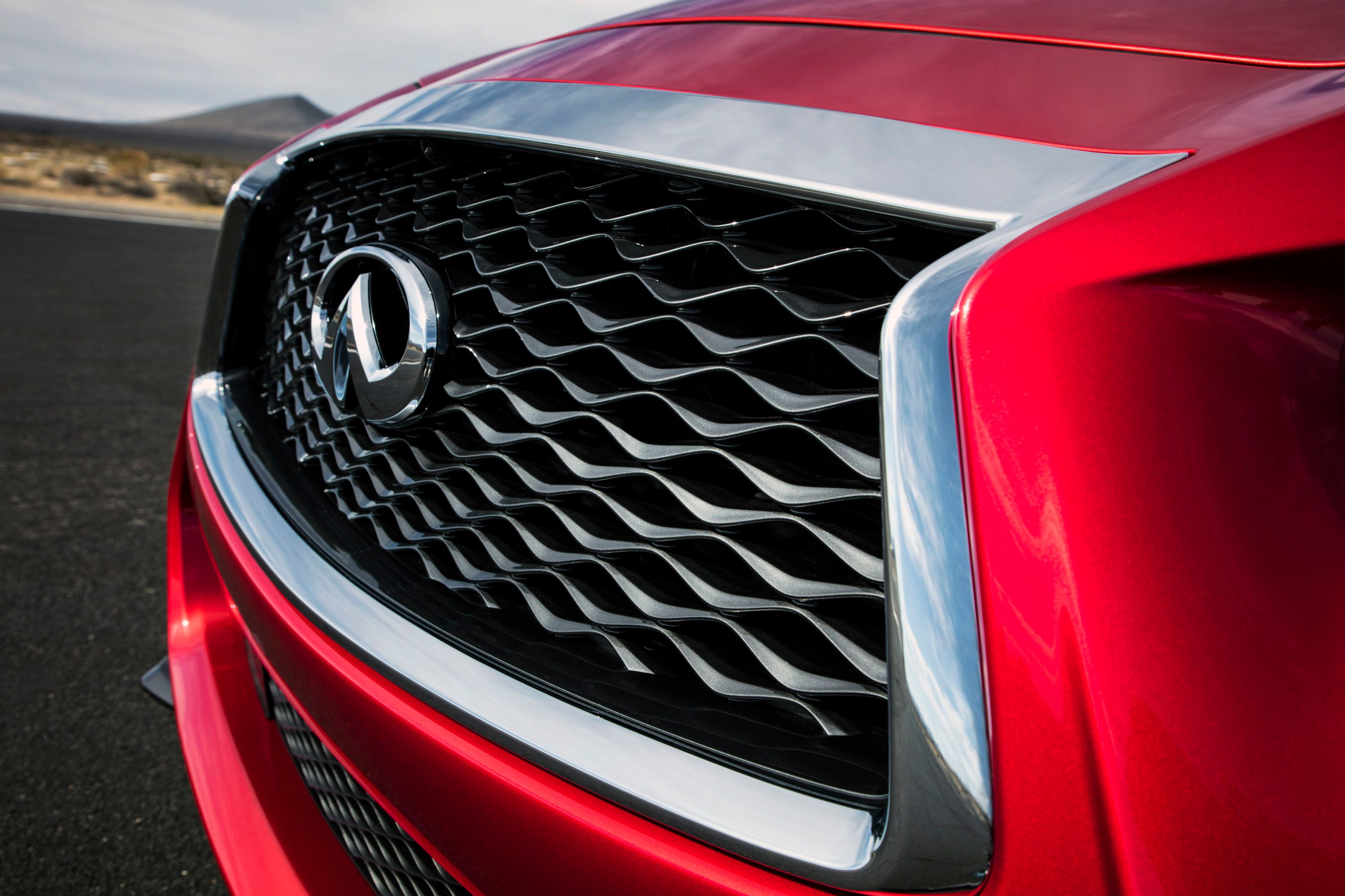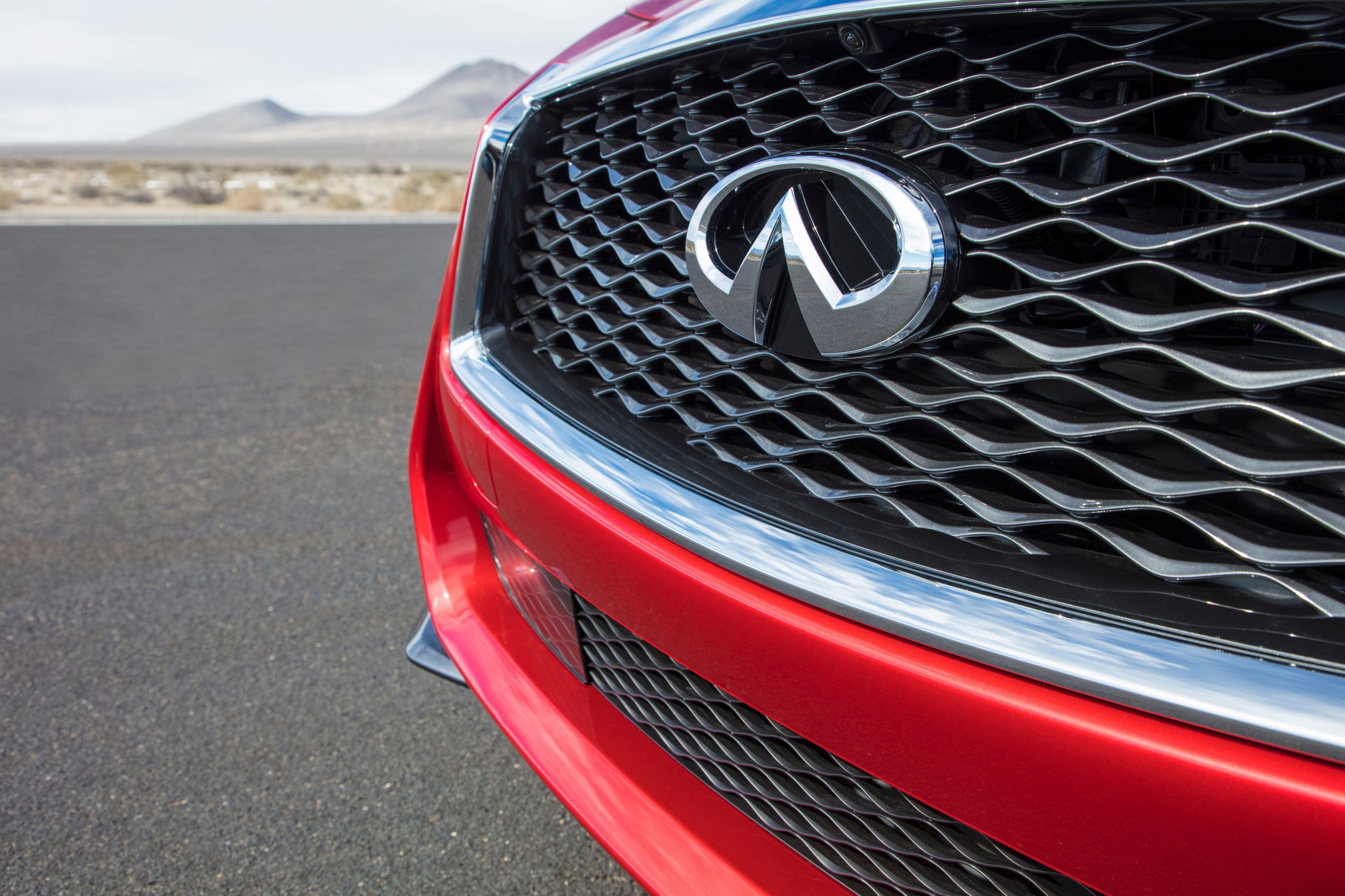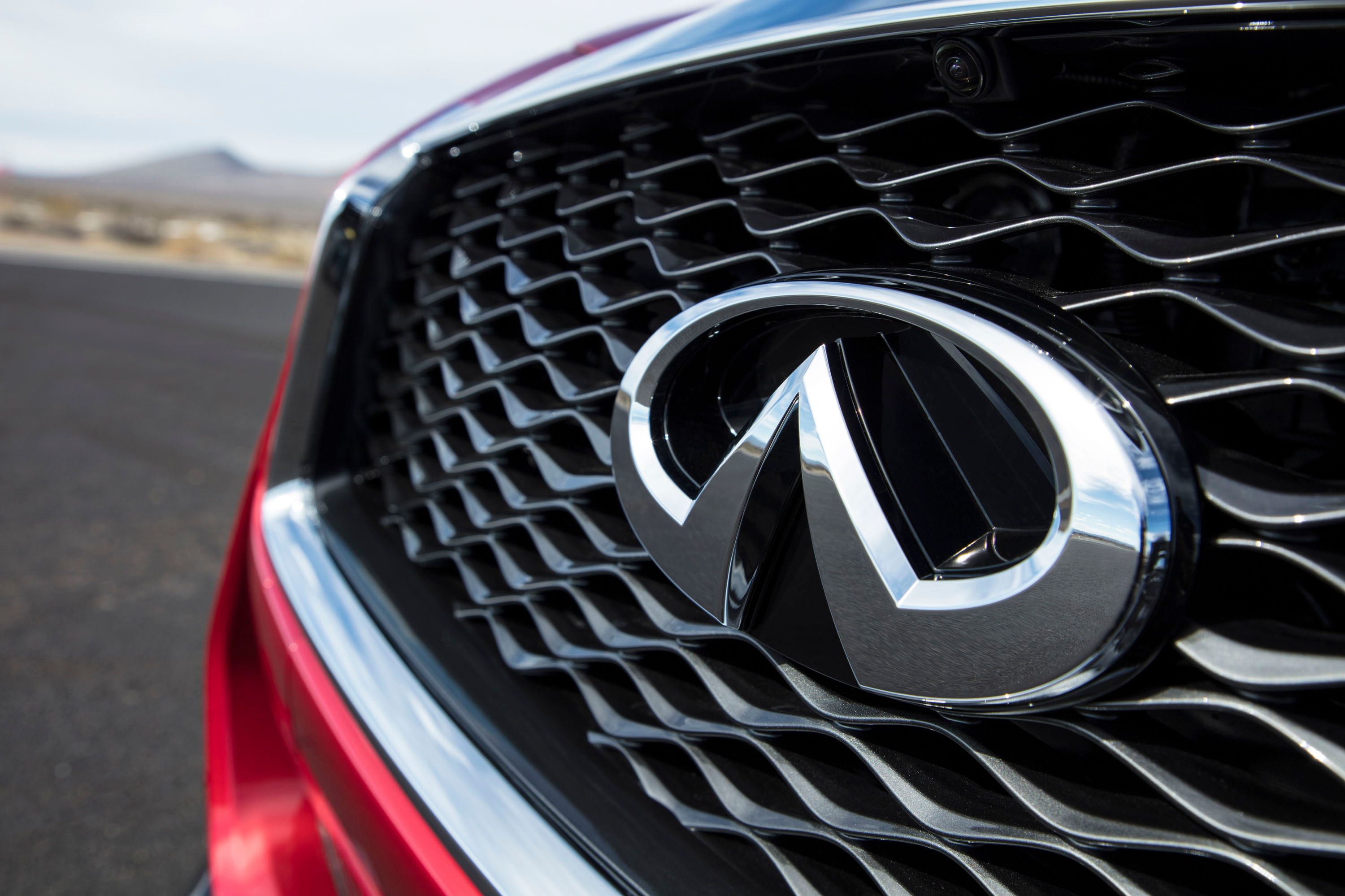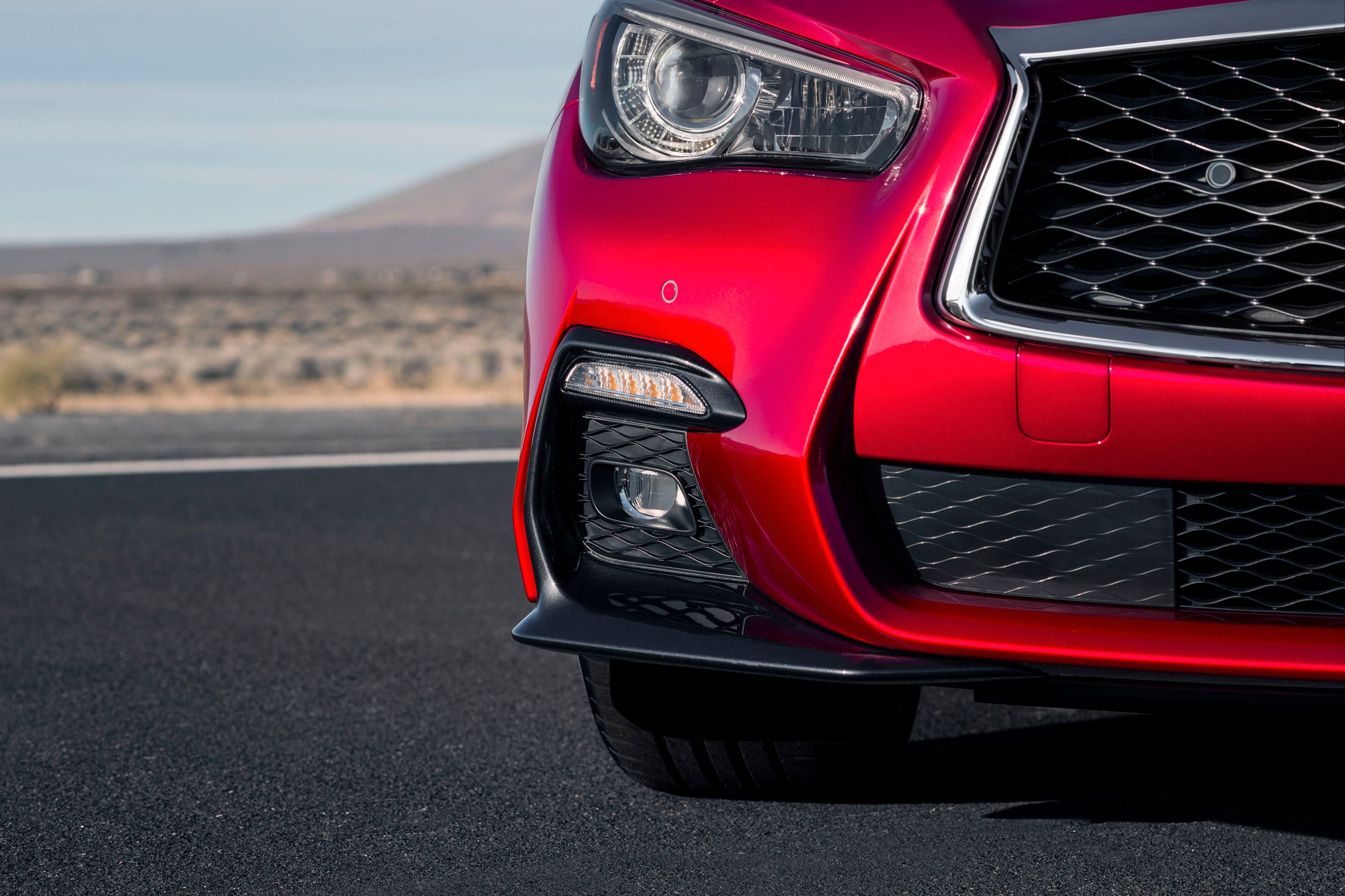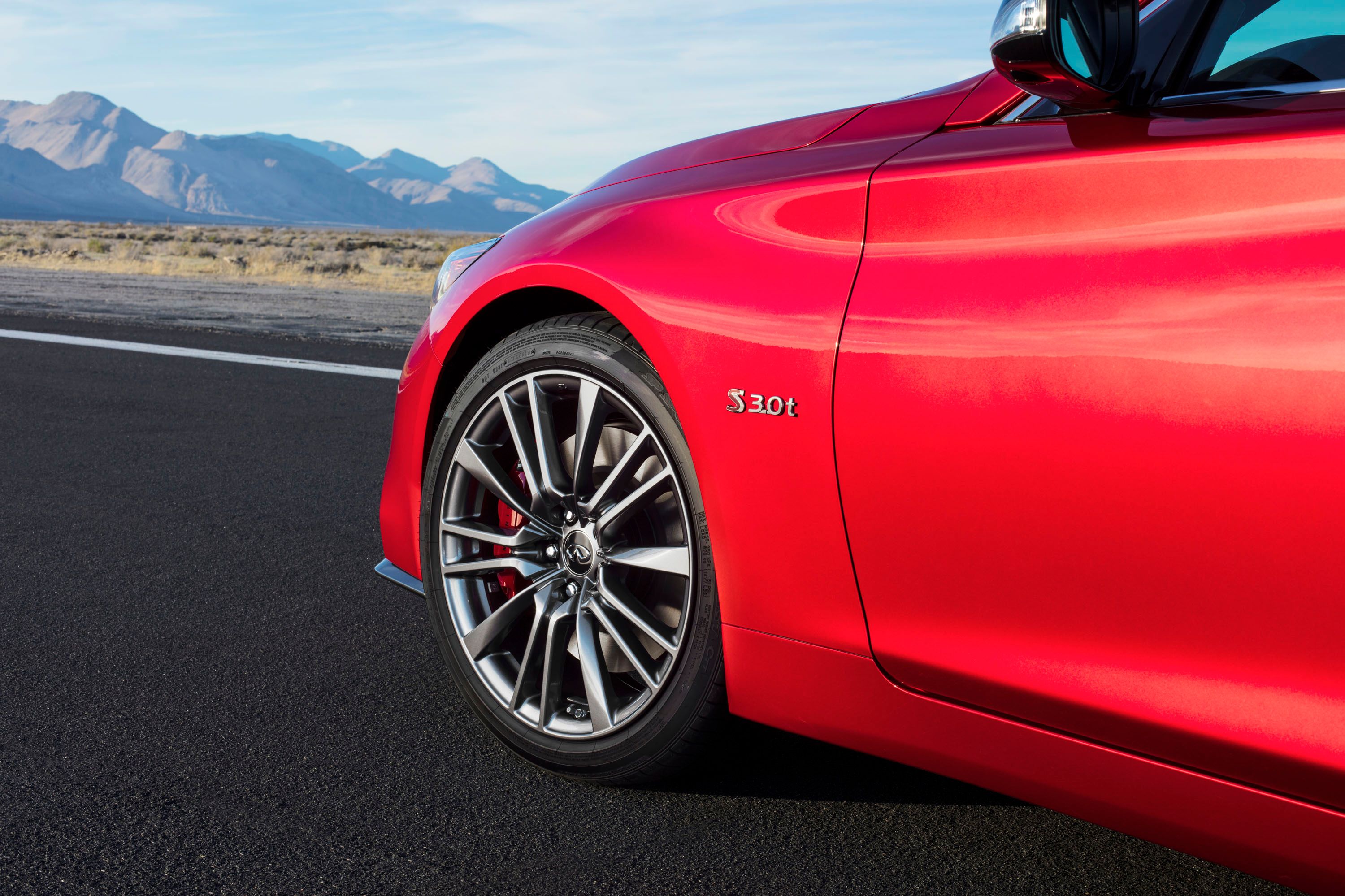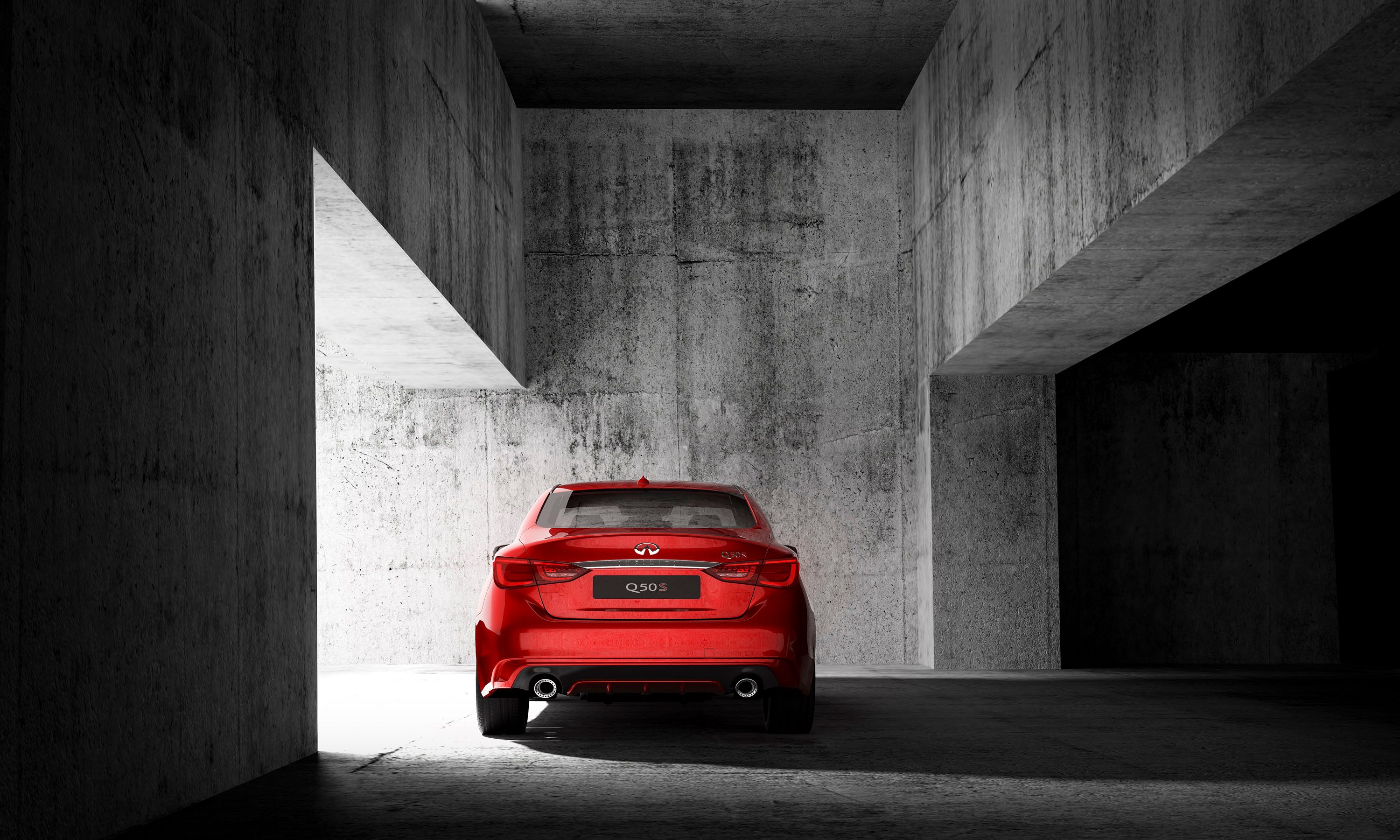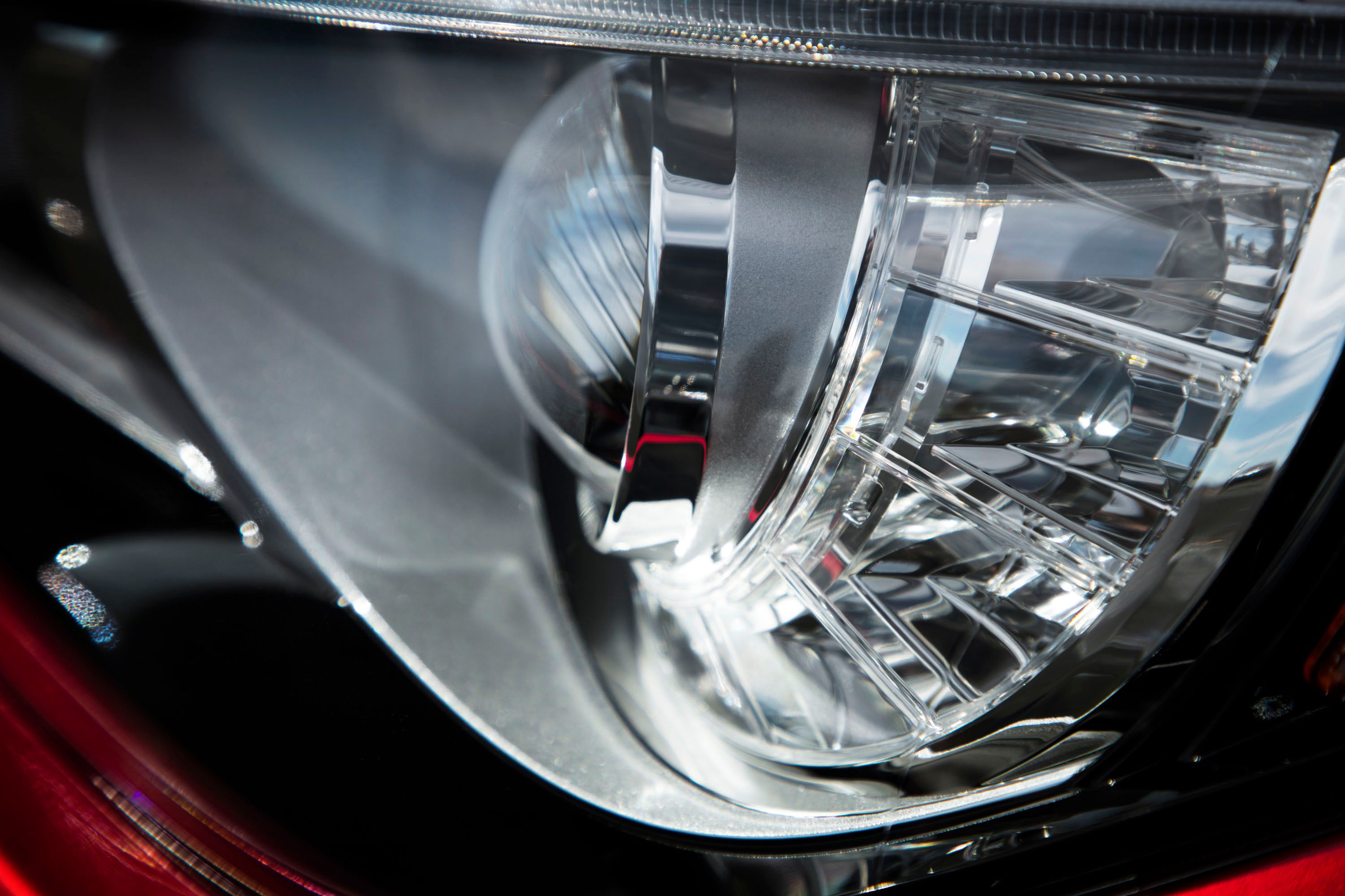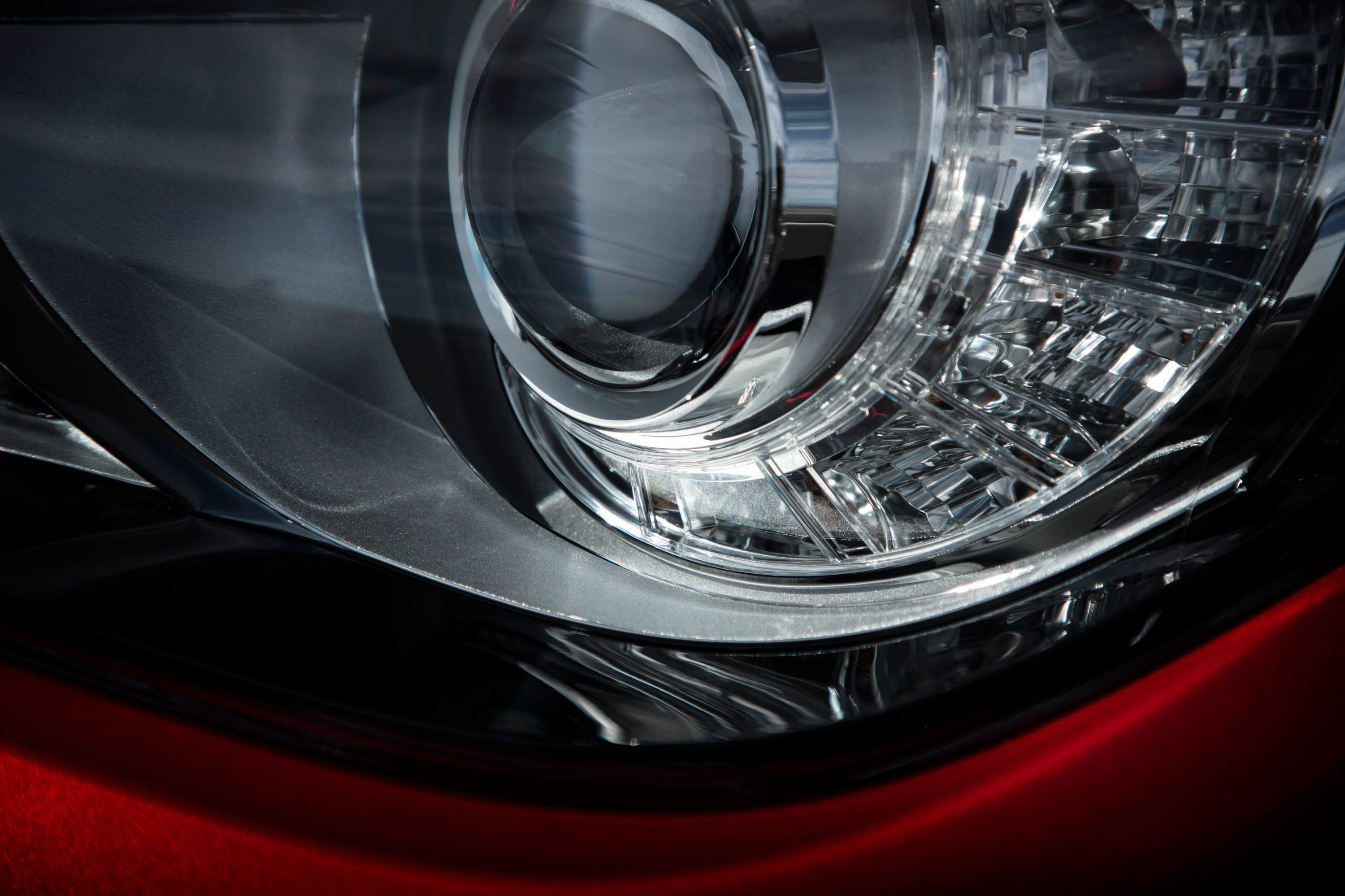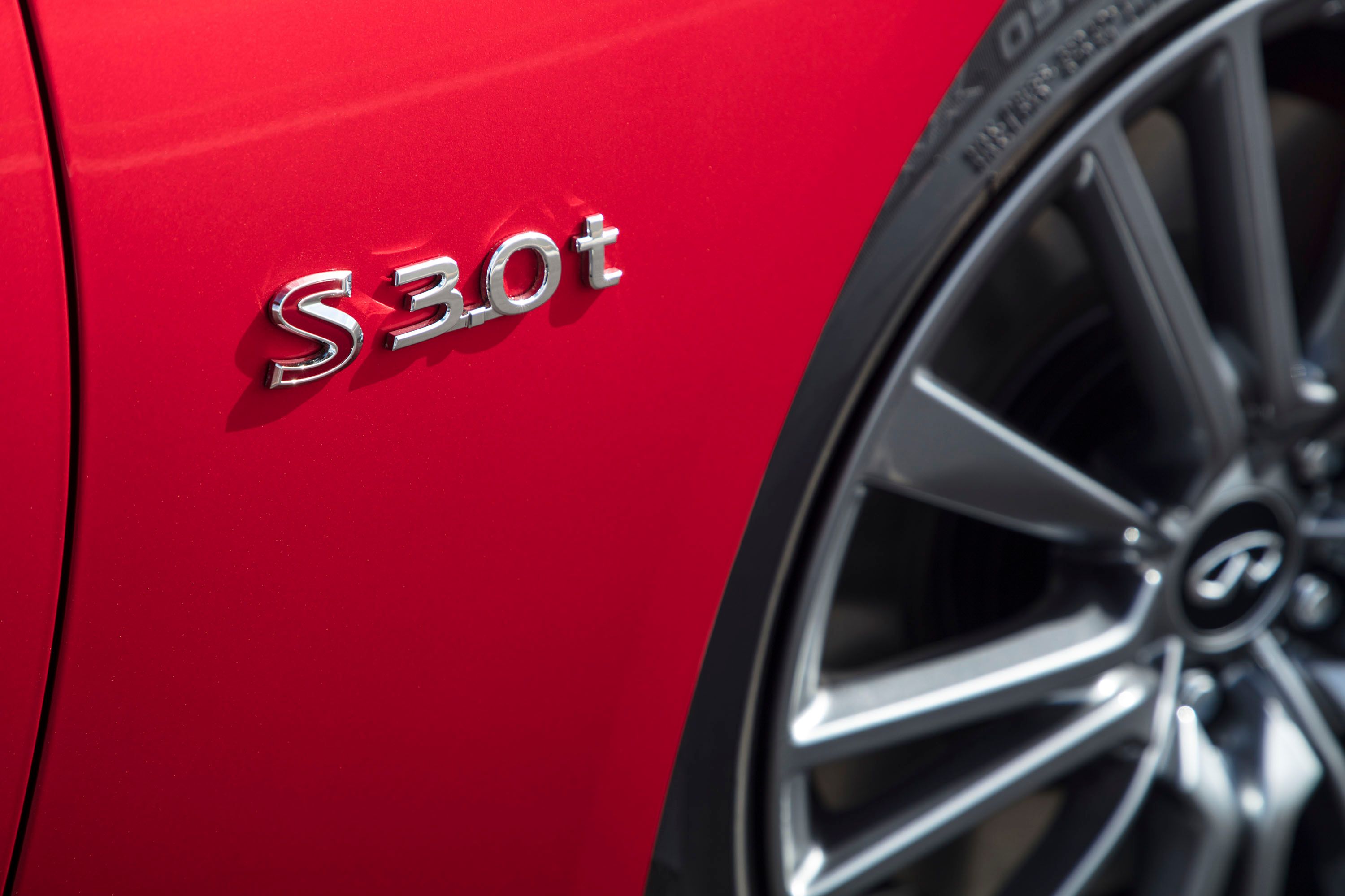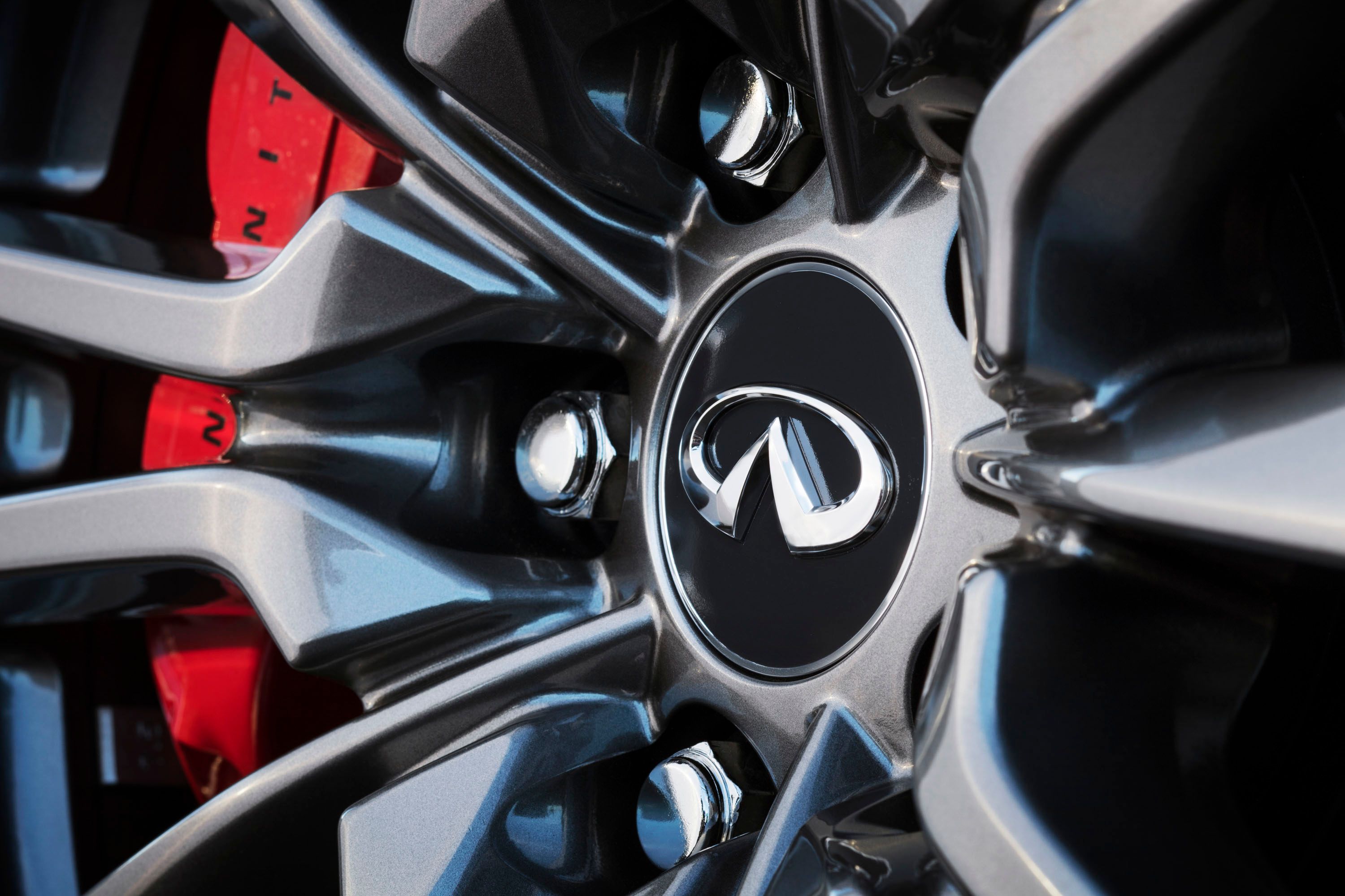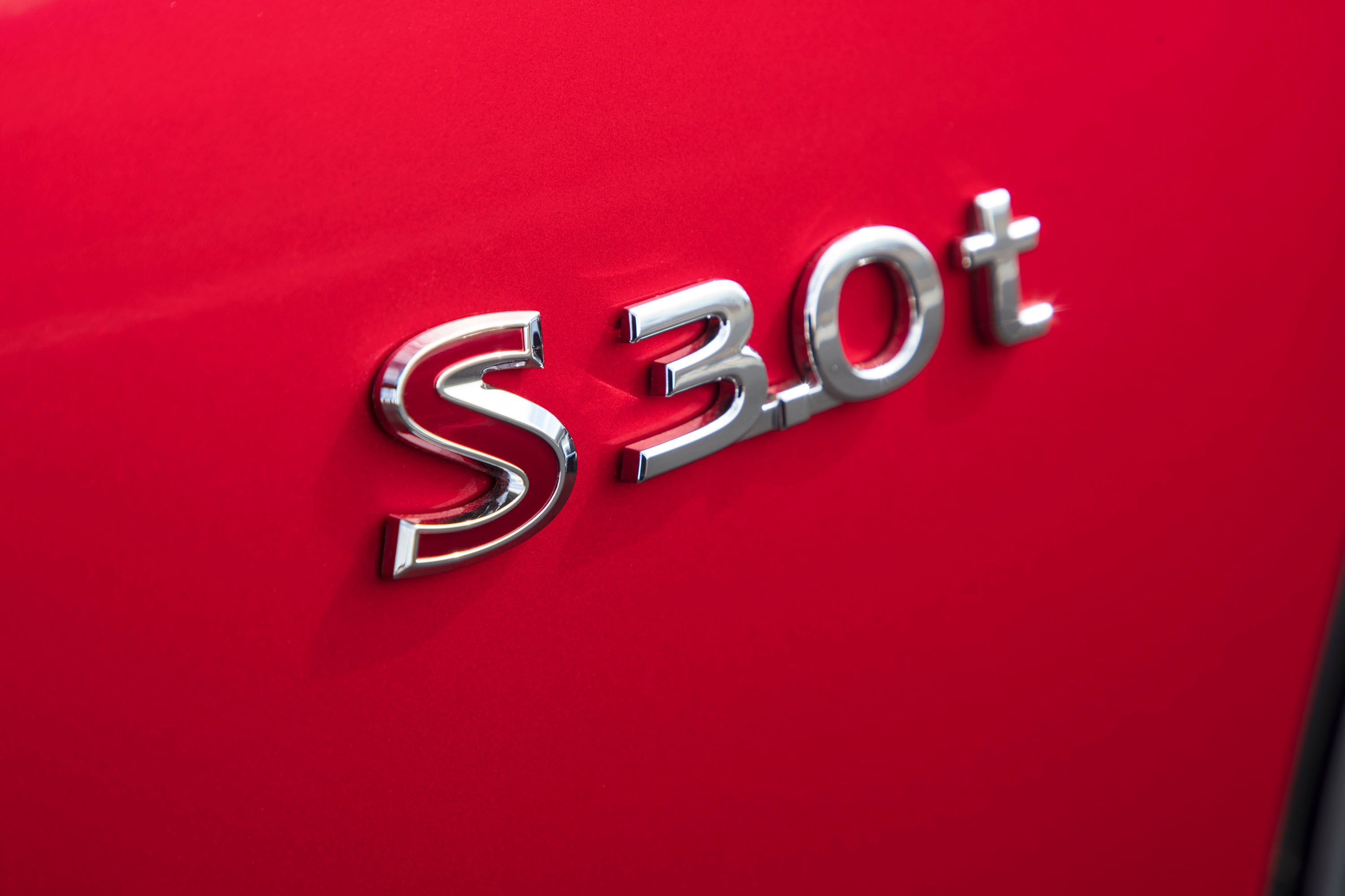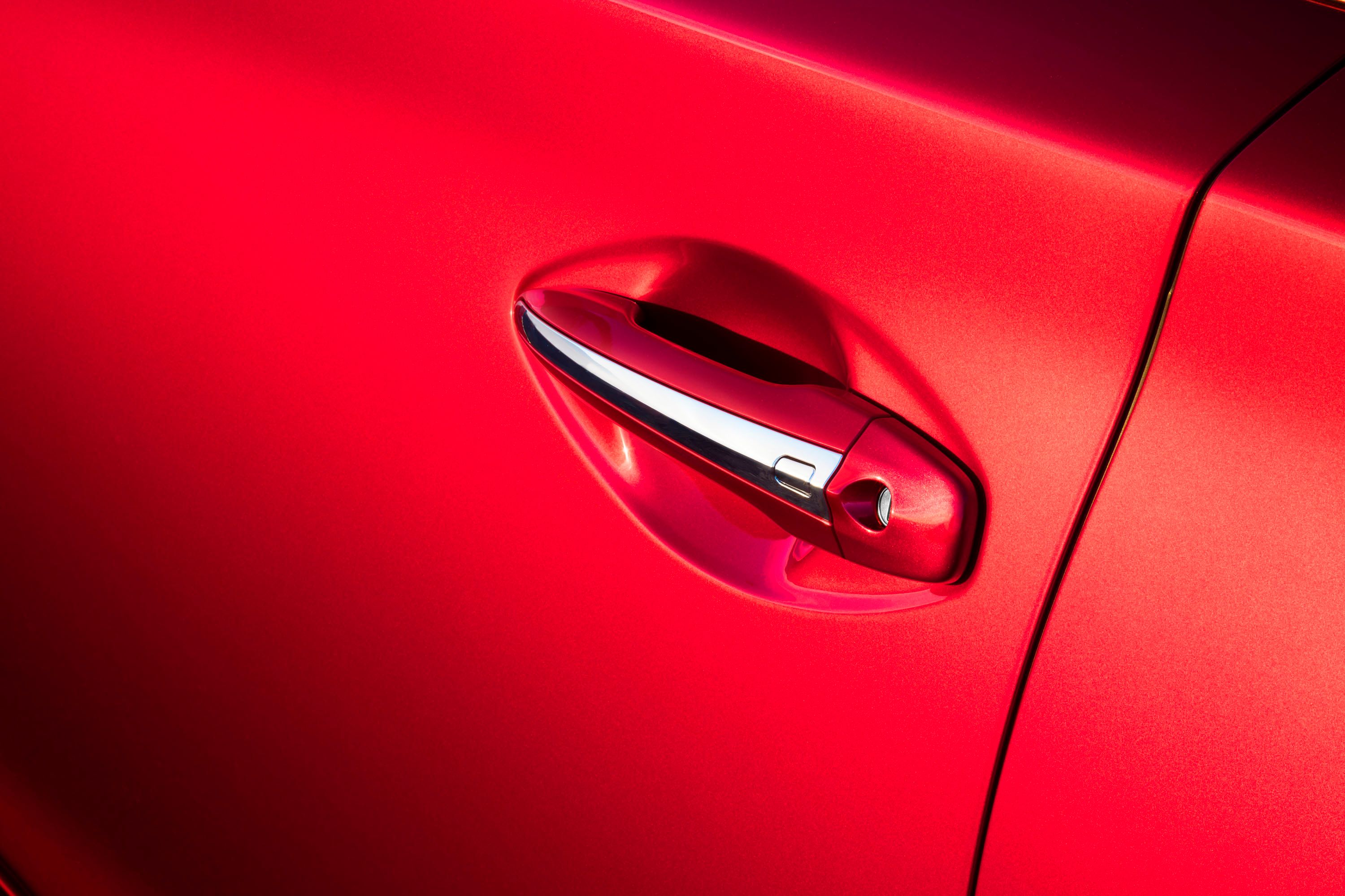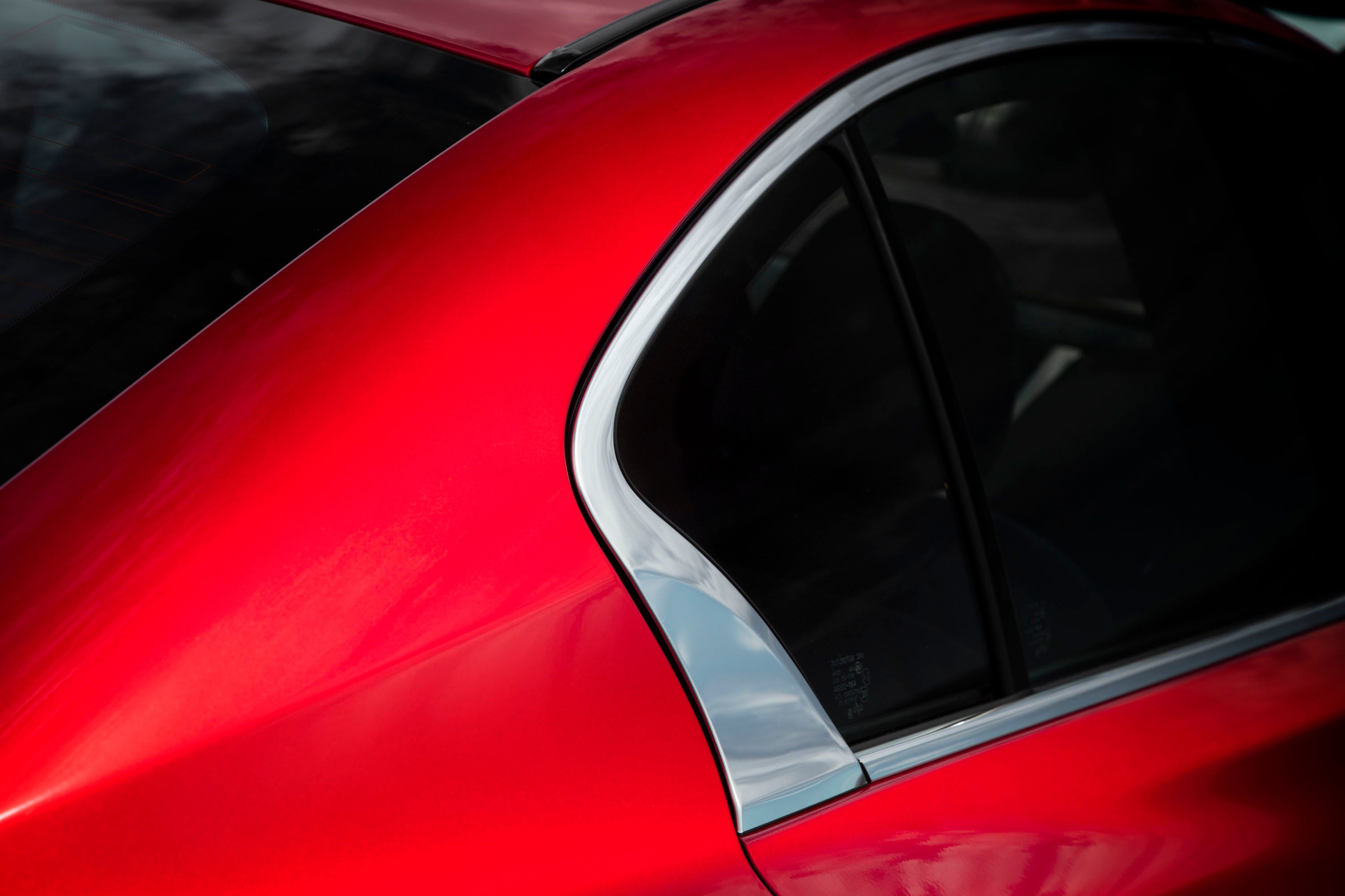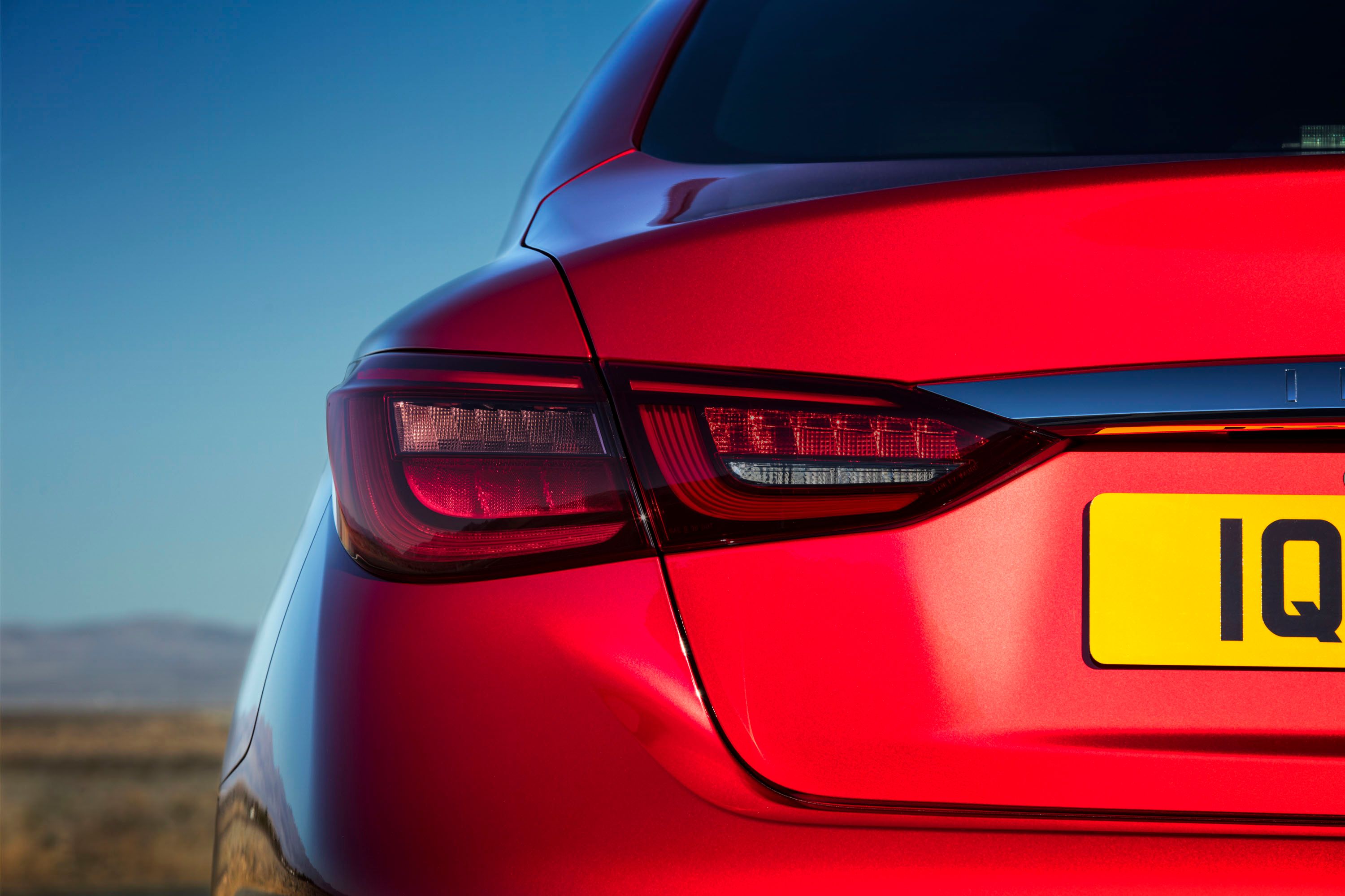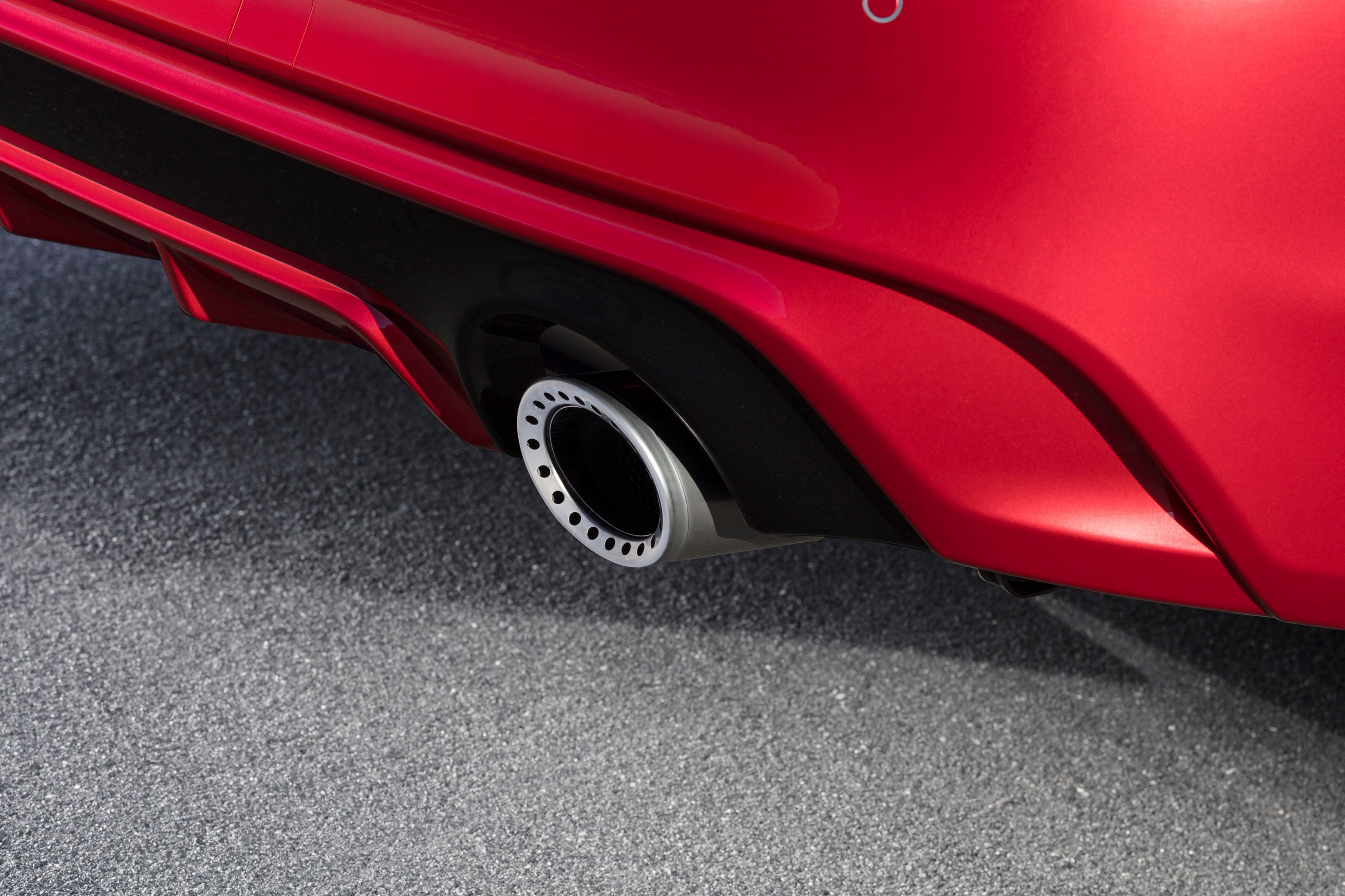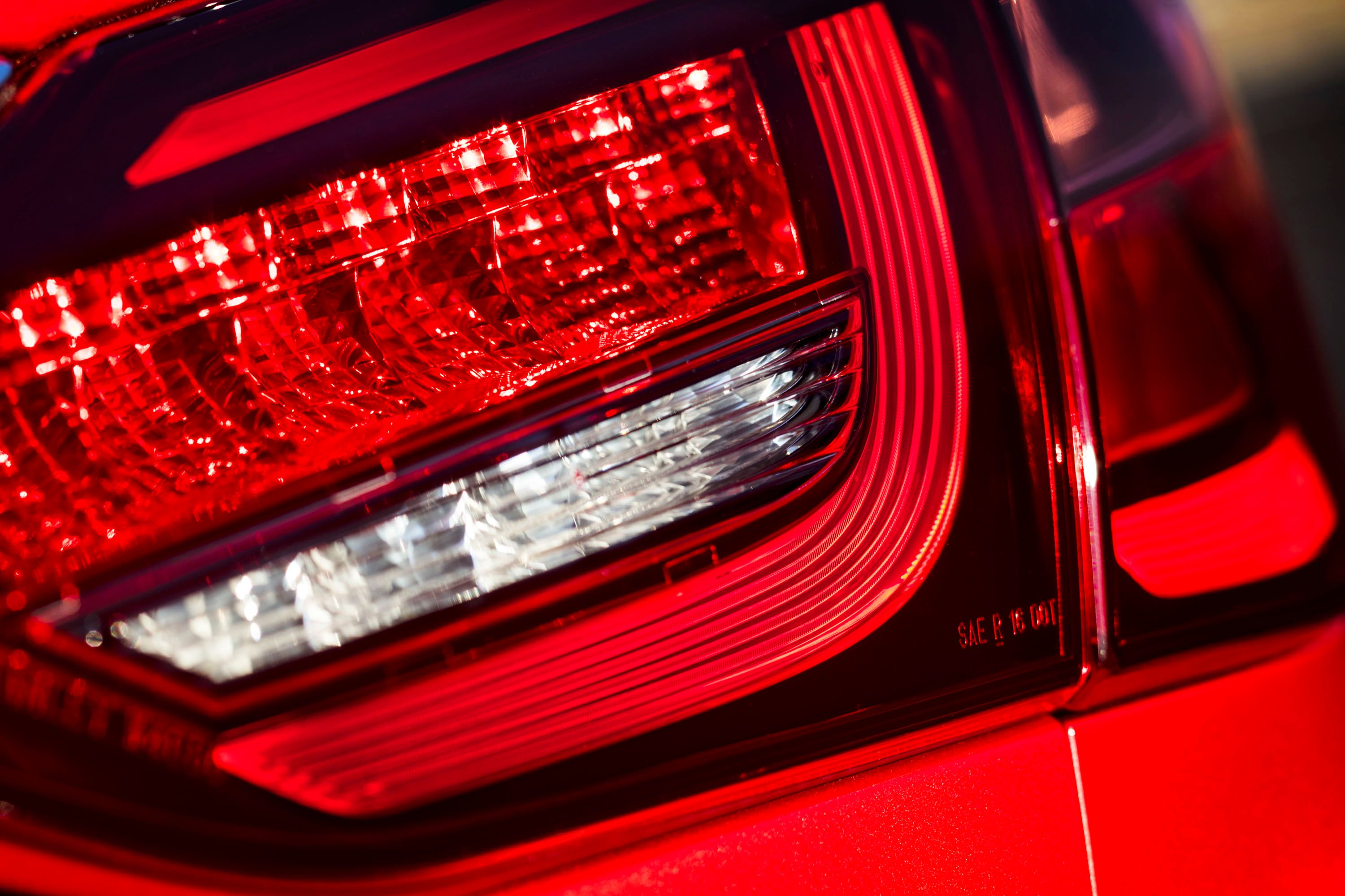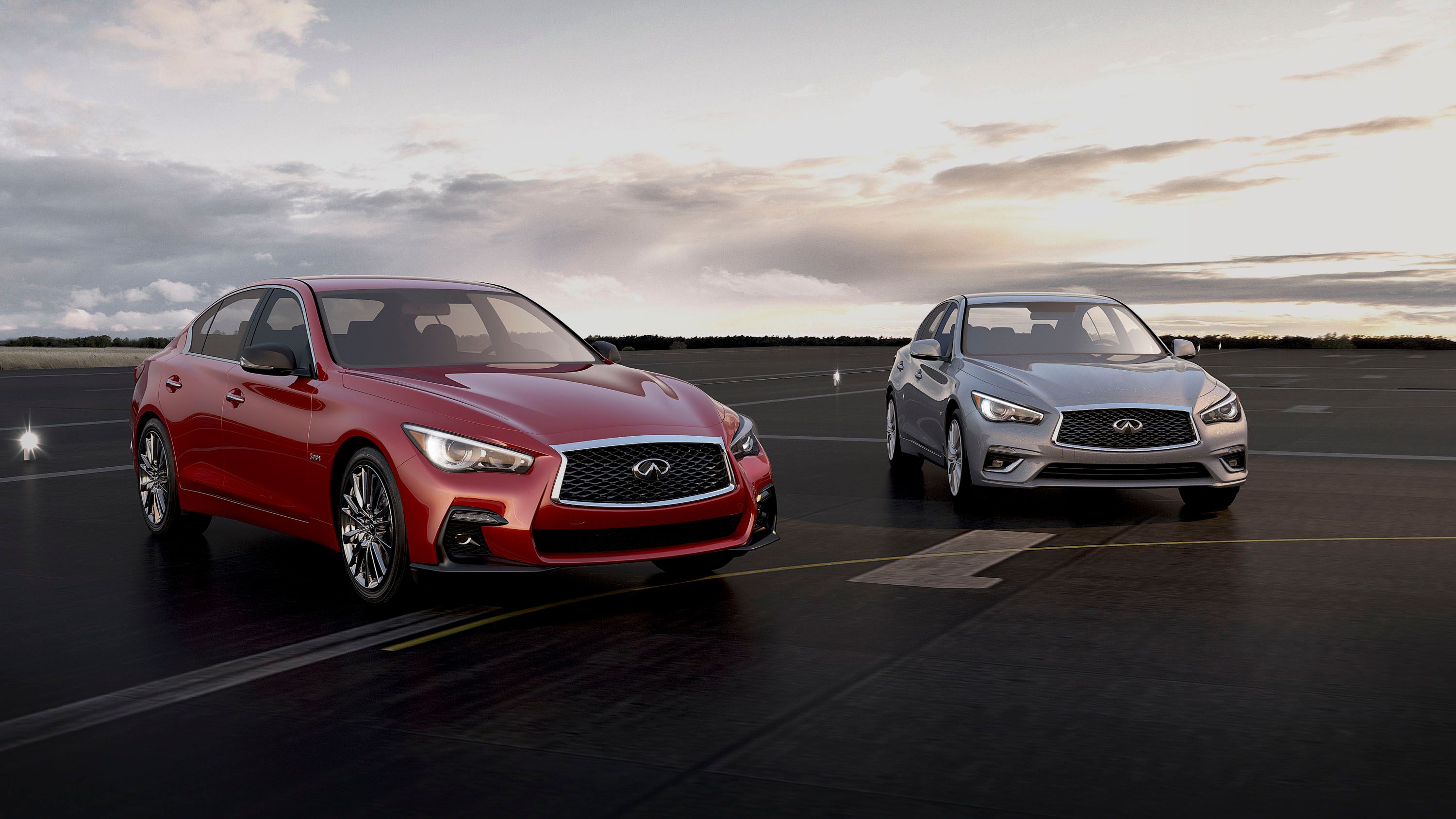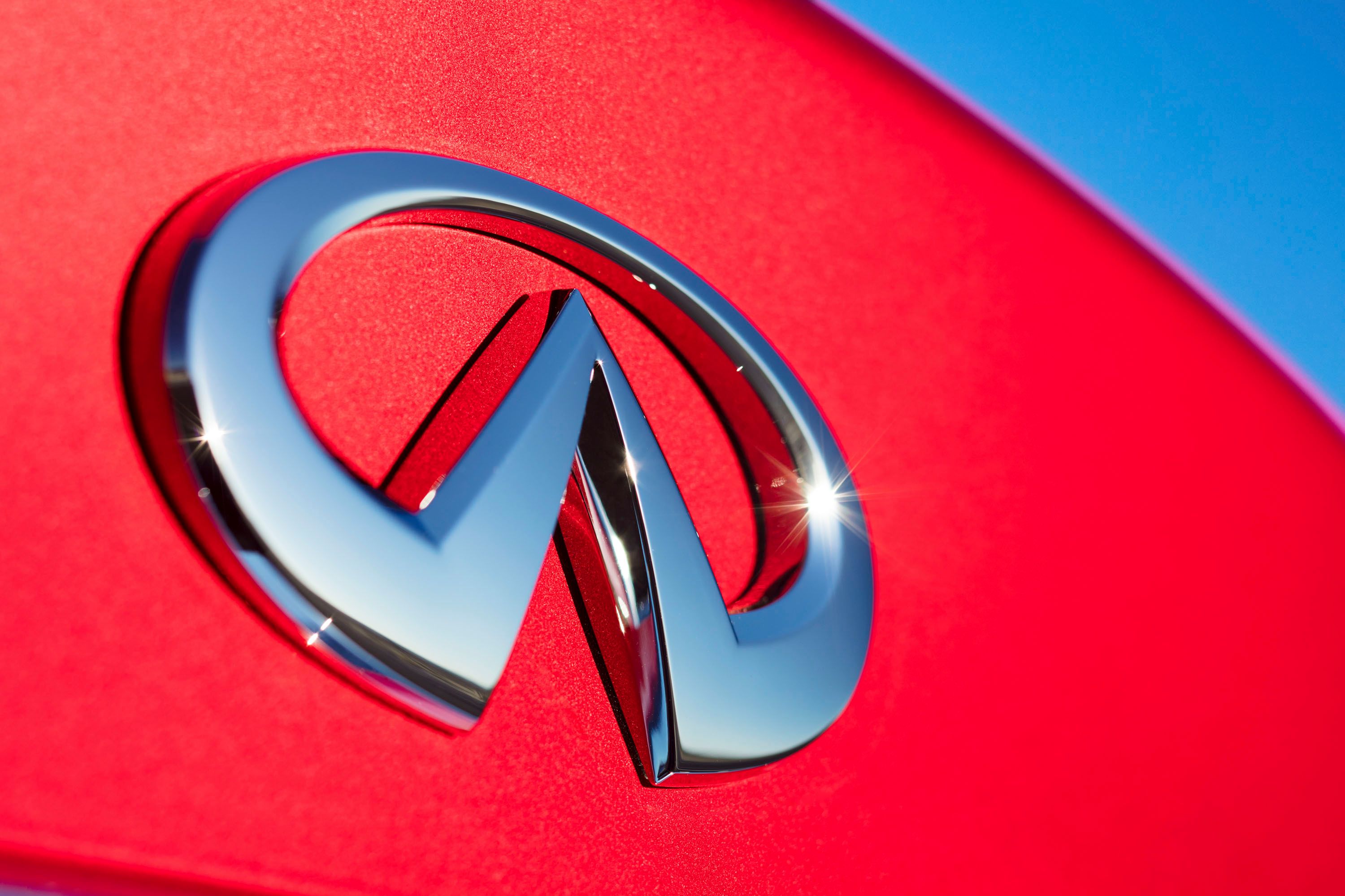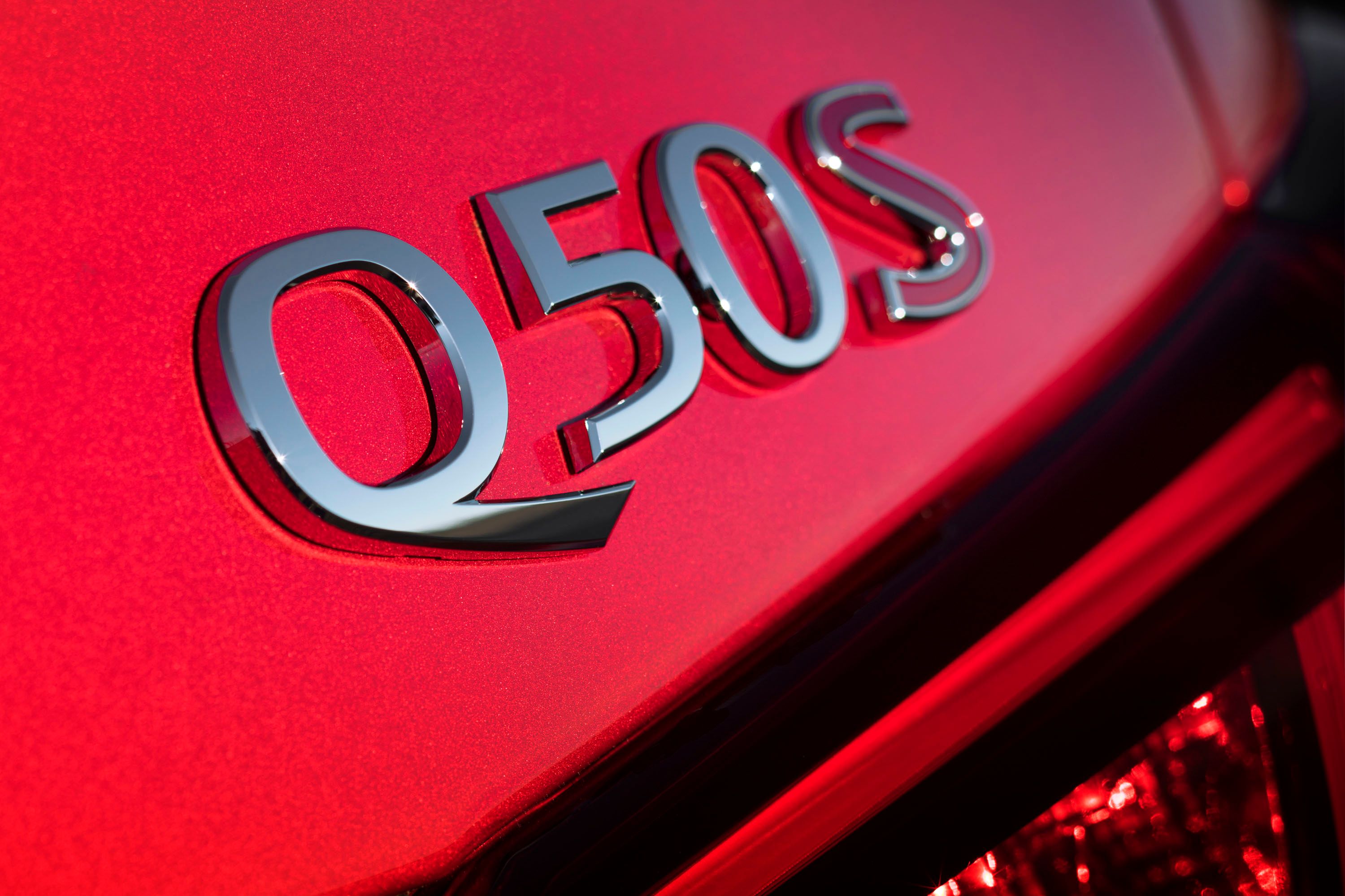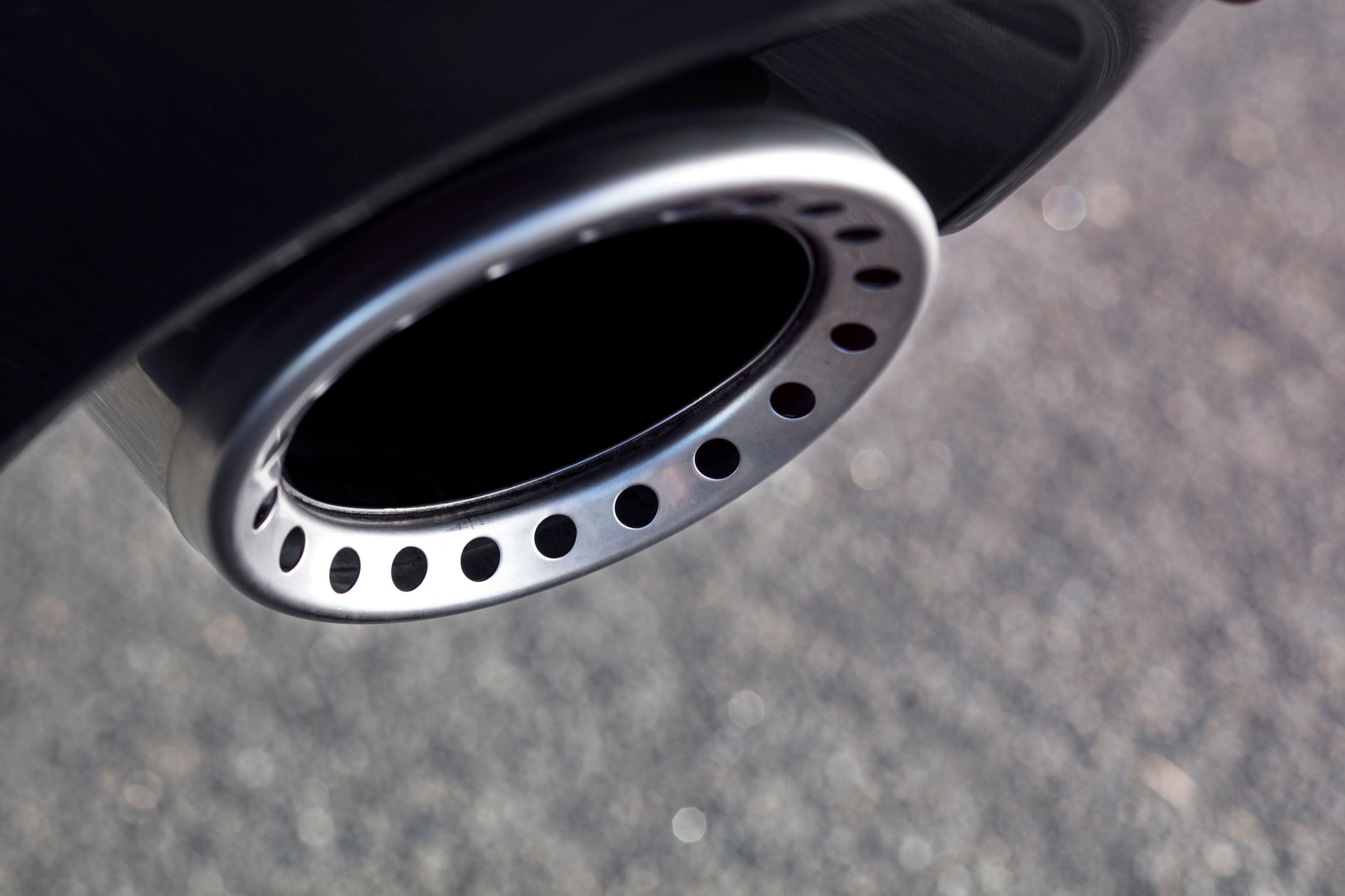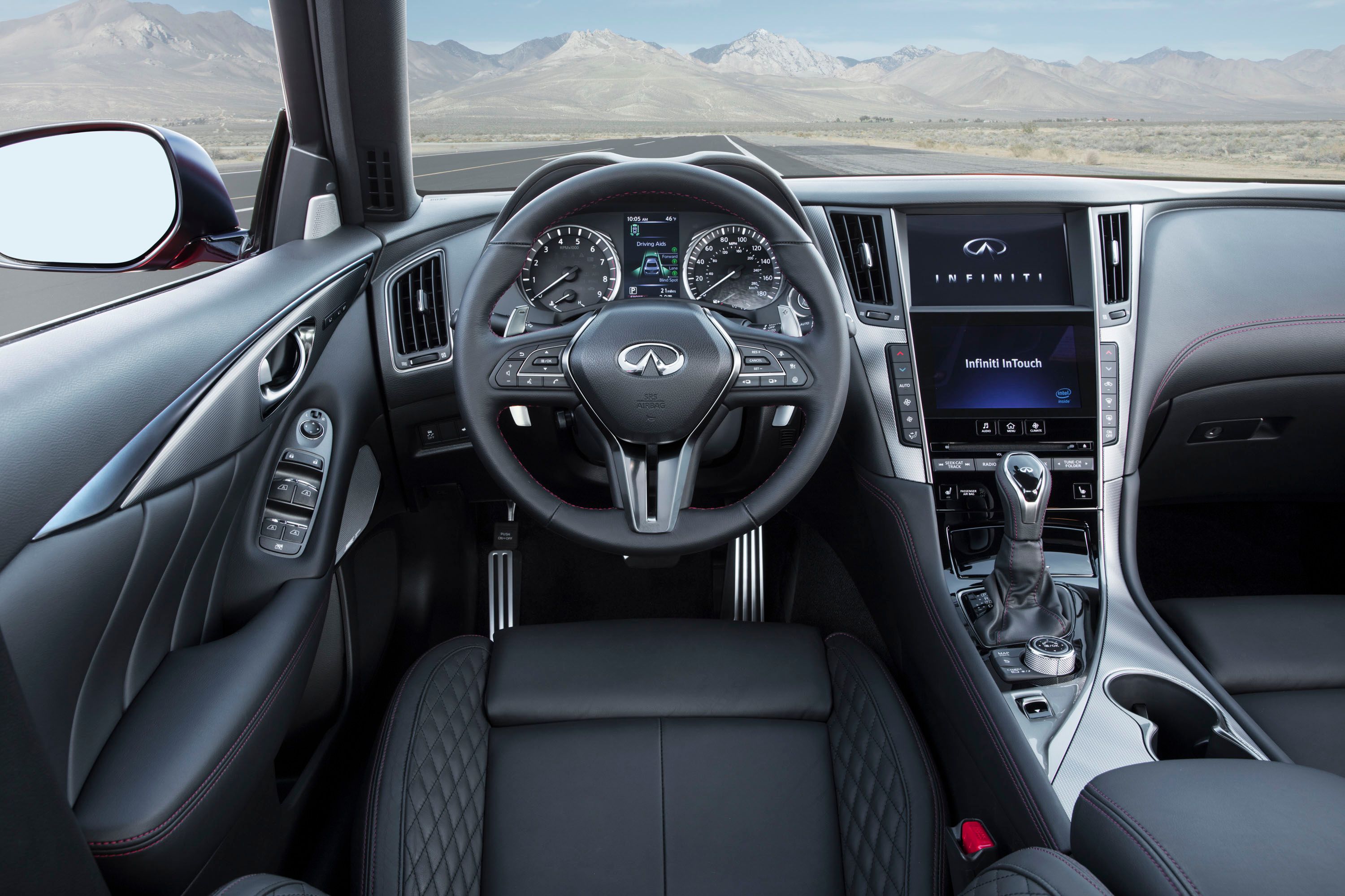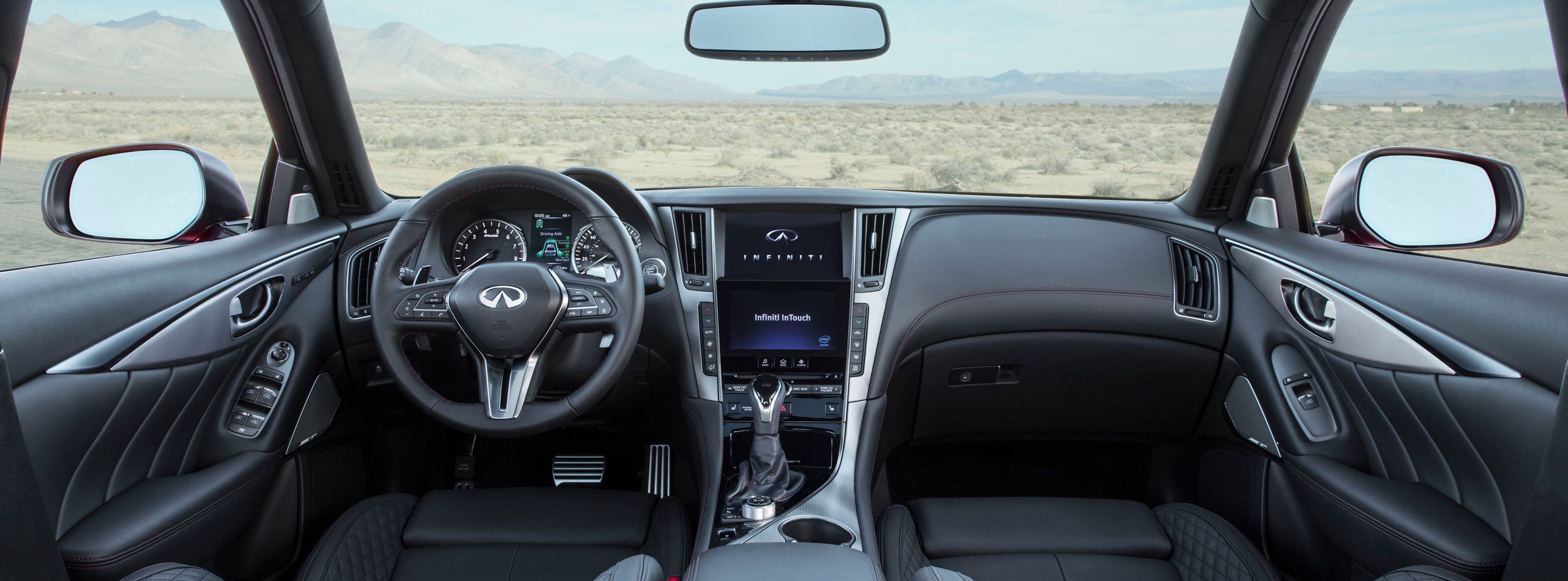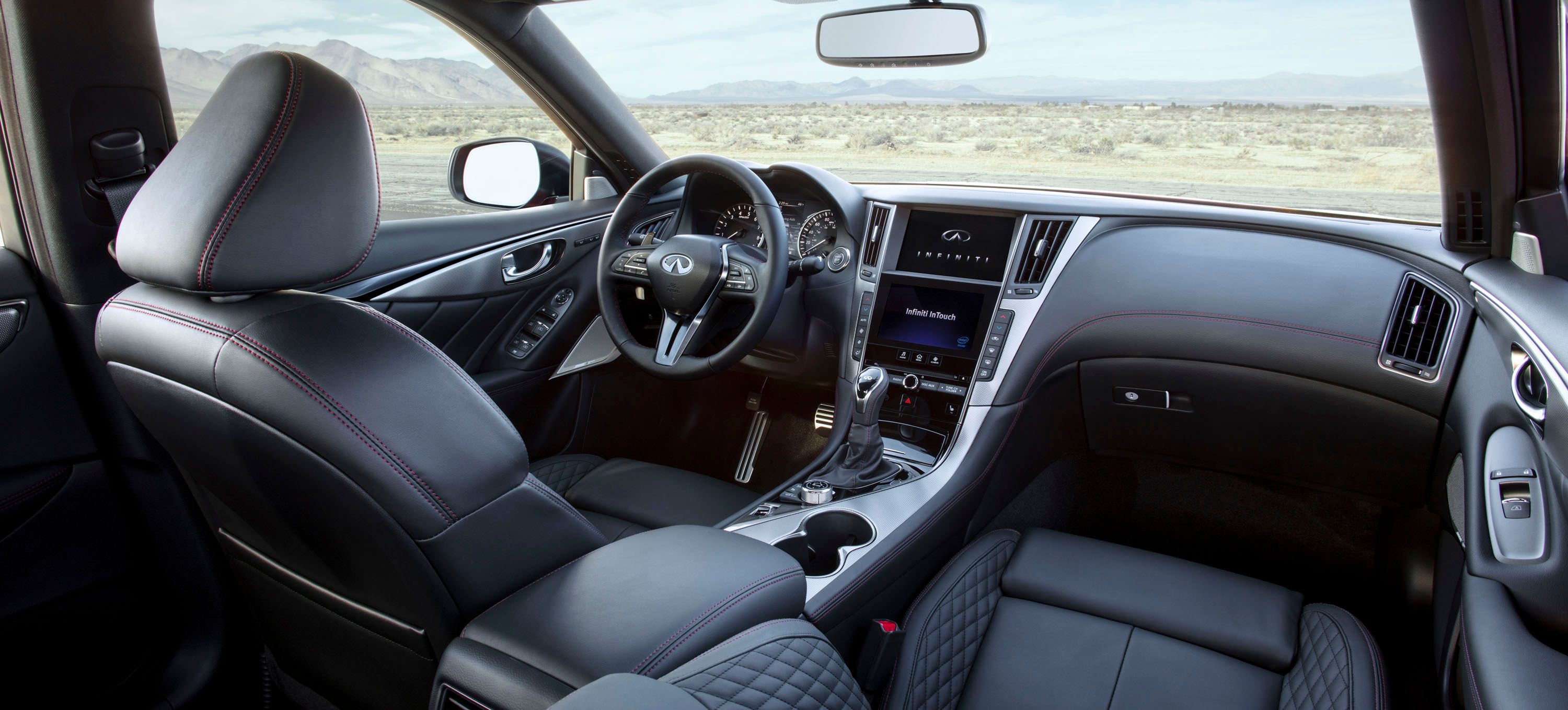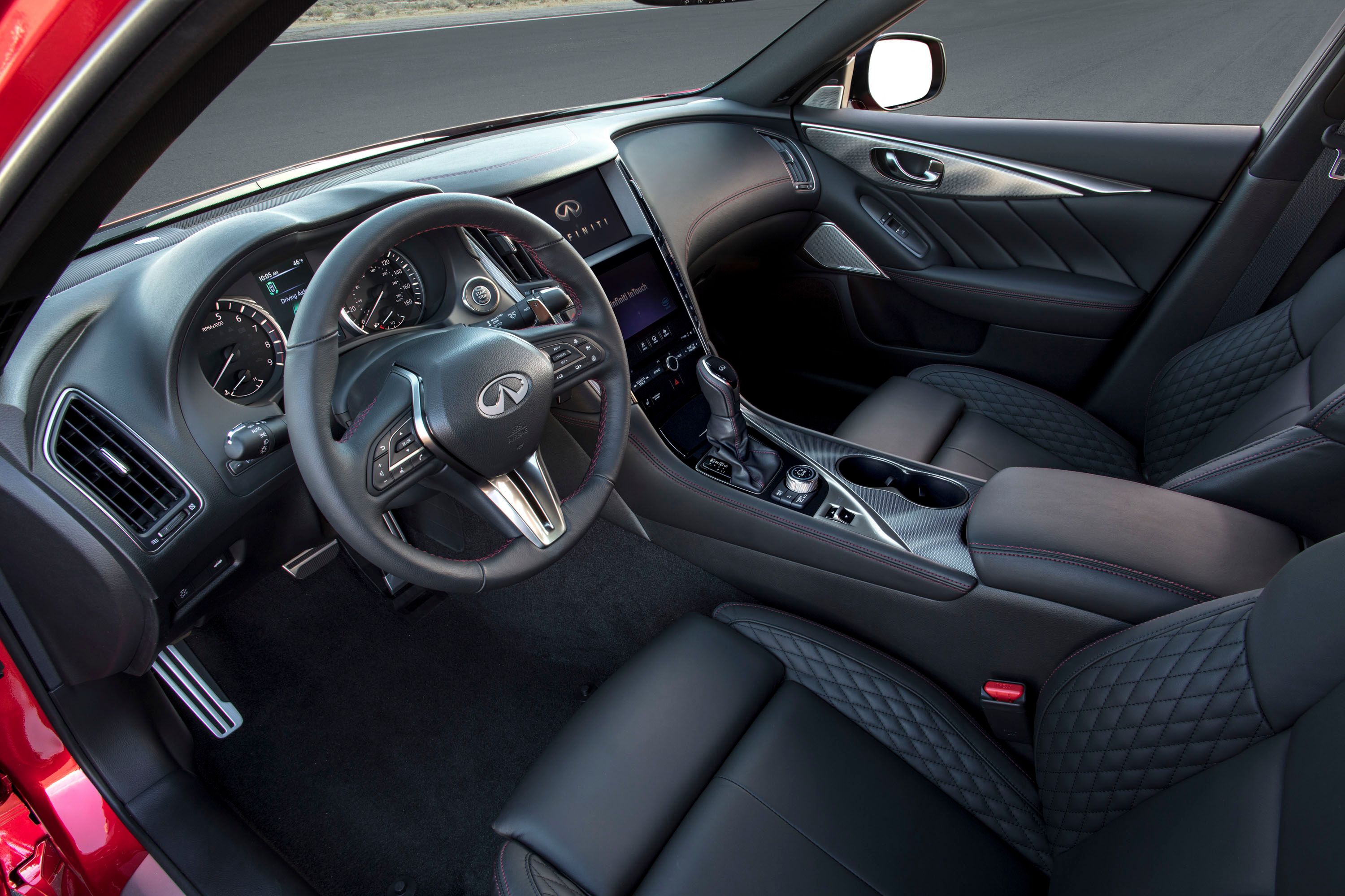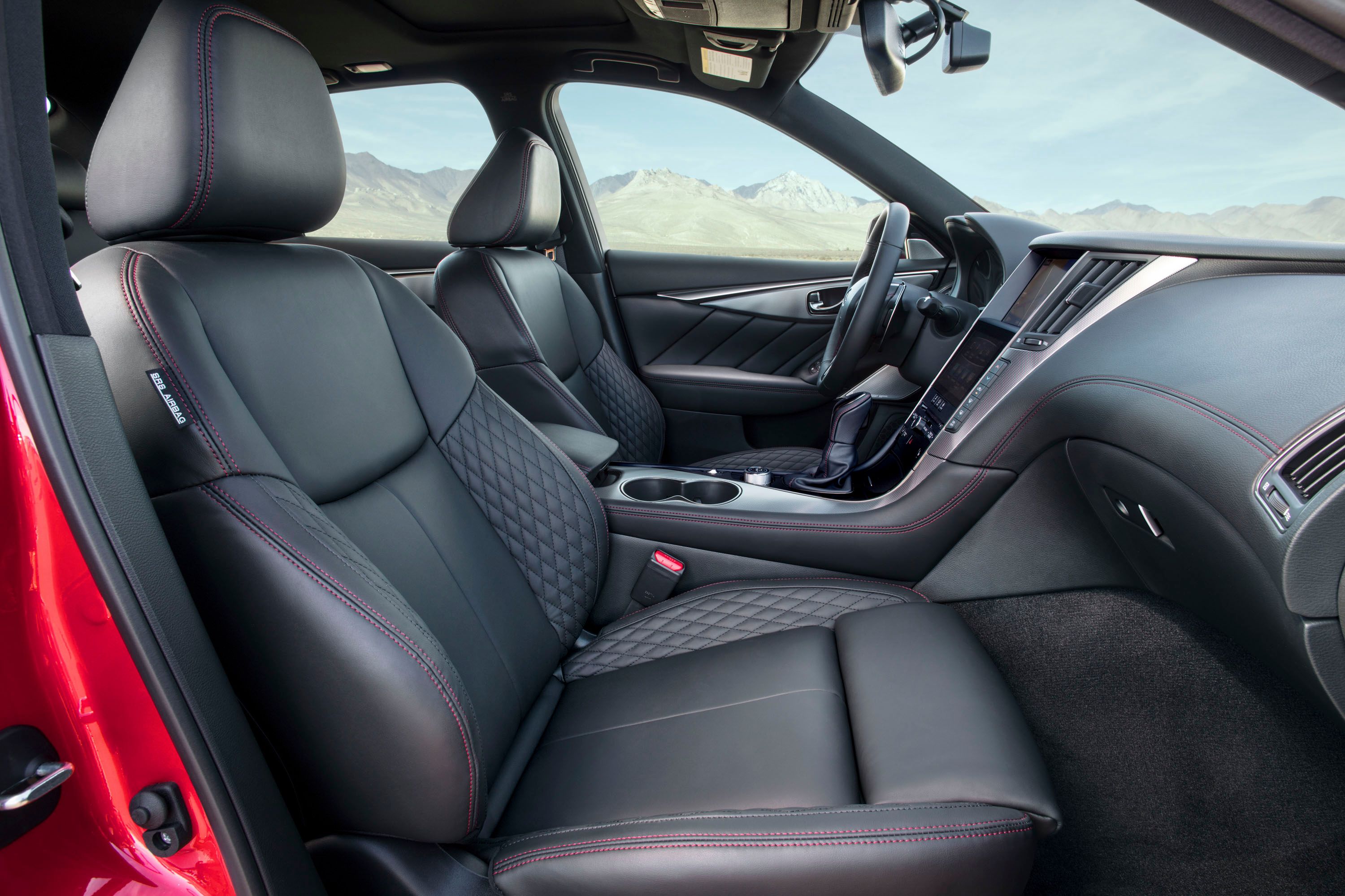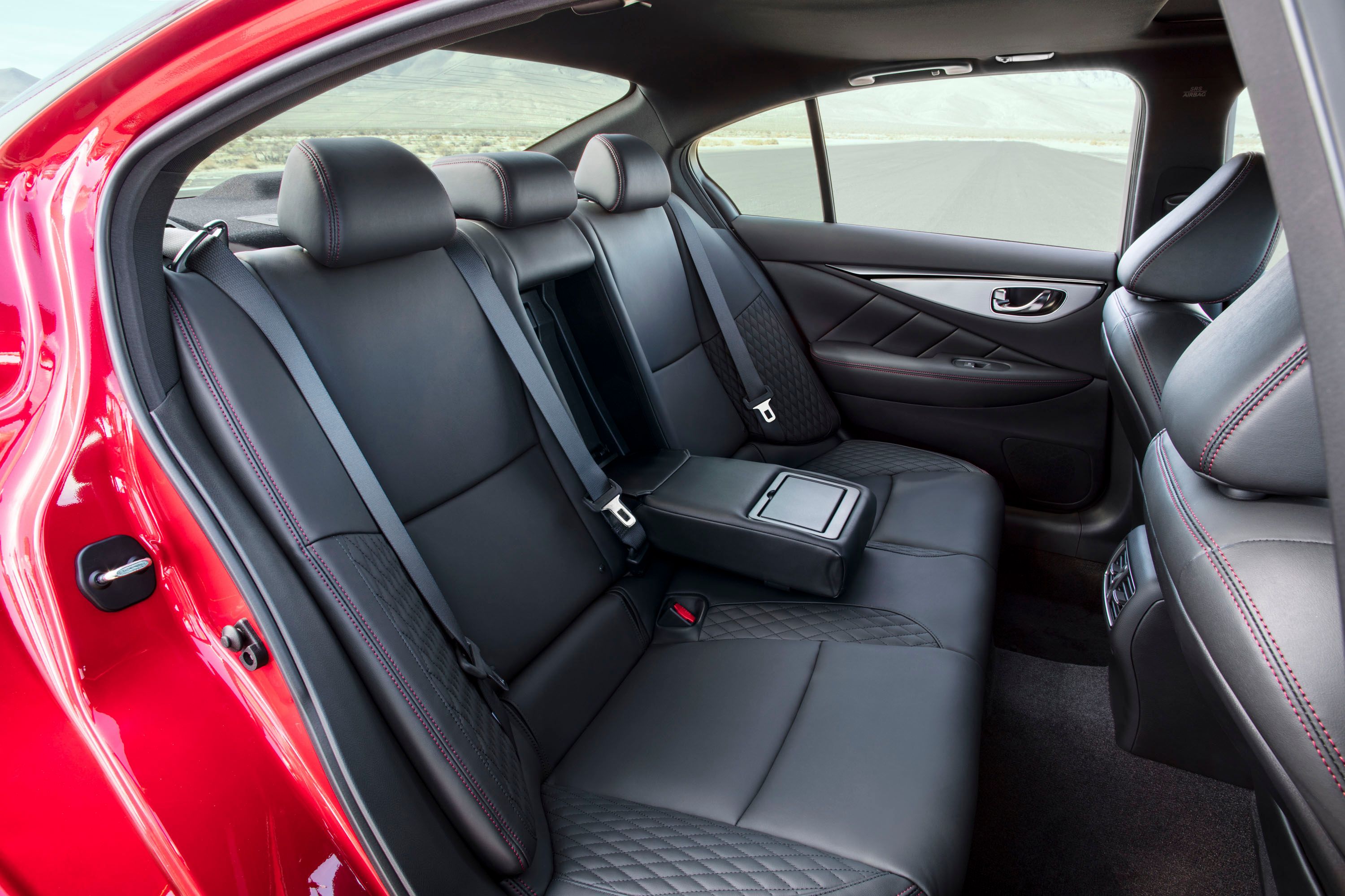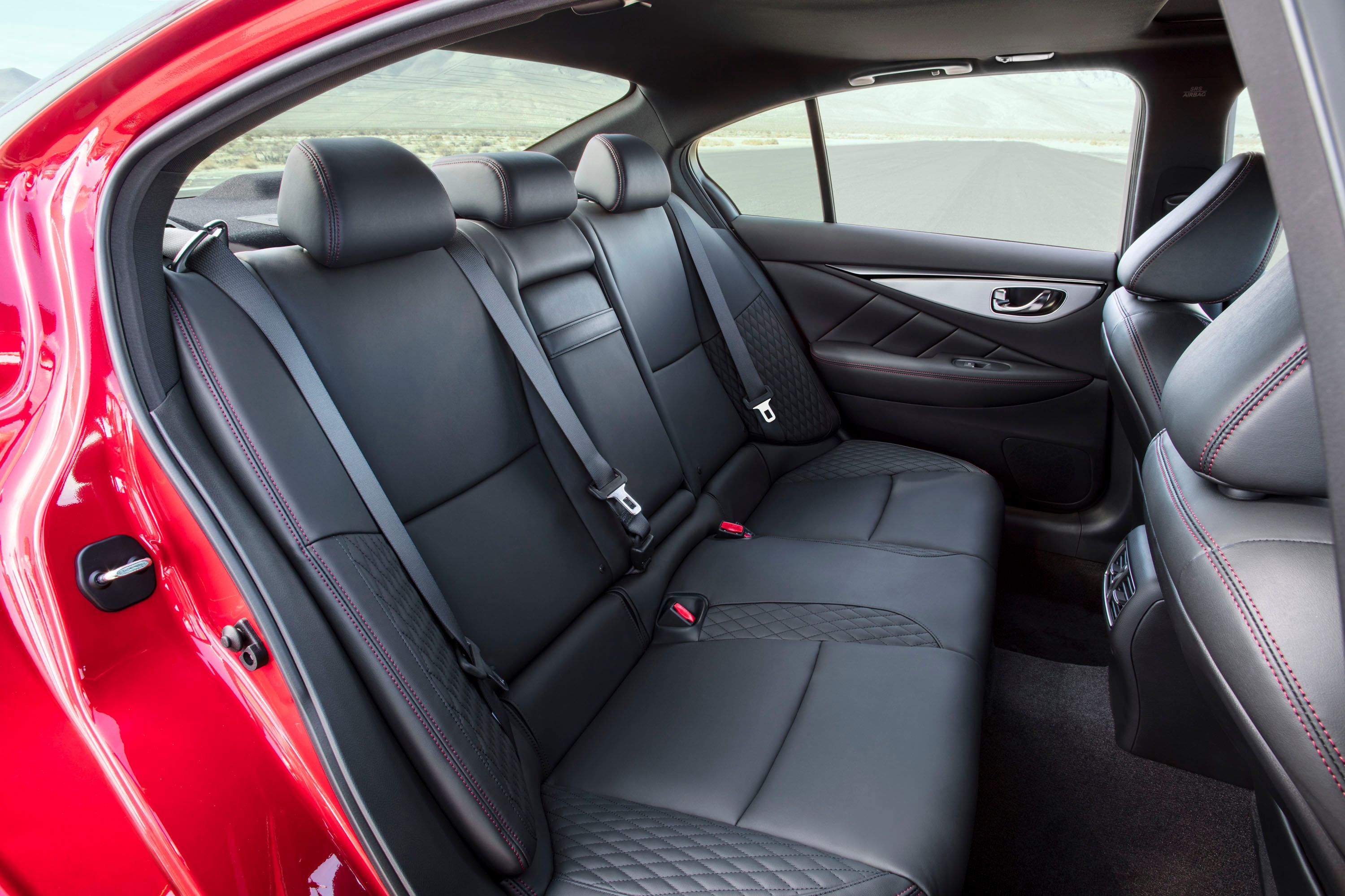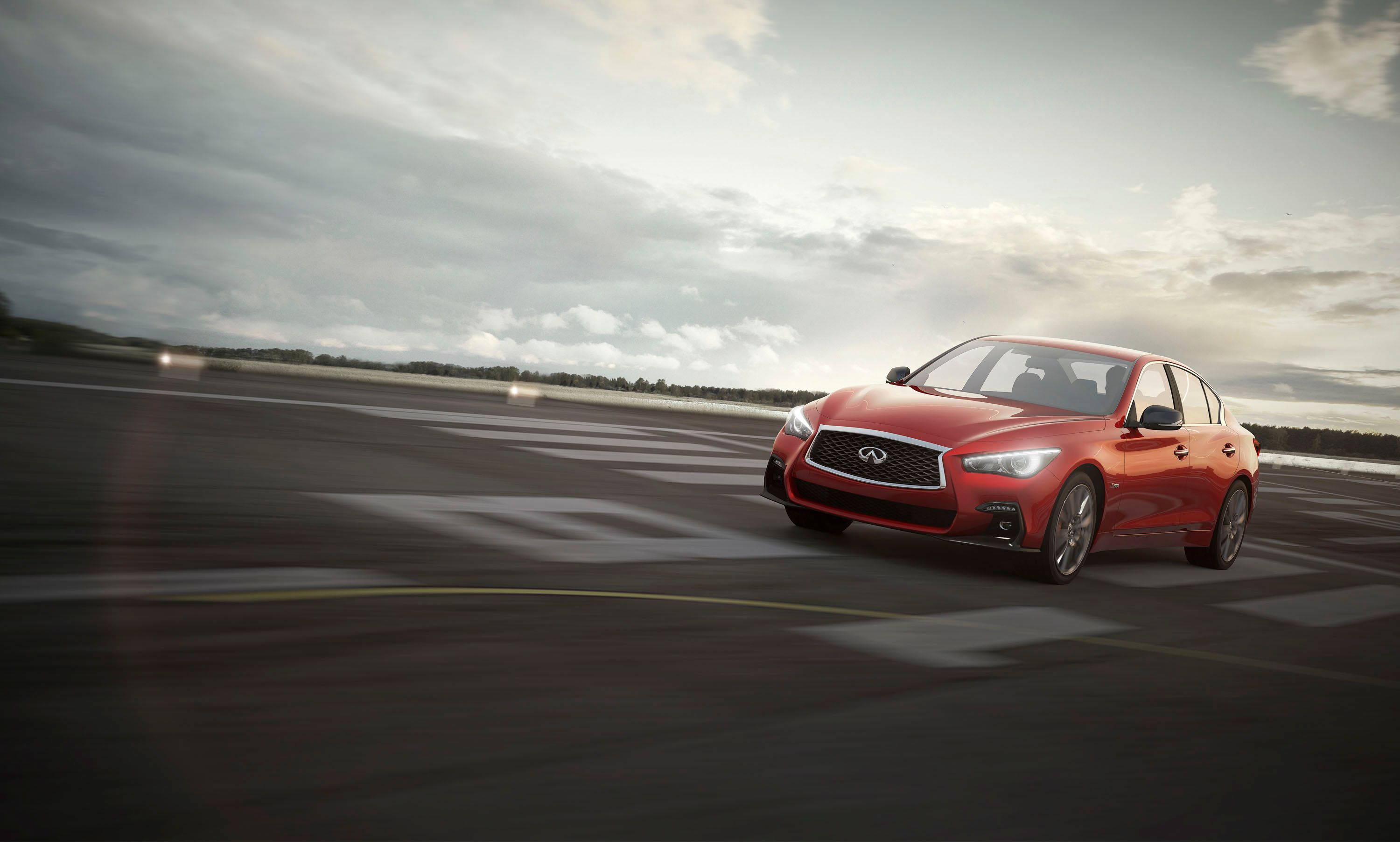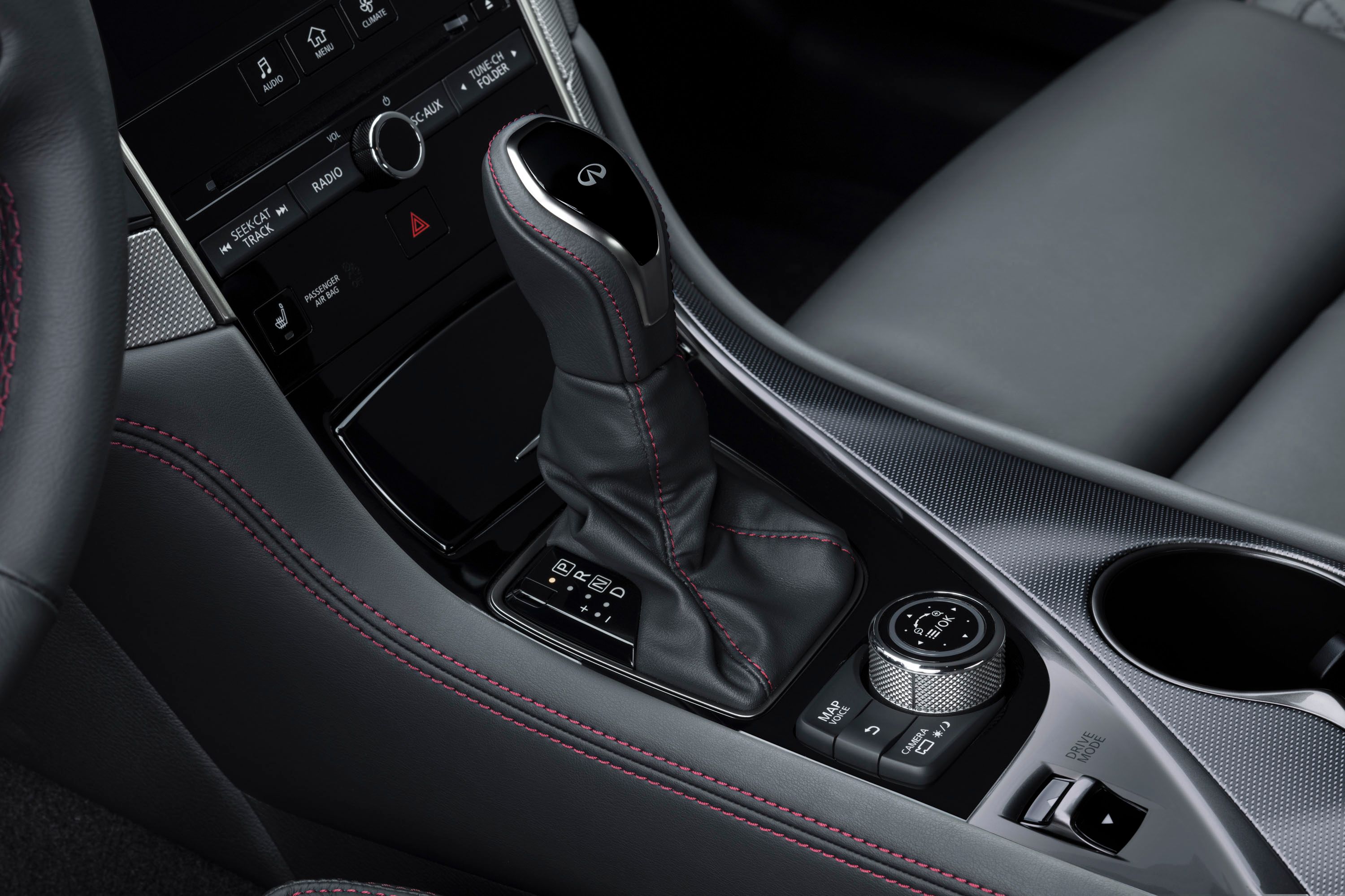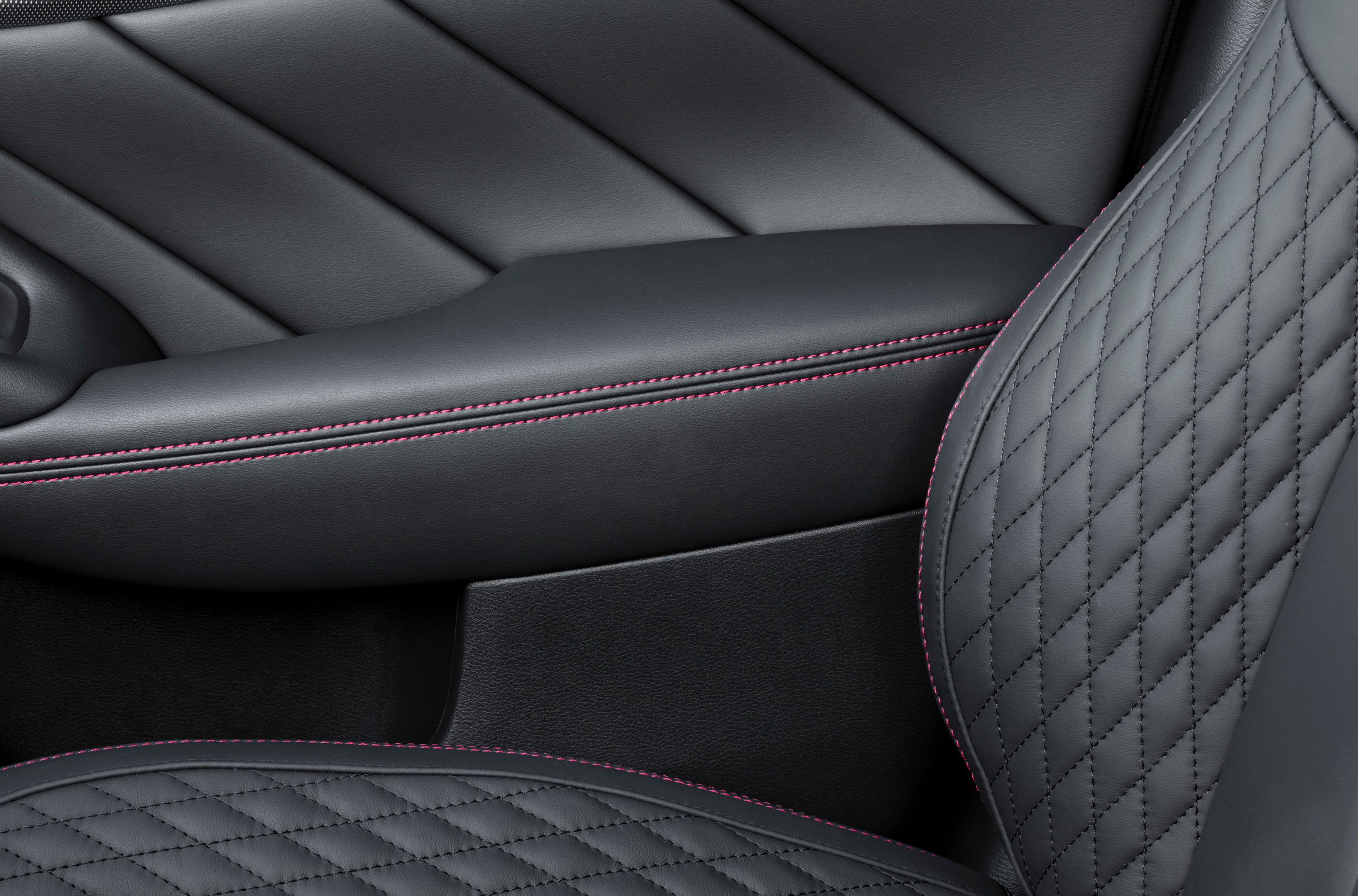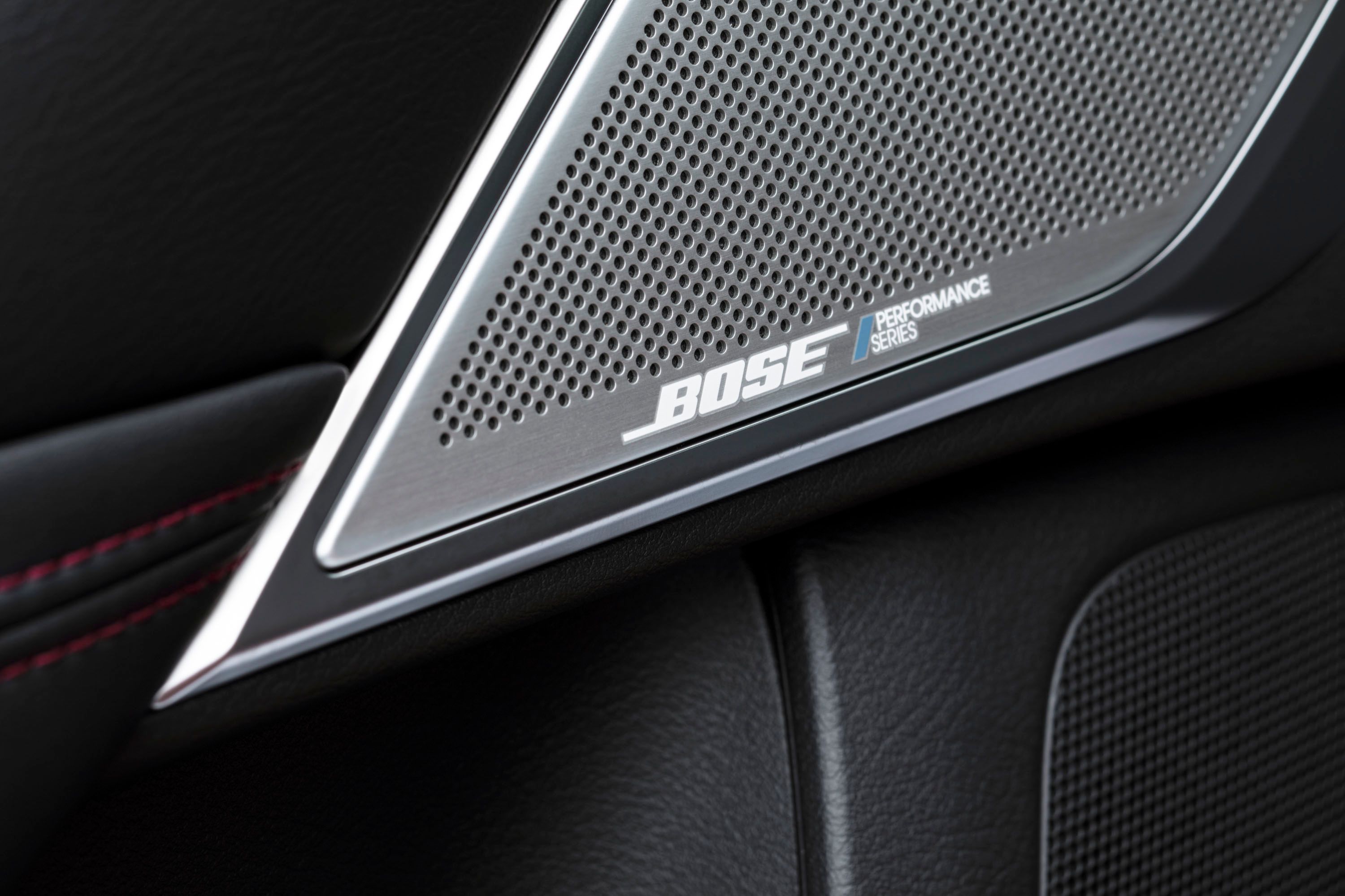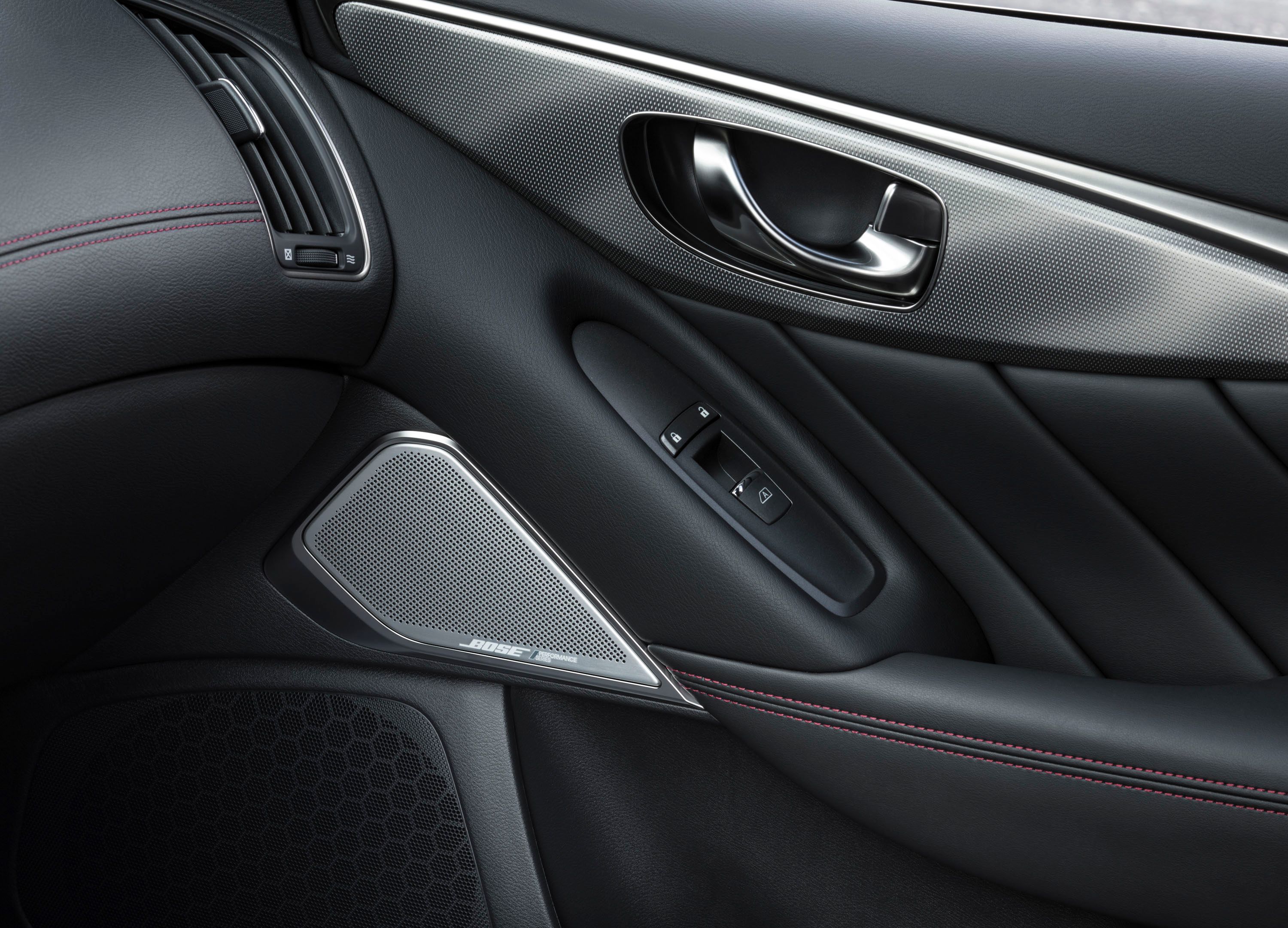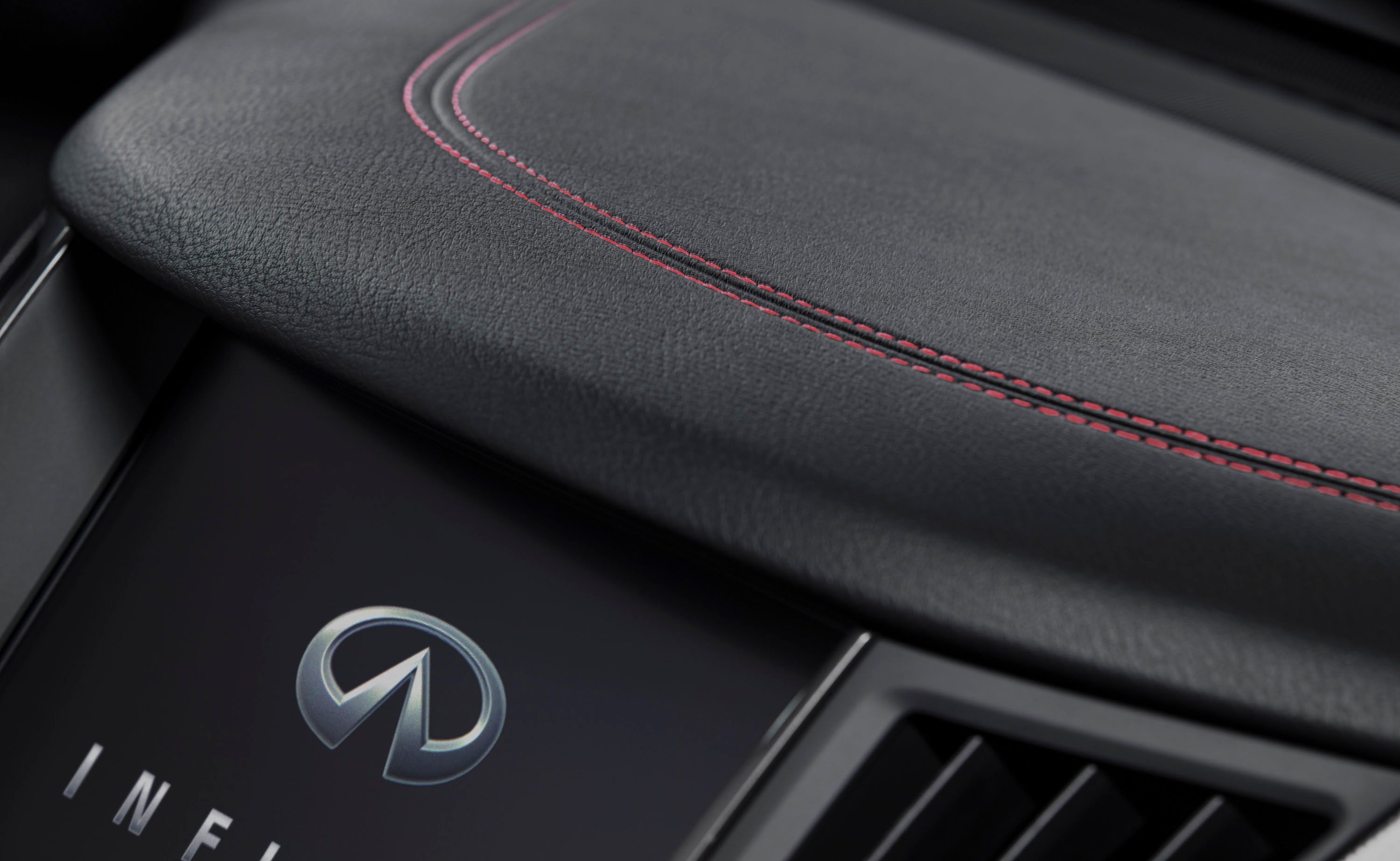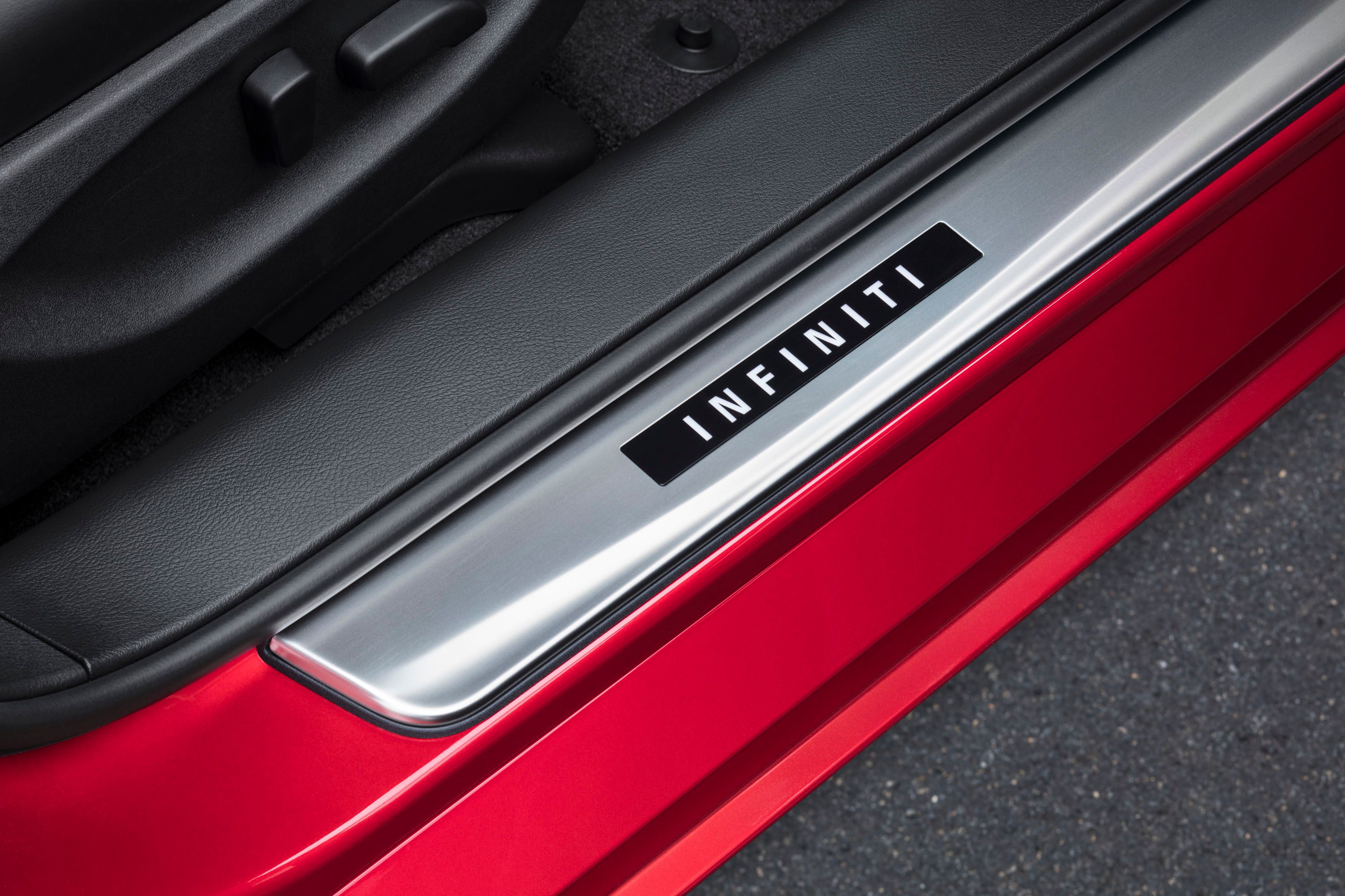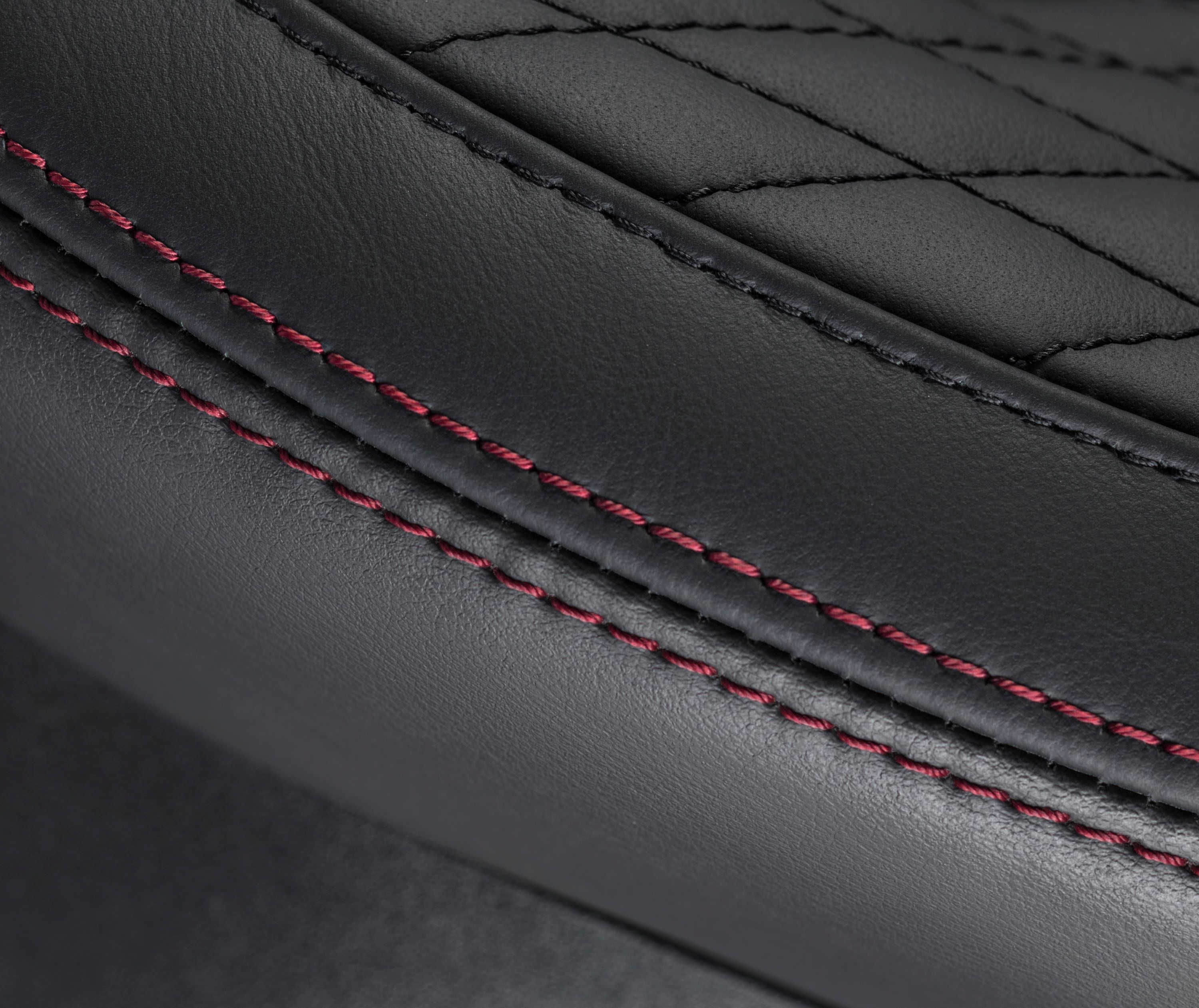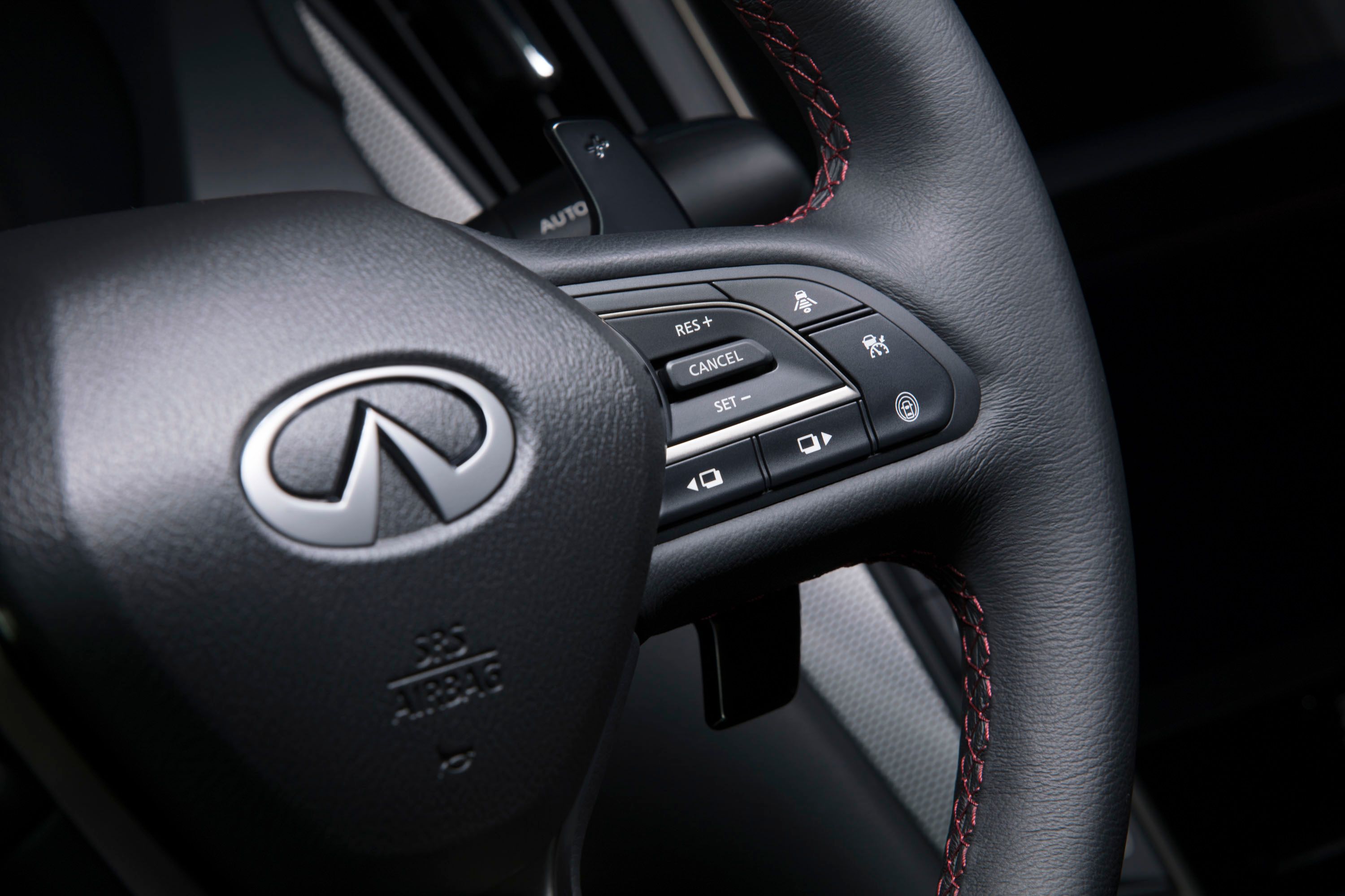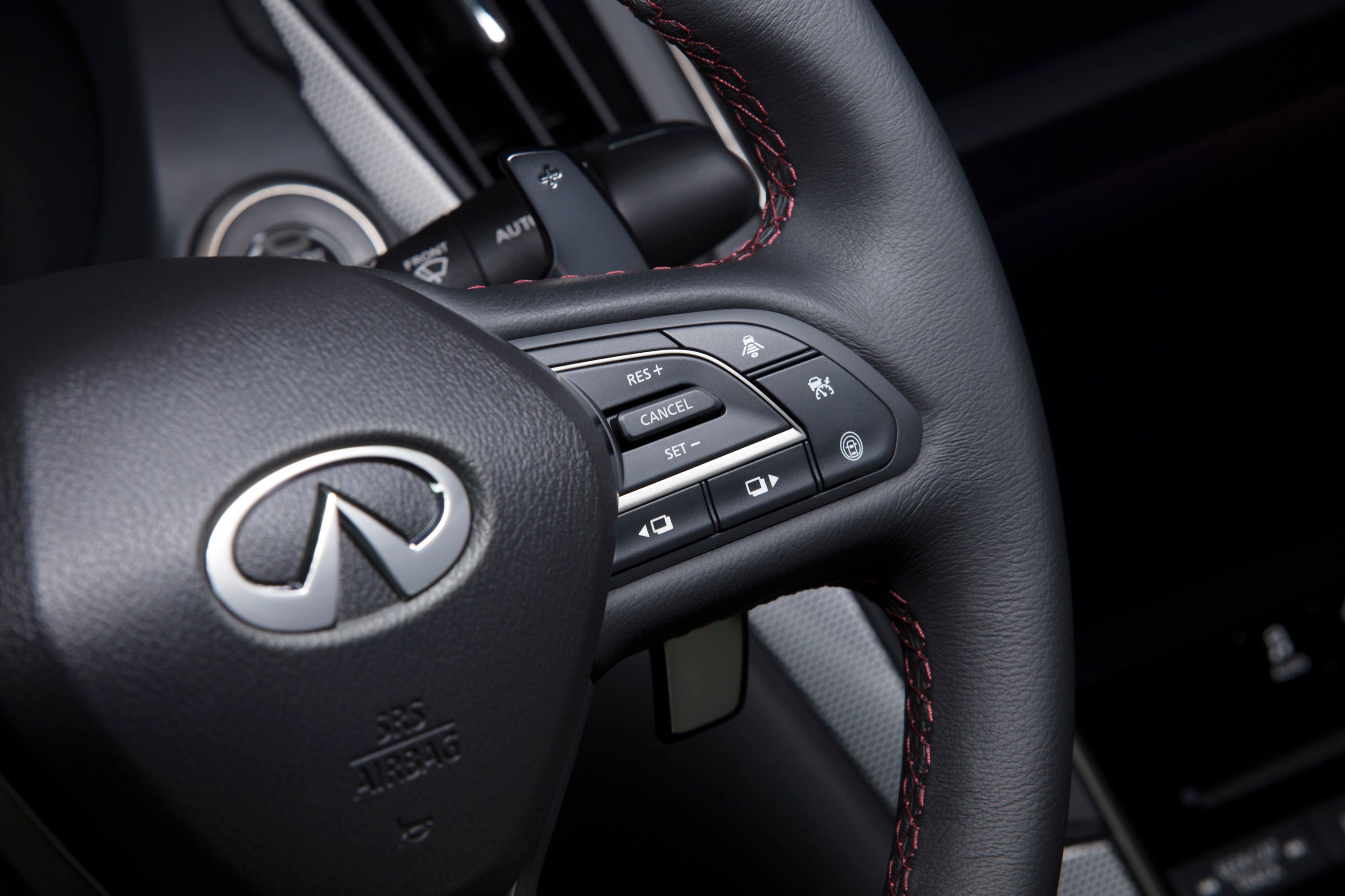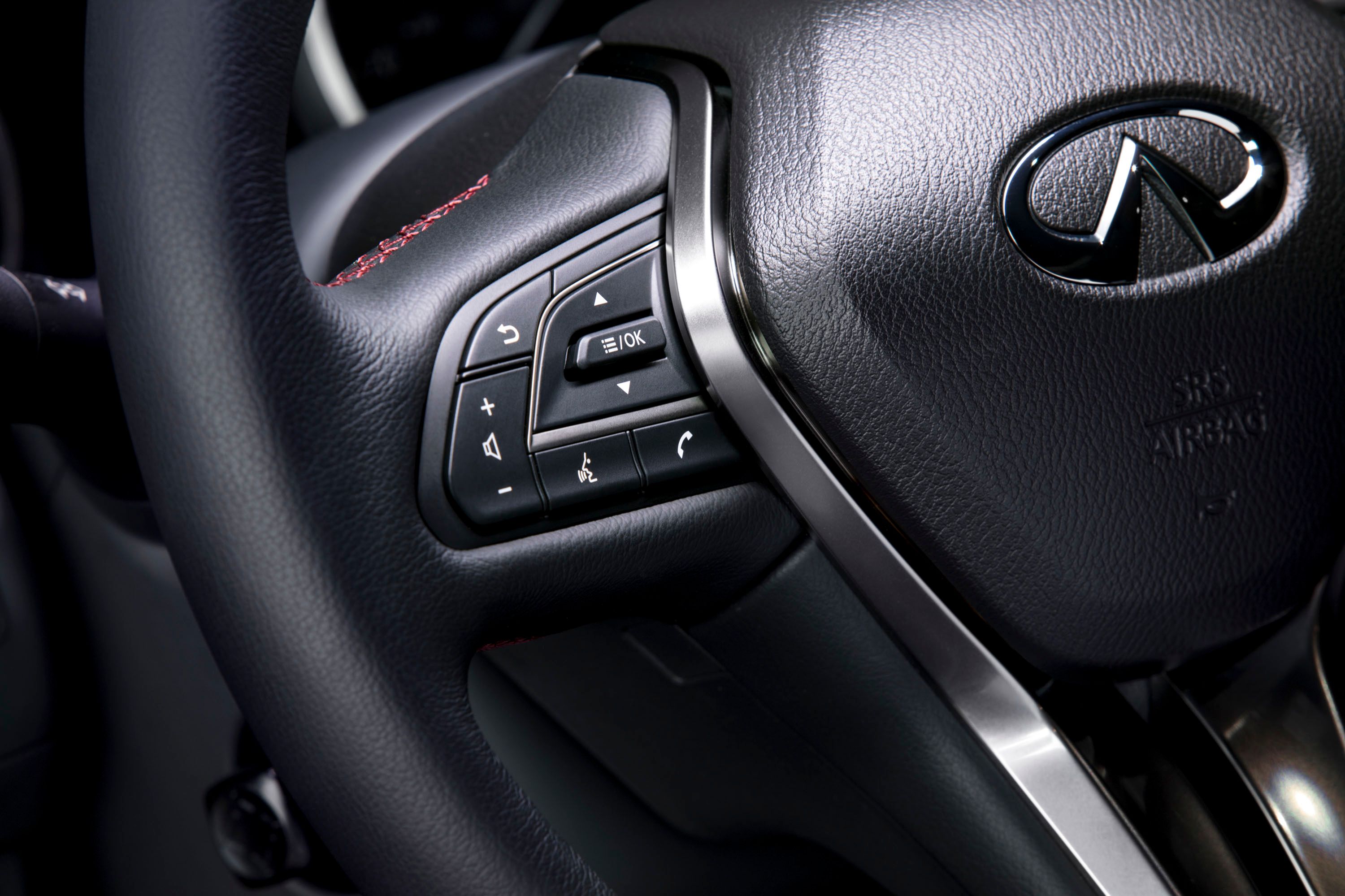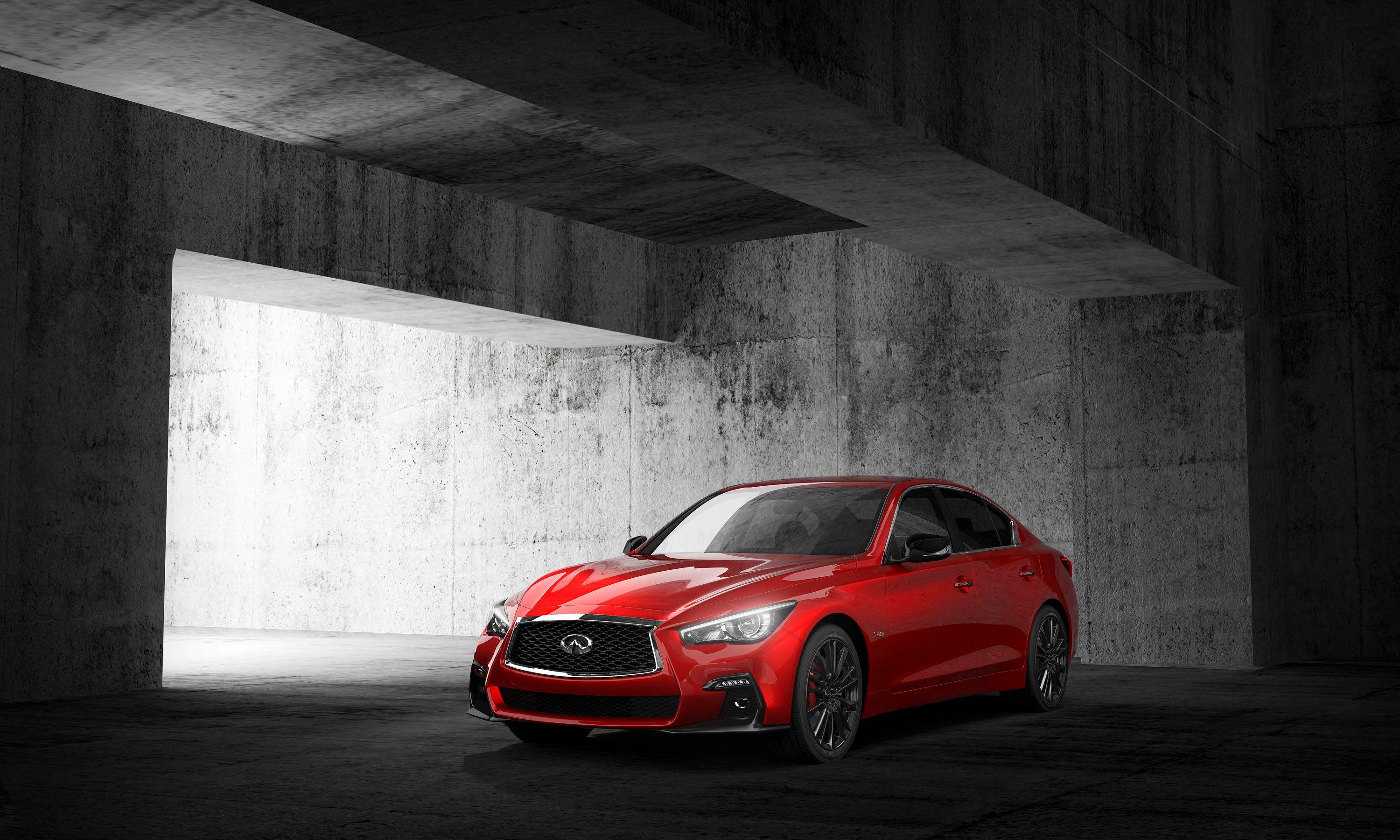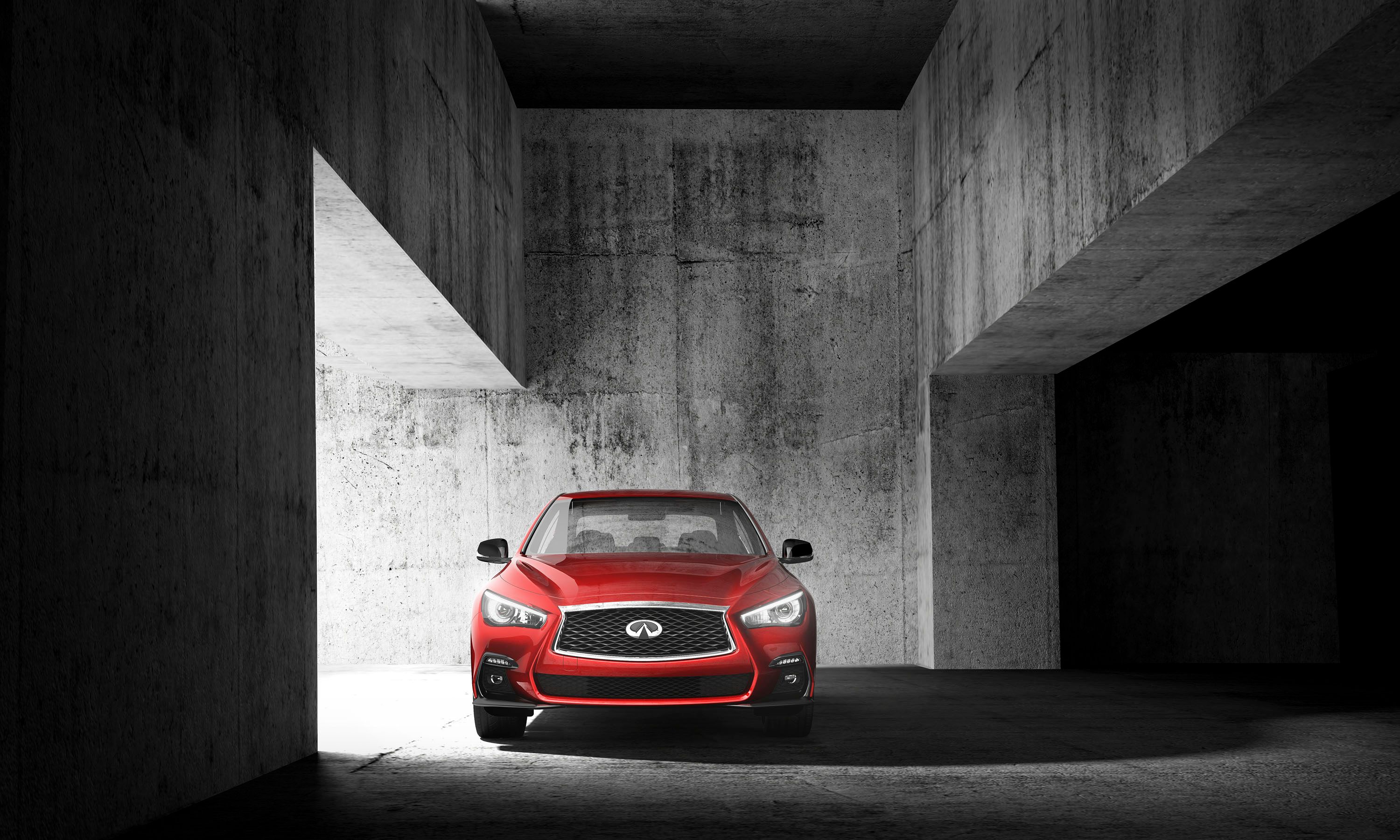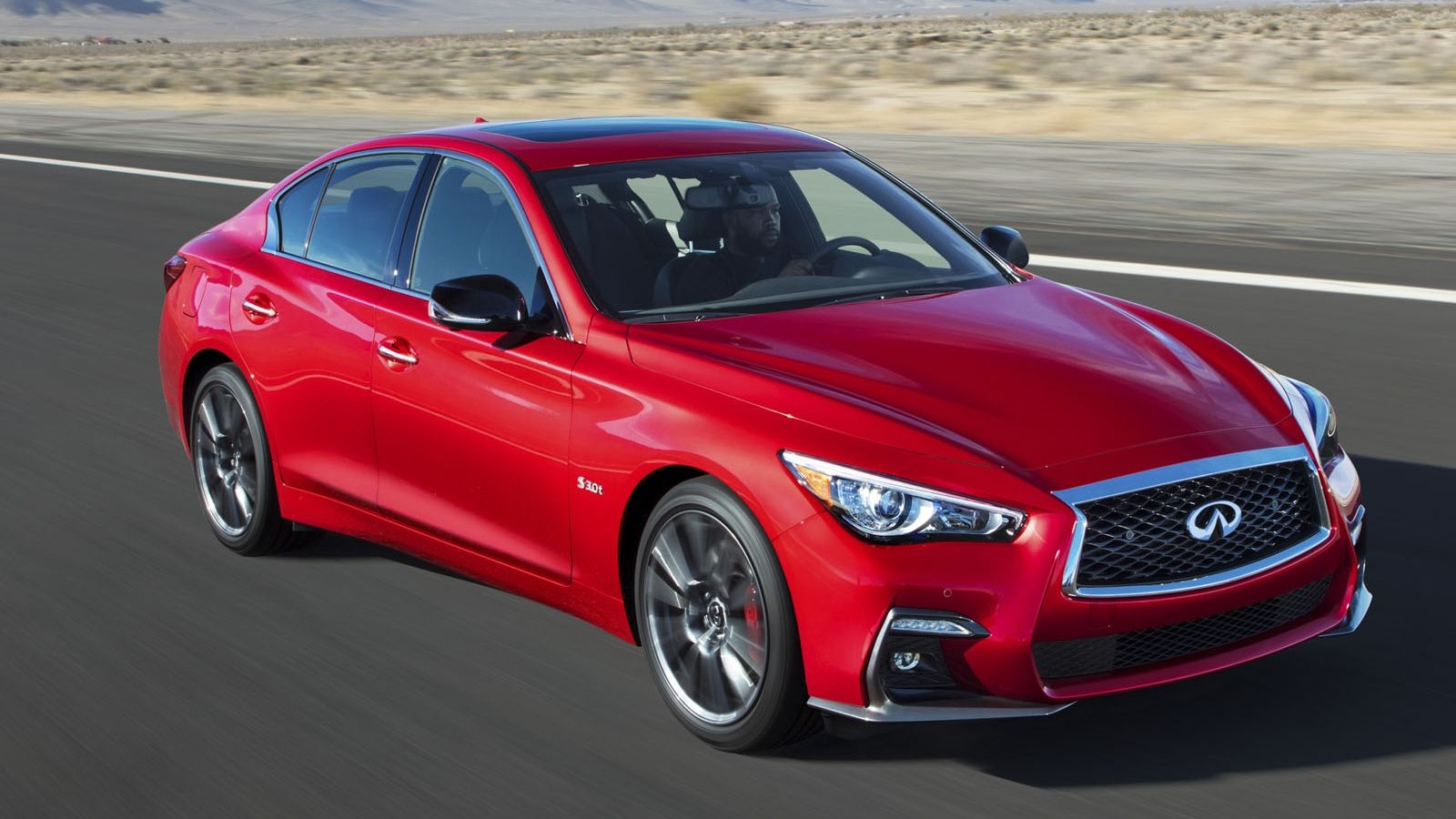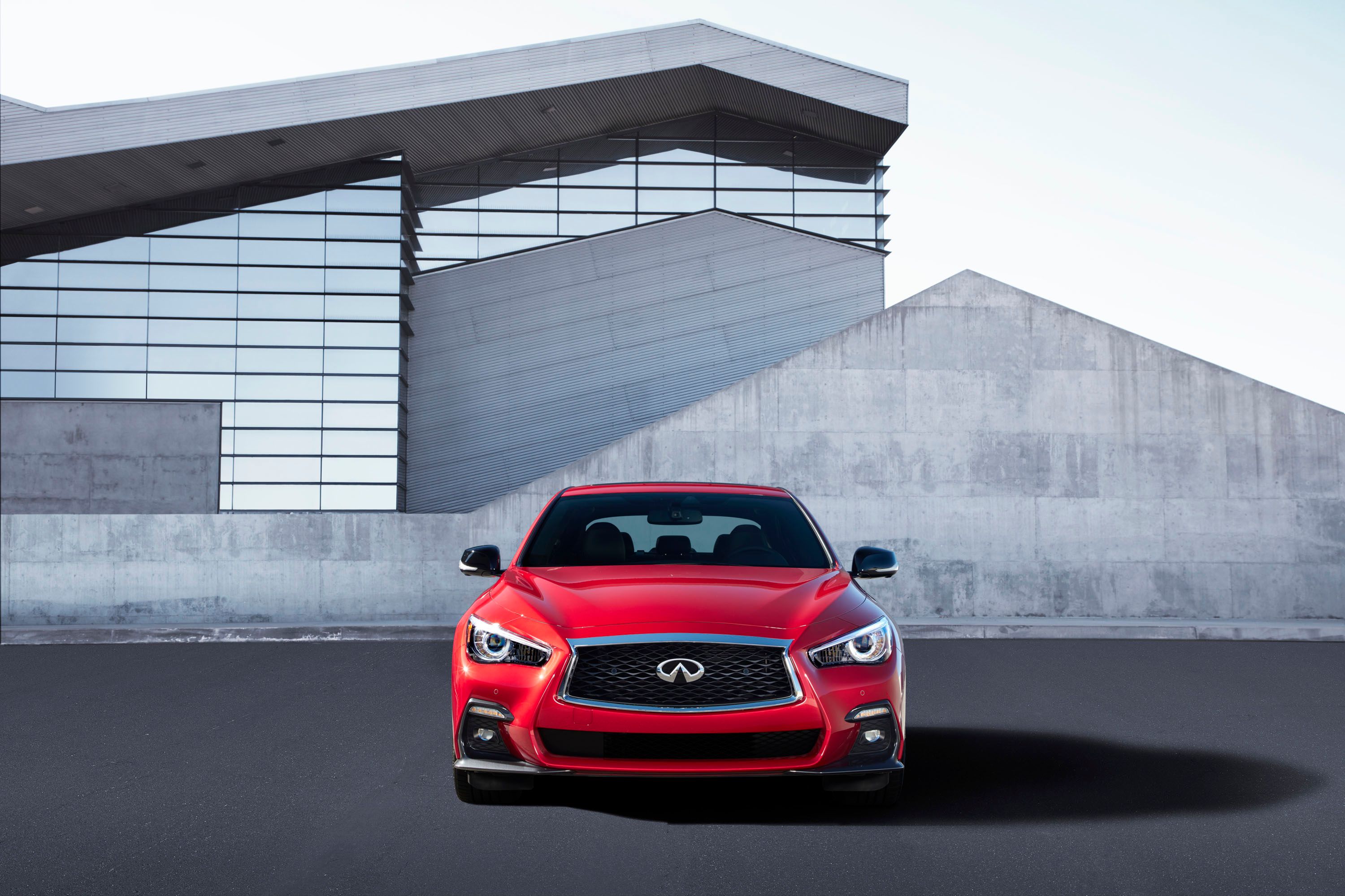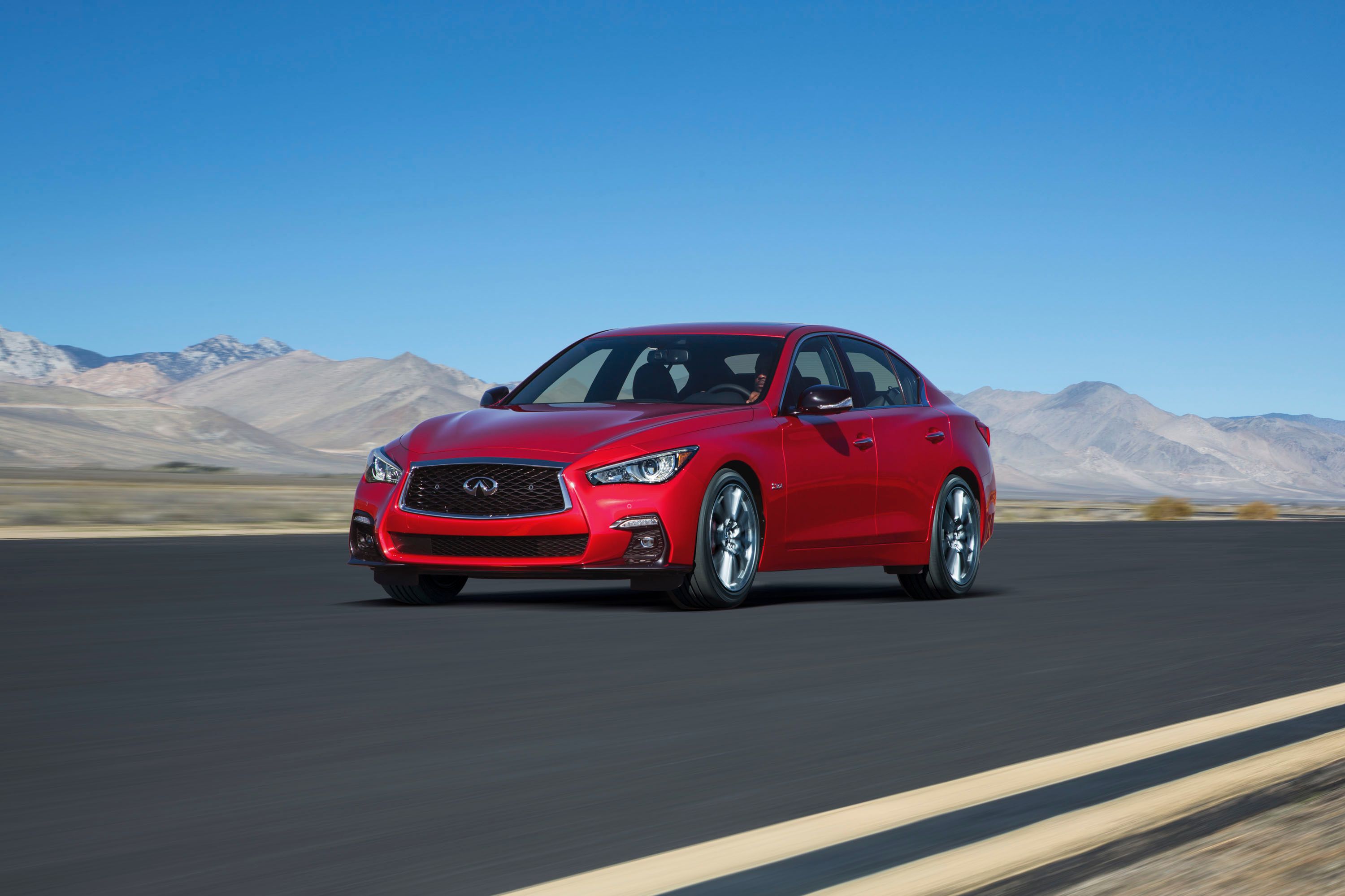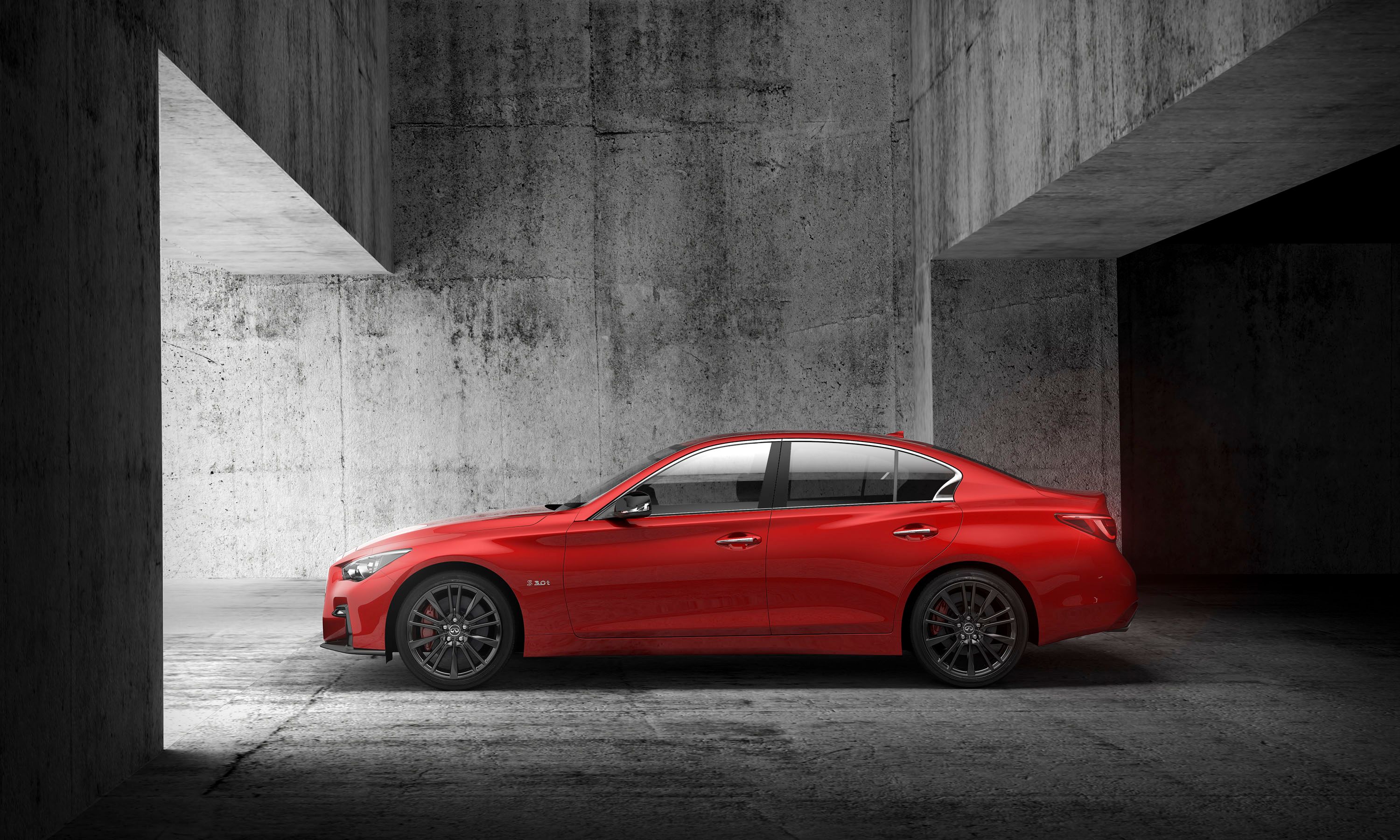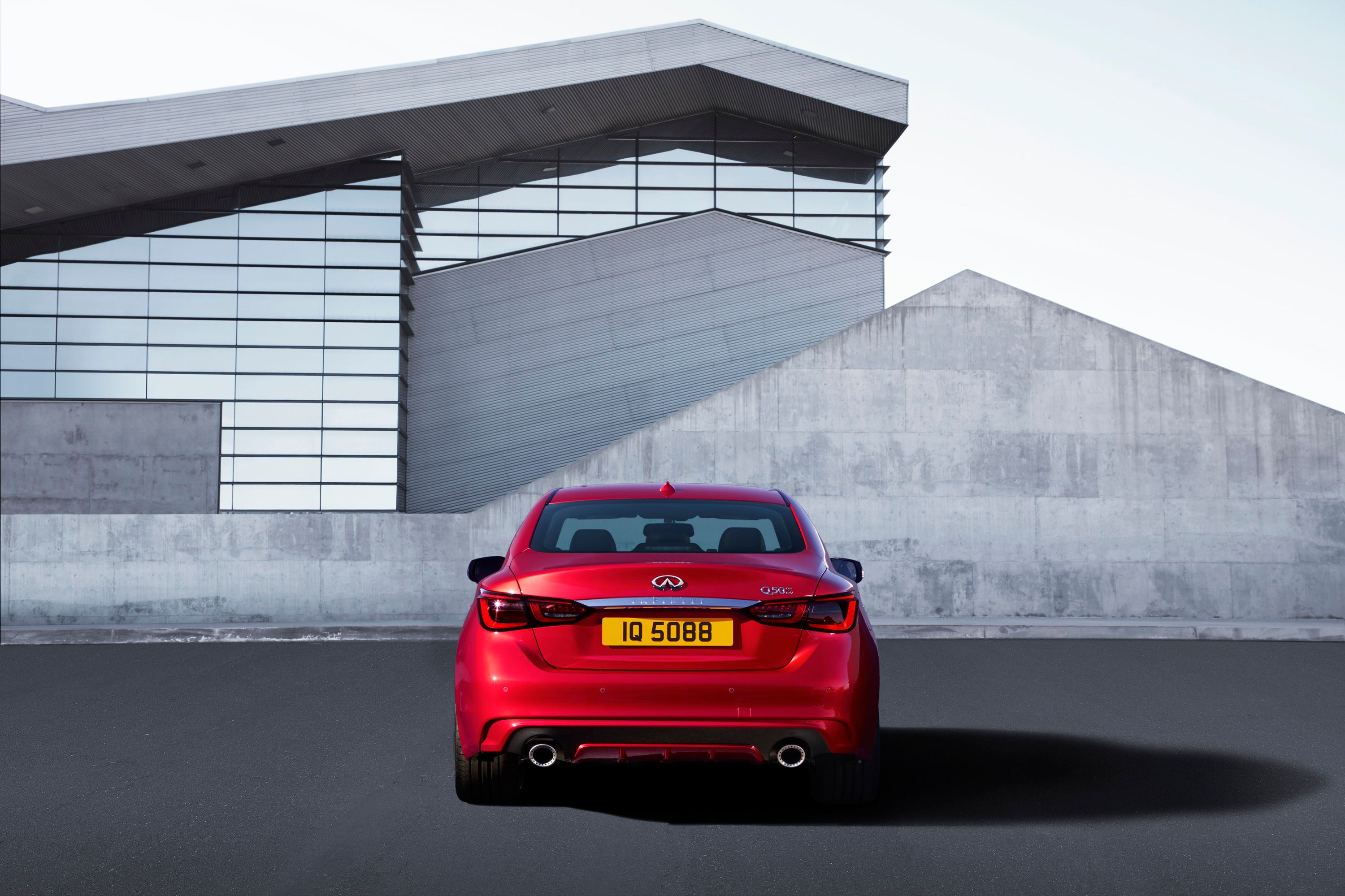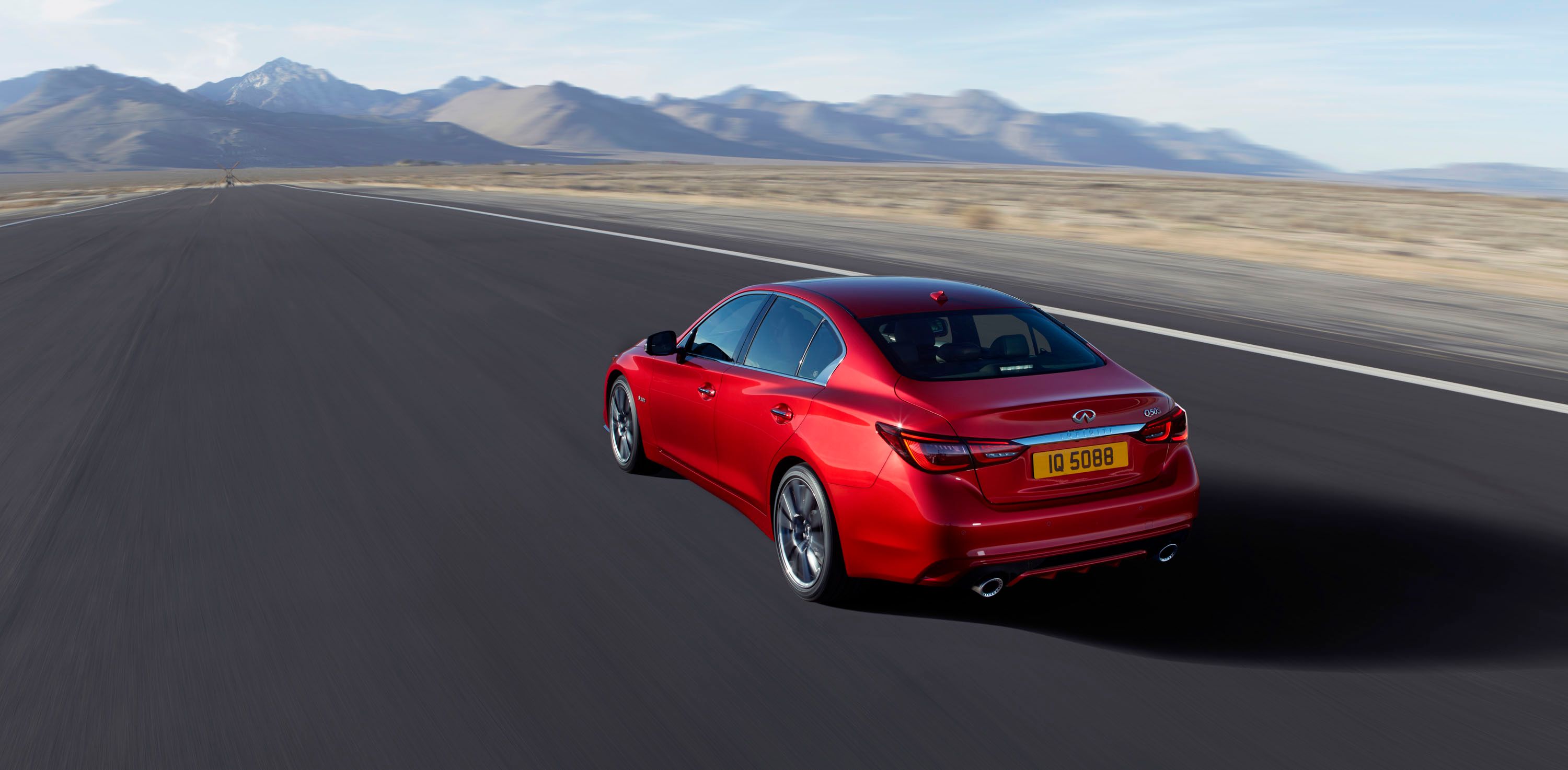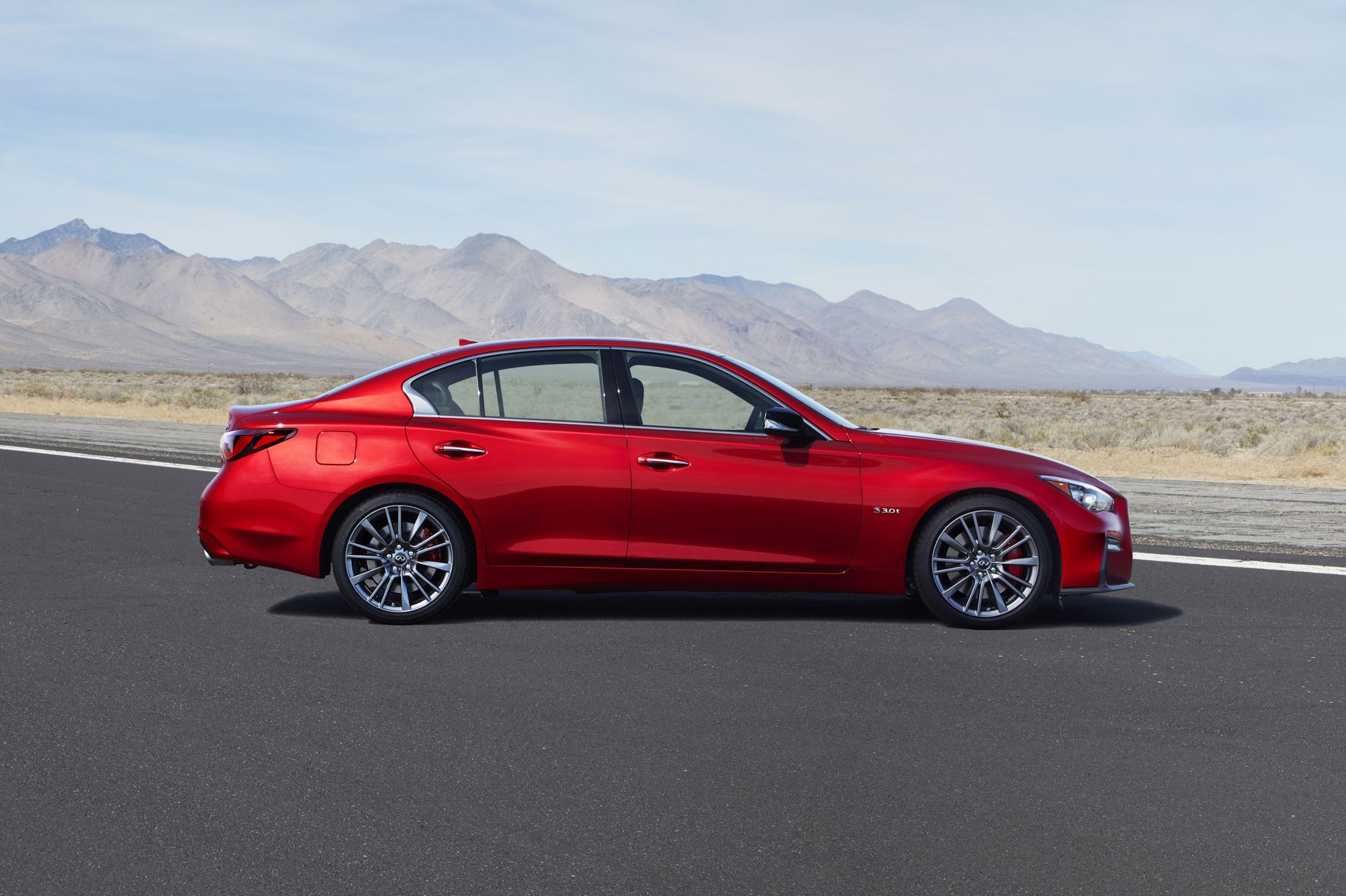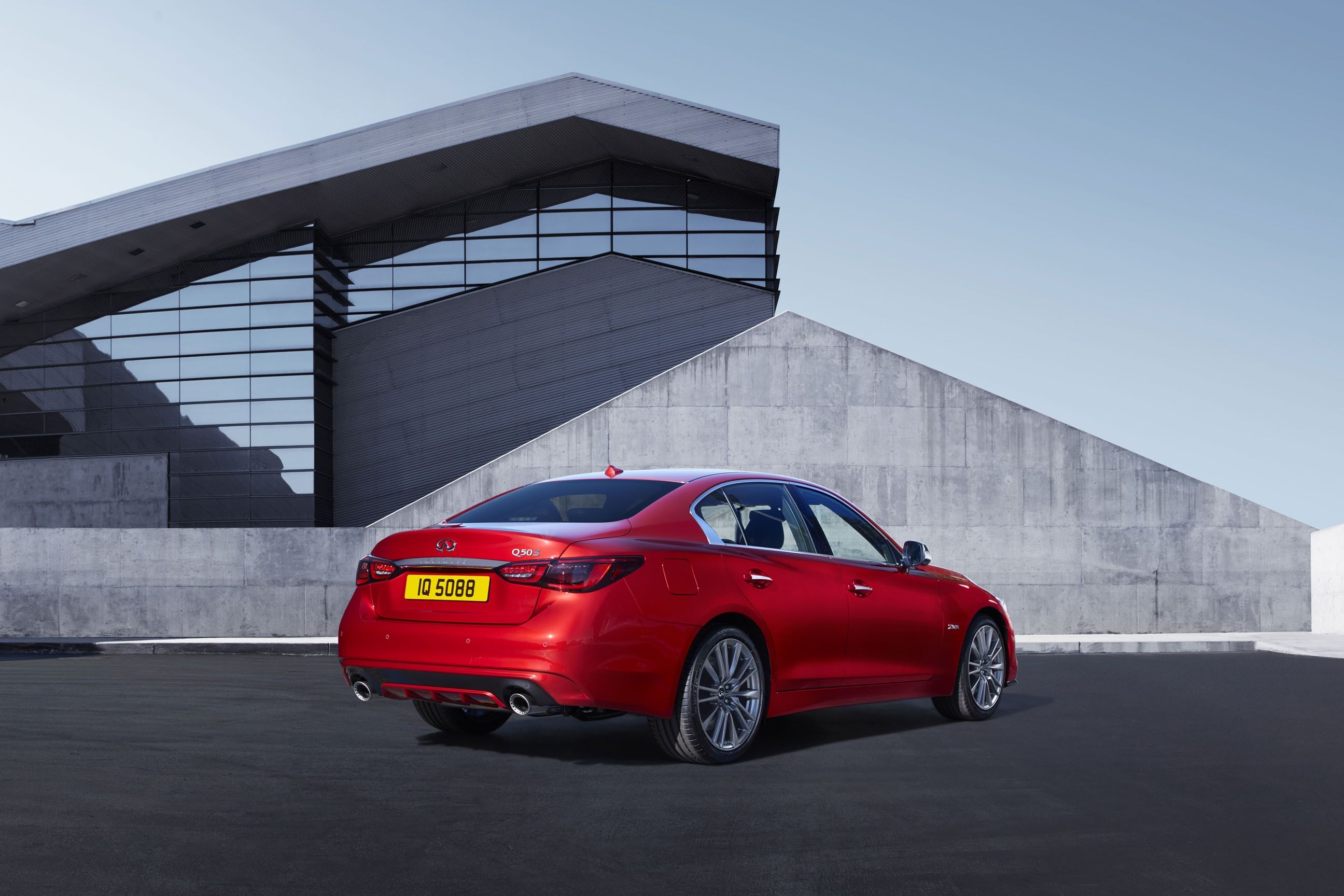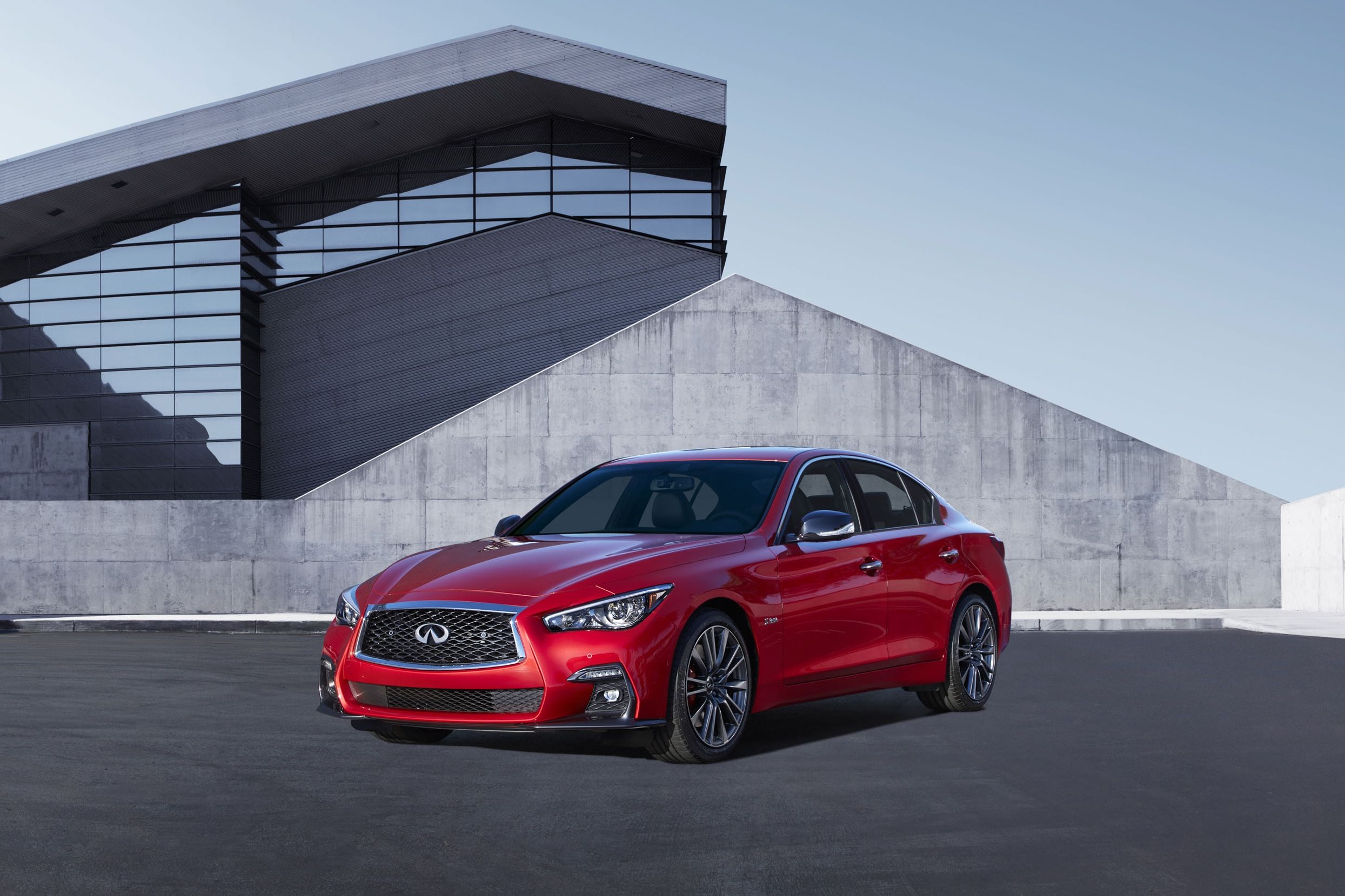The Infiniti Q50 hit the market for the 2014 model year, and just two years later, Infiniti refreshed it for the 2016 model year. Well, instead of ushering in a new generation, Infiniti has decided to do another mild update for the 2018 model year, which includes a slightly different look outside, a revamped interior, and some new driver assistance features not previously available. Engine options include a 2.0-liter gasoline mill, a 2.2-liter turbodiesel, the 3.5-liter V-6, and a hybrid setup that combines a 3.5-liter V-6 and a 50-kW electric motor – giving the car a power output range of anywhere between 168 horsepower and 400 horsepower. The Q50 also makes use of Direct Adaptive Steering, a feature that Infiniti says is a “key building block to achieving fully-autonomous driving.” But, what is more important, is that each trim level will have its own stand-alone features and styling that will help it stand out in the lineup.
Roland Krueger, the President of Infiniti, said, “Infiniti seeks to empower our customers on their journey through their experience with us – whether it is our products, our technologies, our services, or simply a passion for driving. There is no better vehicle that incorporates all the elements of the Infiniti brand than the Q50 saloon.”
Now that the 2018 Infiniti Q5 has made its debut at the 2017 Geneva Auto Show, we have lots to talk about, so let’s dive on in and take a closer look at it and how it compares to the competition.
Update 7/21/2017: Infiniti has announced pricing for the 2018 Infiniti Q50. It starts out at $34,200, a $150 increase over last year’s model, and increases to as much as $53,000 for the Red Sport 400 – an increase of $2,300 over last year’s model. Check out the prices section below for all of the details.
2018 Infiniti Q50
- Make: Array
- Model: 2018 Infiniti Q50
- [do not use] Vehicle Model: Array
Official video
Exterior
So, since Infiniti decided to go with another facelift instead of a full revamp, there aren’t that many changes to the exterior, but there are a few to speak of. First, the hood and headlights carry over from the current model – that’s right; Infiniti didn’t even update the headlight units. But, the grille is actually new, even if you can’t spot the difference at first. Notice how the grille surround comes to a sharp, inward point an inch or so below the top of the grille? That’s new, as the current model’s grille surround features a more rounded point located an inch or two lower.
Down below that air dam has grown just a tad bit taller and wider. Instead of the bottom of the air dam being integrated into the front lip itself, this time, it’s part of the fascia and wraps around to the inside of the corner recesses, eventually turning into a stout bodyline that travels much higher up the fascia and divides the grille surround from the headlights.
Below the air dam sits an insert that doubles as a front lip and curves upward into the insert that defines the outer and top edges of that corner recess. As such, those recesses now sit deeper in the fascia and have a much cleaner look than before. They get the same mesh as the air dam but feature a small circular fog light that’s now mounted right in the middle. The horizontal running light carries over, but is now angled slightly and sits a little higher.
There are no noticeable changes to the side profile that I can notice aside from the window trim being finished in a gloss black that matches the finish of the side view mirrors. The same body lines, side skirts, and door handles all carryover. Around back, it’s the same general story, but the taillights have been updated to include a more modern look, while the odd chrome trim below the license plate recess has been left in 2016. The rear fascia no longer has those small reflectors in the corners, and the rear insert that surrounds the exhaust pipes is now primarily black with a small insert in the middle that gives the appearance of a diffuser. This is likely limited to the Red Sport 400 model, so expect the same rear fascia layout on lesser models.
The Competition
When you consider the fact that the Q50 goes toe to toe with models like the BMW 3 Series (above) and the Mercedes C-Class (below), it’s not that surprising that Infiniti has been trying to keep the Q50 as fresh as possible. The Germans are a tough crowd to beat, and the design of the 3 Series proves exactly that.
Nowhere near as muscular as the Q50, the 3 Series basically draws that perfect line in the sand and is the definition of stylistic functionality. Up front, the nose is quite aggressive with the long, geometrically sound headlights and the kidney bean grilles. Down below, the fascia forms a bit of a smile with the air dam while providing enough character to keep things interesting. The hood and fenders are primarily smooth with just mild lines, but that’s a blended effect that makes the 3 Series so popular.
The side profile matches the smoothness and elegance of the hood with several mild lines and an overall smooth profile. It’s not something that makes you say “wow,” but you’re not going to look away is disgust either. Around back, the 3 Series takes a somewhat old-school approach. The taillights are split between the rear quarters and the decklid, while the rear fascia is relatively smooth save for a mild line that runs the full width and a boomerang-shaped line in each corner to help define the lower fascia. The exhaust outlets are positioned toward the middle but aren’t exactly considered to be centered, either.
The Mercedes C-Class is currently in its fourth generation and is due for a mild facelift come 2018, but until then, the 2015 design is what’s on the table. Design-wise, the C-Class falls right in the middle of the Q50 and the BMW 3 Series.
Up front, it has a pronounced nose with that sexy Mercedes grille while the front fascia is all one piece and is shaped to create corner vents and the air dam that gives the car a smiling impression when looked at from the right angle. The hood is long but smooth, while the side profile is dominated by two sharp and angled body lines that run opposite of each other, with the two rear-most points being closer than the fronts.
The interesting thing about the C-Class, however, is the waistline that is curved upward ever so slightly in the middle – a feature that we normally don’t see on smaller luxury sedans like this. Around back, things are a little more intense than on the 3 Series. The rear decklid bubbles up at the tip to create a small lip of sorts, while the taillights sit down inside the rear quarters and have a generally rounded shape to them. Down below, the full-width body line wraps down to create a small void in each corner that serves as a tiny vent. The exhaust outlets are rectangular and are integrated into the rear fascia with a small, diffuser-like insert in between them. It’s a smooth design all of the way around.
All told, all three models look pretty damn good, but as far as looks go, it really depends on what you’re in to. If you want something more aggressive, you’ll probably want to go with the updated Q50, while those that are more interested in smooth looks and functionality will find themselves more at home with the 3 Series in their driveway. The C-Class falls right in the middle and gives you just the right blend of both, something that makes it a winner in my book.
Exterior Dimensions
|
BMW 3 Series |
Mercedes C-Class |
Infiniti Q50 |
|
|
Wheelbase (Inches) |
110.6 |
111.8 |
112.2 |
|
Length (Inches) |
182.5 |
184.5 |
188.3 |
|
Width (Inches) |
71.3 |
71.3 |
71.8 |
|
Height (Inches) |
56.3 |
56.8 |
56.8 |
|
Track Front/Rear (Inches) |
60.3/61.9 |
61.5/60.9 |
60.8/61.6 |
Interior
Infiniti is boasting the updated Q50 as a vehicle that has an “enhanced level of artistry and quality to the high-tech cabin.” What that really means is that Infiniti didn’t change too much inside. In fact, you’ll notice the same door trim panels and stitching layout, infotainment monitors, instrument cluster, and even the same center console. But, Infiniti did bring some new materials and a little bit of new design. The model you see here has quilted stitching on the side bolsters of the front seats. Infiniti claims it has used better materials for the 2018 model, which includes “leather-like” material on the dash that is double stitched. The model you see here has aluminum-look trim inserts, but the wooden veneers on models that are so equipped have been treated to have a more authentic appearance and feel.
The center console remains largely the same, but there is a new, performance-oriented shift knob with a leather boot that has been double stitched and is surrounded by new chrome trim. The same aluminum pedals, carry over, but Infiniti has added a new steering wheel that is similar to that found in the Q60 sports coupe. It has a smaller central hub/airbag, and a longer, thinner lower spoke that matches the aluminum trim on the doors and center console. The side spokes have been slimmed down as well and features more modern buttons for easier access and control – a nice touch. Red Sport 400 models, like the one you see above, also features red stitching throughout to help emphasize its special place in the lineup.
The infotainment system is known as InTouch and features that eight-inch screen up top and seven-inch screen down below. The bottom screen is a touch display unit, while the upper unit is a basic LCD/VGA display. The upper screen displays most accessed apps, like the navigation system, for instance. The lower screen provides easy access to the rest of the system. The system allows you to customize your interior preferences and can store profiles for various drivers. No more adjusting the seat every time the wife drives. It also includes an easy entry and exit system that moves the seat and steering wheel automatically (based on the key used to access the vehicle) to make it easier to get in and out of the vehicle.
The sound system includes a 16-speaker Bose system that features a new architecture and high-performance components. Supposedly, it delivers an enhanced acoustic experience and surround sound from any audio source, be it USB, Bluetooth, CD, or radio.
The Competition
The interior of the BMW 3 Series (above) is more refined in some aspects and more complex in others. For instance, the 3 Series only has one floating display that was updated this year to include BMW’s latest infotainment software. The design of the dash is multi-layered while the instrument cluster lacks a central TFT screen. The seats in the 3 Series are fairly supportive, but not quite as much as those in the Q50. The center console sits about as high, but the shifter knob in the 3 Series is shorter and a bit sportier. There are fewer trim inserts in the 3 Series, but you can find a few, specifically on the dash and on the center console around the infotainment control knob. Like the Q50, the center console in the 3 Series features two vents for rear passengers to keep things comfy, but the Q50 wins in the rear seat department as there is more support for passengers on in the outside seats.
The interior of the C-class (above) could be considered a little more upscale than both the Q50 and the 3 Series. Like the Q50, the seats are supportive, and there are some wood veneers available on some models. The C-Class only has one screen, but it looks much better than that of the 3 Series thanks to a true, floating design. The instrument cluster does have a central display like the Q50 but just behind that sits a flat-bottom steering wheel – a sporty proposition not offered as standard on either the Q50 or the 3 Series.
The infotainment display in the C-Class is controlled by a mouse-like controller as standard, but that can be deleted if the option for a touch-pad controller is selected at the time of ordering. The rear of the C-Class offers ample support for passengers located in the rear seats, which also have a similar stitching pattern to the front seats. All told, the C-Class is a strong proposition, and the front of the cabin resembles that of higher-end models, which is a huge plus.
The Q50, 3 Series, and C-Class are all comfortable and relaxing to be in, so what it boils down to is what you’re looking for in your next ride. Do you want something with loads of technology? If so, the Q50 may be for you, just because it has those dual screens. If you want something more detailed and deliberate with a lot of specific styling, you may want to take a serious look at the Merc. Meanwhile, the 3 Series kind of falls in the middle – it has just the right mix of character without going overboard with excessive lines or trim elements.
The Competition
|
BMW 3 Series |
Mercedes C-Class |
Infiniti Q50 |
|||
|
BMW 3 Series |
Mercedes C-Class |
Infiniti Q50 |
40.3/37.7 |
37.1/36.9 |
40.2/37.5 |
|
Headroom front/rear (Inches) |
42.0/35.1 |
41.7/33.4 |
44.5/35.1 |
||
|
Legroom front/rear (Inches) |
55.1/55.1 |
54.7/55.0 |
56.7/56.1 |
||
|
Shoulder room front/rear (Inches) |
13 |
12.6 |
13.2 |
Drivetrain
As expected, Infiniti didn’t do anything in the drivetrain department as far as power delivery or technology goes. The 2.0-liter four-banger carries over with 208 horsepower at 5,500 rpm and 258 pound-feet of torque available at a very early 1,250 rpm. There’s a 2.2-liter diesel that offers up 168 horsepower at 3,200 rpm and 295 pound-feet at 1,600 rpm. Then you’ve got the 3.0-liter, twin-turbo V-6 that delivers 300 horsepower and 295 pound-feet in the 3.0t models or is tuned to deliver 400 horsepower and 350 pound-feet in the Red Sport 400 models. Finally, the same powertrain carries over for the Q50 hybrid, which offers a total system output of 360 horsepower. Torque available from the engine is rated at 258 pound-feet while the electric motor supplies an additional 214 pound-feet. Shifting duties for all powertrain setups are handled by a seven-speed automatic that is adaptive and offers a manual mode with downshift rev matching.
So, all the same powertrain options carry over unchanged, but there are some changes under the metal. First, the Dynamic Digital Suspension system is now aided by electronic and adaptive dampers that work in conjunction with the Direct Adaptive Steering System and drive model selection system to provide an optimal ride for about any situation. The front and rear stabilizer bars have also been improved and are said to offer a “flatter ride and greater agility.” All powertrain options can be selected with rear-wheel or all-wheel drive if you select the right trim level.
|
Infiniti Q50 2.0t |
Infiniti Q50 3.0t |
Infiniti Q50 Red Sport 400 |
Infiniti Q50 Hybrid |
|
|
Engine |
2.0-liter turbocharged inline-4 cylinder |
3.0-liter V-6 |
3.0-liter V-6 |
3.5-liter V-6 |
|
Horsepower |
208 HP @ 5,500 RPM |
300 HP @ 6,400 RPM |
400 HP @ 6,400 RPM |
302 HP @ 6,800 RPM |
|
Torque |
258 LB-FT @ 1,500 – 3,500 RPM |
295 LB-FT @ 1,600 – 5,200 RPM |
350 LB-FT @ 1,600 – 5,200 RPM |
258 LB-FT @ 5,000 RPM |
|
Transmission |
7-speed automatic w/Sport mode |
7-speed automatic w/Sport mode |
7-speed automatic w/Sport mode |
7-speed automatic w/Sport mode |
|
Electric motor |
- |
- |
- |
67 HP @ 1,650 – 2,000 RPM |
|
Weight |
3,666 Lbs |
3,662 Lbs |
3,853 Lbs |
3,922 Lbs |
|
Fuel economy city/highway/combined |
23/31/26 |
20/30/24 |
20/27/22 |
28/34/30 |
BMW 330e iPerformance engine.0
Mercedes-AMG C63 engine.
The BMW 3 Series offers up a number of different trims that include the 320i, 328d, 340i, and the hybridized 330e iPerformance. Starting at the bottom rung, the 320i gets a 2.0-liter that’s good for just 180 horsepower and 200 pound-feet of torque. The 328d also gets a 2.0-liter that’s good for the same 180 horsepower but offers up 258 pound-feet of torque between 1,450 and 4,800 rpm. Moving further up the line to the 340i will get you a 3.0-liter inline-six that delivers a decent 320 horsepower and 330 pound-feet of torque. Finally, the 330e iPerformance offers up a 2.0-liter V-6 that’s mated with an 87-horsepower electric motor to create a total power output of 248 horsepower and 310 pound-feet of torque. So, if power output is important to you, you’re almost always going to win with the Q50, unless you’re comparing the 3.0t and 340i, in which case Bimmer wins it, but not my much.
|
Mercedes-Benz C300 |
Mercedes-Benz C350e |
Mercedes-AMG C43 |
|||
|
Engine |
2.0-liter turbocharged 4-cylinder |
2.0-liter TwinPower Turbo Diesel inline 4-cylinder |
2.0-liter TwinPower Turbo inline 4-cylinder |
3.0-liter TwinPower Turbo inline 6-cylinder |
2.0-liter Twinpower Turbo inline 4-cylinder |
|
Horsepower |
180 HP @ 5,000 RPM |
180 HP @ 4,000 RPM |
248 HP @ 5,200 RPM |
320 HP @ 5,500 RPM |
180 HP @ 5,000–6,500 RPM |
|
Torque |
200 LB-FT @ 1,250 RPM |
280 LB-FT @ 1,750-2,750 RPM |
258 LB-FT @ 1,450-4,800 RPM |
330 LB-FT @ 1,380–5,000 RPM |
215 LB-FT @ 1,350–4,250 RPM |
|
Transmission |
8-Speed Automatic |
8-Speed Automatic |
8-Speed Automatic |
8-Speed Automatic |
8-Speed Automatic |
|
Weight |
3,295 Lbs |
3,510 Lbs |
3,501 Lbs |
3,704 |
3,900 Lbs |
|
Engine |
23/35/28 |
31/43/36 |
23/34/27 |
21/32/25 |
- |
|
Horsepower |
7.1 seconds |
7.4 seconds |
5.6 seconds |
4.8 seconds |
5.9 seconds |
|
Torque |
130 mph |
130 mph |
130 mph |
130 mph |
130 mph |
|
Electric motor |
76 HP @ 2,500 RPM |
||||
|
Transmission |
350 |
||||
|
Weight |
71 |
Read more about the Cadillac ATS here.
Moving over to the C-Class and it’s pretty much the same story, giving, the Q50 the upper hand in most cases. The lineup starts out with the C300. It gets a 2.0-liter four-banger that’s good for 241 horsepower and 273 pound-feet of torque, which clearly beats out by the Q50 in horsepower but offers a bit more torque. But, here in the U.S., that’s the only option you get unless you want to pay significantly more and go with the C350e plug-in hybrid or one of the AMG models. The C350 uses the same 2.0-liter that’s paired with a 60-kW electric motor and battery to develop a combined output of 275 horsepower and 443 pound-feet of torque, much less than that offered by Q50 hybrid. Moving up to the Mercedes-AMG C43 will get you a 3.0-liter V-6 that will take on the Q50 3.0t, but is more in line aesthetically with the Red Sport 400, which happens to have better output. With the C43, you’ll have 362 horsepower and 384 pound-feet on tap. To compete with the Red Sport 400, you’ll have to go with the $65,000 C63 that uses a 4.0-liter V-8 with 469 horsepower and 479 pound-feet, clearly more than what any Q50 offers, but quite pricey as well. At least you’ll get a 4.0-second sprint to 60 mph, though.
All told, the Q50 gives you a better bang for your buck in the power delivery department, but it’s also hard to stray away from the brand loyalty associated with Mercedes and BMW. Be that as it may, the Q50 is a strong competitor and it’s worth checking out before signing on the dotted line with any of the German competitors.
|
Mercedes-Benz C300 |
Mercedes-Benz C350e |
Mercedes-AMG C43 |
|
|
Engine |
2.0-liter turbocharged 4-cylinder |
2.0L Inline-4 Turbo Engine + 60kW Electric Motor |
3.0-liter V-6 biturbo |
|
Horsepower |
241 HP @ 5,550 RPM |
275 HP (combined) |
362 HP @ 5,500-6,000 RPM |
|
Torque |
273 LB-FT @ 1,300-4,000 RPM |
443 LB-FT (combined) |
384 LB-FT @ 2,000-4,200 RPM |
|
Transmission |
7G-TRONIC 7-speed |
7G-TRONIC 7-speed |
AMG-enhanced 9G-TRONIC 9-speed |
|
Weight |
3,417 Lbs |
4,057 Lbs |
3,759 Lbs |
|
Engine |
24/34/28 |
45/61 MPGe |
20/28 |
|
Horsepower |
6.0 seconds |
5.8 seconds |
4.6 seconds |
|
Torque |
130 mph |
130 mph |
155 mph |
Safety
On the safety front, Infiniti is now packaging all of its driver assistance features under the ProPILOT Assist name. Roland Krueger, the President of Infiniti, said, “Infiniti has introduced a number of world-first innovations through the Q50 in recent years. As Infiniti’s best-selling model, the Q50 has always embodied our commitment to make driver-empowering technologies accessible to a large number of customers. The new model will let customers benefit from the latest advances in active safety with our ProPILOT Assist driver support technologies.”
So, Infiniti doesn’t want to replace the driver, but at the same time points out that the Direct Adaptive Steering system is the “building block for future autonomous drive development” – something that contradicts the idea that Infiniti doesn’t want to replace the driver. Either way, the ProPilot package now includes Direct Adaptive Steering; Active Lane Control; Intelligent Cruise Control; Distance Control Assist; Backup Collision Intervention; Blind Spot Warning and Intervention; Lane Departure Warning and Prevention; Forward Emergency Braking; and Predictive Forward Collision Warning. Drive modes include “Personal,” “Standard,” “Snow,” “Eco,” “Sport,” and “Sport +.” Each of these adjusts the transmission, suspension, steering, and engine response accordingly.
Pricing
Along with a new year, comes some trim level name changes and some pricing increases across the board. Starting out the lineup is the Q50 2.0t models. Available in front-wheel or all-wheel drive, you can get it in two different forms – the 2.0t Pure and the 2.0t Luxe. They start out at $34,200 and $36,200, respectively. Add on an extra $2,000 on to those prices if you want the pull of all four wheels. Moving up to the 3.0t, there is only one variant, the Luxe, and it starts out at $38,950 with two-wheel drive or $40,950 in AWD form. Next up is the Q50 sport, which also comes in two-wheel or AWD, and starts out at $40,650 or $42,650. A hybrid Luxe is available in two-wheel or AWD and commands $50,600 or $52,600. Finally, the range-topping Red Sport 400 comes in at $51,000 in two-wheel drive or $53,000 in AWD form.
These prices represent a mild increase for the lower trim levels, with the 2017 entry-level model coming in at $33,950 or $150 less than the 2018 model. However, it’s not that way across the board, as the Sport AWD, for instance, has dropped from $46,650 to $42,650 in AWD form. Meanwhile, the Red Sport 400 AWD has seen an increase of $2,300 – somewhat surprising, but not all that outlandish considering the current competition in this niche.
|
Model |
Engine/Drive |
MSRP |
|
Q50 2.0t PURE |
2.0-liter I4 Turbo / RWD |
$34,200 USD |
|
Q50 2.0t PURE AWD |
2.0-liter I4 Turbo / AWD |
$36,200 USD |
|
Q50 2.0t LUXE |
2.0-liter I4 Turbo / RWD |
$36,550 USD |
|
Q50 2.0t LUXE AWD |
2.0-liter I4 Turbo / AWD |
$38,550 USD |
|
Q50 3.0t LUXE |
3.0-liter V6 Twin Turbo 300 hp / RWD |
$38,950 USD |
|
Q50 3.0t LUXE AWD |
3.0-liter V6 Twin Turbo 300 hp / AWD |
$40,950 USD |
|
Q50 SPORT |
3.0-liter V6 Twin Turbo 300 hp / RWD |
$40,650 USD |
|
Q50 SPORT AWD |
3.0-liter V6 Twin Turbo 300 hp / AWD |
$42,650 USD |
|
Q50 RED SPORT 400 |
3.0-liter V6 Twin Turbo 400 hp / RWD |
$51,000 USD |
|
Q50 RED SPORT 400 AWD |
3.0-liter V6 Twin Turbo 400 hp / AWD |
$53,000 USD |
|
Q50 Hybrid LUXE |
3.5-liter V6 Hybrid / RWD |
$50,600 USD |
|
Q50 Hybrid LUXE AWD |
3.5-liter V6 Hybrid / AWD |
$52,600 USD |
Another Option
Cadillac ATS
I know it seems weird to compare models from Infiniti, BMW, and Mercedes, but in all reality, the ATS is right up there in style and functionality, if you can look past the basic GM design cues that the brand refuses to move away from. It’s been around since 2013 and went through a mild facelift for 2015.
By the time the new Q50 hits the market, it will probably be up for a generational shift, or at the very least, another facelift, but until then, it soldiers on with decent looks. It can be had with two-wheel or all-wheel drive and comes with either a 2.0-liter four-cylinder with 272 horsepower on tap or a 3.6-liter V-6 with 336 horsepower on tap.
Pricing starts out for the 2.0-liter Turbo at $34,595 and for the Turbo Luxury at $38,395. Next up is the 3.6-liter Premium Luxury at $43,995 and the Premium Performance at $46,995.
Read more about the Cadillac ATS here.
Conclusion
So, what else is there to say about the “new Q50?” Well, it’s a little upsetting that Infiniti chose against ushering in a new generation and instead tried to boast a few new features that ultimately just come off as kind of lazy in most cases. But, the Q50 is still a strong proposition to the German competition and, in all honesty, you can’t knock the brand for not fixing something that isn’t necessarily broke. This mild update will keep the Q50 fresh through 2020, so if you’re interested in it, you’re going to be waiting a while if you’re hoping to wait for the next-gen model. What do you think about the updated Q50 this time around? Let us know in the comments section below.


